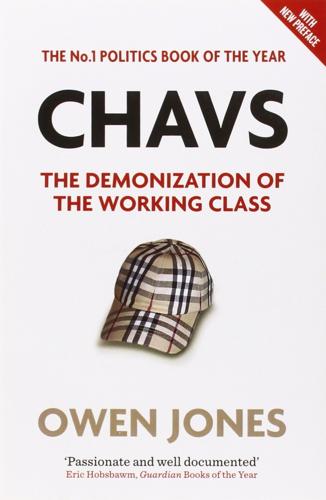
Chavs: The Demonization of the Working Class
by
Owen Jones
Published 14 Jul 2011
When I discussed the rise of the hire-and-fire service sector with leading Tory MP David Davis, he was soothingly sceptical. 'There's no real reason to believe that, let's say, Sainsbury's would have any less job security than somebody working in Ford. It's the reverse in many ways, because they're growing. So I think the hire-and-fire ideayou've just run past me a piece of 0 ld Labour mythology, frankly. The idea that the only good jobs are ones where you have to lift a half-ton weight every day is unmitigated crap.' But the evidence contradicts him: every passing day sees the further consolidation of a hire-and-fire workforce in Britain.
…
Both Mary and Carl work with a number of part-time and temporary staff. Their numbers have soared over the last thirty years as successive governments have striven to create a 'flexible' workforce. In part, they have made it far easier and cheaper for bosses to hire and fire workers at will. But we have also been witnessing the slow death of the secure, fulltime job. There are up to 1.5 million temporary workers in Britain. A 'temp' can be hired and fired at an hour's notice, be paid less for doing the same job, and lacks rights such as paid holidays and redundancy pay. Agency work is thriving in the service sector, but an incident at a car plant near 0xford in early 2009 illustrates where the rise of the temp has brought us.
…
Service-sector jobs are on the whole cleaner, less physically arduous, and are better at including women (even if they are still disproportionately concentrated in the lowest paid and most insecure work). But such work is often less well paid, lacks the same prestige, and is more likely to be hire-and-fire. Call centres and supermarkets do not form the basis of communities in the same way that the mine, factory, or dock did. I was not, though, calling for young men to be sent down the pits again. Just because I was arguing that what replaced these industries was in some important ways worse doesn't mean that I advocated a return to a vanished world.

How Boards Work: And How They Can Work Better in a Chaotic World
by
Dambisa Moyo
Published 3 May 2021
The best boards are continuously striving to put in place a strategy that survives come hell or high water—a strategy that does more than just generate profits but carries the company through the very worst market conditions, winning in all environments. As we will see in the next chapter, executing this strategy requires the very best leadership—not only from the board, but also from the CEO. This is why leadership selection is such a critical task for the board. CHAPTER 2 Hiring (and Firing) the CEO—and the Board CEO SUCCESSION—THE HIRING (AND FIRING, WHEN IT IS WARRANTED) OF the company chief executive—is one of the key responsibilities of the board. Just as important is refreshing the board’s own membership, recruiting those who will oversee the corporation smoothly and competently through the years. The selection of leadership is the one function over which the board has complete control and where management does not set the terms of debate, furnish key information, or drive the process.
…
Classification: LCC HD2745 .M69 2021 | DDC 658.4/22—dc23 LC record available at https://lccn.loc.gov/2020057073 ISBNs: 978-1-5416-1942-5 (hardcover), 978-1-5416-1941-8 (e-book) E3-20210330-JV-NF-ORI Contents Cover Title Page Copyright Dedication Preface Introduction CHAPTER 1 Setting the Company Strategy CHAPTER 2 Hiring (and Firing) the CEO—and the Board CHAPTER 3 A Culture Revolution Enters the Boardroom CHAPTER 4 Five Critical Issues No Board Should Ignore CHAPTER 5 Innovate or Die: The Existential Crisis of the Twenty-First-Century Board Acknowledgments Discover More About the Author Bibliography Also By Dambisa Moyo Praise for How Boards Work To current management and employees, so they know what their boards do To investors, so they appreciate boards’ limits and possibilities To policymakers and regulators, so they are more aware of the trade-offs that boards face To current board members, to help guide their reform agenda To future board members, to help them grasp the board role To the general public, so they better understand why successful boards and well-governed corporations are critical for society at large Explore book giveaways, sneak peeks, deals, and more.
…
Every one of these companies relies on a dozen or so people, sitting at a boardroom table, to oversee a vast and varied enterprise. In my time serving on corporate boards, I have witnessed and helped respond to some of the most extreme and testing situations in the corporate world, including the death of a chairman of the board while he was in office; multiple CEO successions, and hiring and firing of chief executives; buying and selling companies, including the sale of a global corporation for $100 billion, the largest global mergers and acquisitions transaction in 2016; enormous regulatory fines stemming from a crackdown on corporate behavior; activist shareholders seeking to disrupt the company strategy; the unique challenges of having an insider—a large, dominant, usually family member—shareholder on the board; expropriation of company assets by host governments; and massive corporate restructuring prompted by a share-price collapse.
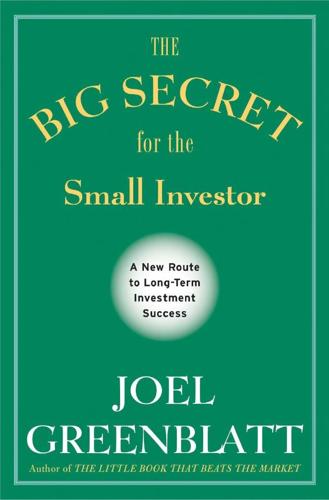
The Big Secret for the Small Investor: A New Route to Long-Term Investment Success
by
Joel Greenblatt
Published 11 Apr 2011
Several research studies tracked the investments of these large, “professionally” managed fund allocators (such as foundations, endowments, and pension plans) and analyzed their decisions to hire and fire investment managers. The results weren’t pretty.1 Most managers were hired due to good recent performance. Most managers that were fired had recently underperformed the market averages.2 In short, these “professional” fund allocators would have been better off staying home! In the years following hire and fire decisions, the recently fired managers significantly outperformed the market while the recently hired didn’t show any outperformance at all.
…
Since most clients can only evaluate performance results (rather than the quality of the work that went into each investment decision), there have been a million ways developed over the last few decades to slice and dice these performance data into all kinds of ratios and statistics. The only thing is that evaluating past performance data for even a several-year period may be unhelpful when it comes to predicting future success. Yet almost all hire-and-fire decisions made by clients (both individual and professional) are based on a manager’s performance during the last couple of years. While this is perhaps understandable, it forces most managers to concentrate on short-term performance. As we’ve already discussed, even if a manager has a healthy long-term perspective and is willing to wait out short-term underperformance, most clients are not!

Swimming With Sharks: My Journey into the World of the Bankers
by
Joris Luyendijk
Published 14 Sep 2015
One strike and you are out of the circle.’ His impression was that women are bullied more than men when they resign, ‘perhaps because women are believed to be more susceptible’. In his classic book Liar’s Poker, the American writer and former front-office banker Michael Lewis summarises the mentality behind this hire-and-fire system as: ‘You want loyalty? Hire a cocker spaniel.’ And why shouldn’t bankers act like footballers and seek out the most prestigious or best-paying club? Particularly since the financial sector is extremely sensitive to the ups and downs of the economy; the easier banks can get rid of people in bad times, the more likely they are to hire them again when the economy swings back.
…
That is the commonly accepted argument in favour of zero job security. In all the interviews, virtually no front-office bankers made the case for employment rights or any form of job protection. At the same time many spoke extremely negatively about the atmosphere in their banks and, digging deeper into the causes of the ‘toxic culture’, they often hit on the hire-and-fire mentality. People are not appliances; a machine that might be discarded at any point is unaware of this fact and will function exactly like a machine that has a cosy spot reserved in the factory until the end of its days. Humans, however, are influenced by the awareness of their vulnerability and adapt their behaviour accordingly.
…
‘I remember that if I voiced an opinion based on moral considerations, I’d get looked at as if I were an alien,’ said one former investment banker, while a risk and compliance officer recalled being branded a ‘socialist’ for asking about the social purpose of a financial product. Most interviewees, however, seemed to take the logic governing their sector for granted and pointed to the equally amoral hire-and-fire culture: this is simply how it works around here. The pattern of scandals and crashes that had dominated the past few decades began to make more sense in this context. Consider what happened to the financial products developed in the 1970s to deal with increasing swings (‘volatility’) in the value of interest rates and currencies.
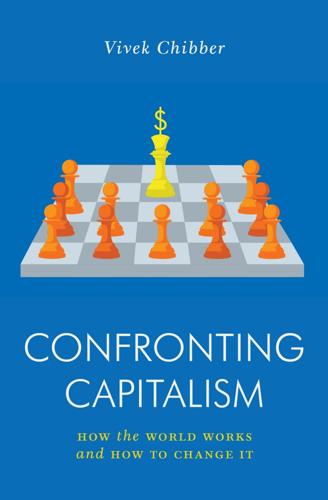
Confronting Capitalism: How the World Works and How to Change It
by
Vivek Chibber
Published 30 Aug 2022
This is because he is the more powerful party of the two. He has the power to hire and fire, and the worker is rarely in a position to afford losing her job. When we put these two facts together, we see the roots of one of the most basic facts about capitalism—even though workers and capitalists work together to produce their firm’s revenue, how they go about doing it and how the benefits are distributed are decided by the boss. This enables capitalists to set the terms of work in a way that they reap the gains of economic growth, while labor’s vulnerability forces it to absorb most of the costs. Employers’ power to hire and fire enables them to organize work in such a way that the benefits come to them, while employees are forced to adjust their lives around the demands of work.
…
This, in turn, massively increases employers’ bargaining power. Even in advanced industrial countries, the situation has deteriorated in the recent past. First of all, the decline in unions has allowed employers to shift from long-term contracts to short ones. For decades, unions fought for, and won, restrictions on employers’ unilateral power to hire and fire. They pushed hard to restrict firms’ reliance on temporary or short-term workers, and in so doing shifted the balance toward more long-term employment and, with it, greater benefits to workers. Of course, employers never stopped trying to recapture their power, and as the unions’ influence declined in much of the Western world in the 1980s and ’90s, so did the proportion of “good jobs.”
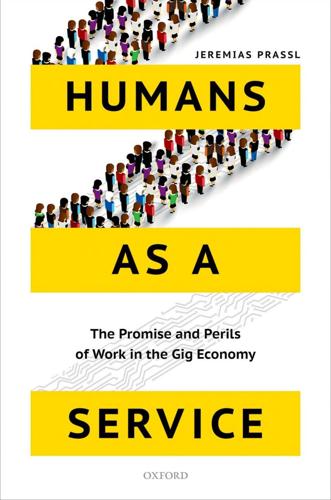
Humans as a Service: The Promise and Perils of Work in the Gig Economy
by
Jeremias Prassl
Published 7 May 2018
He famously identified the bilateral contract of employment as the secret behind entrepreneurs’ tight control over their workforce: in return for regular wages, employees submit- ted themselves to the employer’s orders.2 Employment and social security law responded to ensure that these powers were exercised responsibly. A contract of employment gives employers the right to control everything from how work is done and paid to hiring and firing employees. It also regulates how these powers might be exercised. An employer cannot force its workers to labour all day long, must pay them a minimum wage, and may not illegally discriminate against particular groups in hiring and firing.3 Employers deduct payroll taxes, and contribute to pensions and insurance payments; independent contractors can set higher rates in return for being responsible for their own tax returns and long-term economic security
…
The solution lies in adopting a more flexible approach to determining who should be responsible. * * * Playing by the Rules 101 A Functional Concept of the Employer In legal terms, we can analyse employers’ powers—and the law’s control over them—as ‘functions of the employer’. In a previous book exploring The Concept of the Employer, I identified five such functions, from hiring and firing to control over work and pay.24 Traditionally, a single party—Coase’s famous ‘entrepreneur-coordinator’— would have exercised all of these functions, controlling her employees through the contract of employment. Independent entrepreneurs, on the other hand, set their own wages, determine which work they are willing to do, and take the risks (and reap the rewards) of engaging in market competition.
…
Oxford Professors Paul Davies and Mark Freedland have long criticized the ‘constant and increasing counter-factuality’ of the traditional approach: Paul Davies and Mark Freedland, ‘The complexities of the employing enterprise’, in Guy Davidov and Brian Langile (eds), Boundaries and Frontiers of Labour Law (Hart 2006), 274. In a world of fissured work, outsourcing agencies, and, now, on-demand platforms, it can be difficult to identify a single employer exercising control over its employees. 24. The five employer functions are: (1) hiring and firing (which category includes all powers of the employer over the very existence of its contract with a worker, from initial vetting to dismissal); (2) work (when working, employees owe duties to their employer, including, in particular, a duty to provide labour and its results); (3) pay (one of the employer’s fundamental obligations, this also includes social security and pension contributions); (4) control (employers tell their workers what to do—and sometimes how to do it); and (5) profits and losses (employers are entrepreneurs—they are in the business of making a profit, whilst also being exposed to any losses that may result from the enterprise).
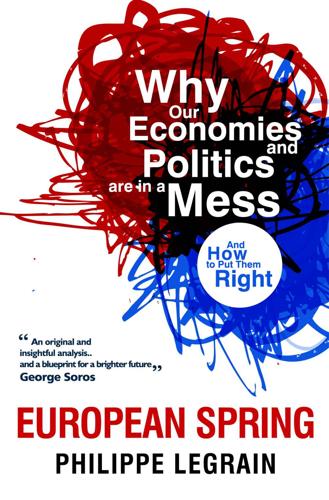
European Spring: Why Our Economies and Politics Are in a Mess - and How to Put Them Right
by
Philippe Legrain
Published 22 Apr 2014
“We invest in quality, comfort and a product that is different from others out there.”90 A final mistake has been to assume that reforms to boost the supply side of the economy in the longer term could substitute for short-term measures to boost demand. Even in good times, most reforms take time to bear fruit. Often, in fact, their initial impact is negative. For example, making it easier to hire and fire workers will lead to a shake-out of unproductive workers, pushing up unemployment, worsening public finances (as tax revenues fall and spending on benefits increases) and depressing the economy, because the newly unemployed workers will spend less. Eventually, those workers will be redeployed to more productive uses – but in a recession when demand is depressed, credit is crunched and barriers to starting new businesses are high, this will take much longer than usual.
…
Adaptable As well as coping with unexpected change and predictable variability, an adaptable economy needs to be able to adjust to changes that seem more enduring: the rise of emerging economies, the spread of new digital technologies, a desire for more eco-friendly products. To do so, people, businesses, organisations and governments need the freedom, the capacity and the willingness to adapt. At least four types of barrier may impede them. Laws and regulations may restrict hiring and firing, prevent businesses from growing or shrinking, or forbid them from deploying a new technology. A lack of competition may also impede adjustment: dominant players may stifle the growth of nimbler upstarts or the deployment of technologies that undermine their core business. The absence of suitable labour, capital and supportive infrastructure is a third barrier: companies may not be able to find people with the right skills locally, attract the investment they need to grow or access the competitively priced high-speed internet (or efficient ports) that they need.
…
In many European countries, the availability of jobs is artificially restricted even in good times by taxes that make it prohibitively expensive to hire people and employment regulations that make it difficult and costly to fire them. Jobseekers may also lack the skills and attributes that employers are looking for – and because hiring and firing is expensive, employers are deterred from taking a chance on them and training them. Last but not least, some are dissuaded from working by welfare rules that penalise work, while others do not want to work and welfare gives them the option of remaining idle. In order to succeed, reforms need to tackle all three aspects of the problem together.
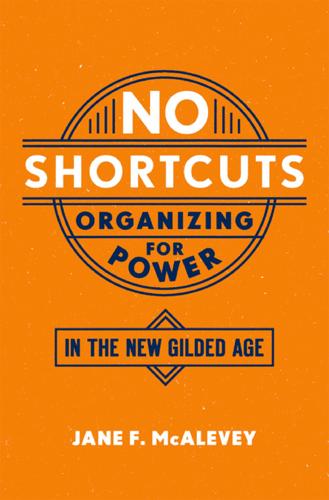
No Shortcuts: Organizing for Power in the New Gilded Age
by
Jane F. McAlevey
Published 14 Apr 2016
It resulted in several key changes to longstanding policy: Local school councils (LSCs), consisting of one principal, six parents, two teachers, and two community members, were created and empowered to hire school principals and make budgetary decisions; principals no longer received tenure; and principals were empowered to hire and fire teachers. Hiring principals, hiring and firing teachers, and setting budgets had previously been centralized functions of the Board of Education. The law explicitly barred teachers from running for the council as either parents or community members, despite the vast number of teachers who were both. Part of what makes teachers and teachers’ unions so interesting in the educational production process is that they are also parents, meaning community members with children of their own.
…
As Edelman tells the story, in his workshop on how to bust teachers’ unions even in Democratically-controlled states: “So in this intervening time, Rahm Emanuel is elected mayor, he won on the first ballot, and he strongly supports our proposal … that was another shoe that dropped on the Chicago Teachers Union because they didn’t support him.”54 The Stand for Children legislative proposal would again strip teachers of the right to collectively bargain over schedules—an item that had been negotiable historically, had been stripped away by the 1995 Amendatory Act, and then reinstated in 2001 as a negotiable item, but under a compliant union that quickly negotiated a deal to lengthen the teaching day. Now, because a less compliant teachers’ union was in power, it was taken off the table again. And the Stand for Children legislation did far more than that: It included a frontal assault on tenure that would empower principals to hire and fire teachers, and mandated that at least one-quarter of the decision to fire be based on student test scores. Each of these measures took aim at unions. The final provision of the proposed legislation attempted to bar teachers from striking. Stand for Children started the bargaining with an outright ban, and counted on “compromising” with a deal that would allow a strike, but dependent on what they believed would be an impossible criterion: 75 percent of all teachers would have to show up at the polls for a strike authorization vote to be valid (a rather amazing criteria given that turn out in typical elections in the United States hovers in the 20 to 30 percent range).
…
By advocacy, as I defined it in Chapter Two, I mean groups like the Center for Constitutional Rights, the American Civil Liberties Union, or Greenpeace—groups that merely campaign on behalf of some broad societal goal and/or on behalf of a constituency or constituencies. By contrast, Make the Road’s members are active players in campaigns and have decision-making in such key areas as hiring and firing staff, approving budgets, and deciding on the direction and priorities of the organization. They also understand that mass collective action is a key source of leverage. Another sign that Make the Road goes beyond a pure advoacy approach is that they are not simply trying to win specific legislation or material benefits, but also trying to make long-term, structural changes in the power structure of the wider society, shifting the balance of power toward the organization’s base constituency and away from the forces that oppress them.
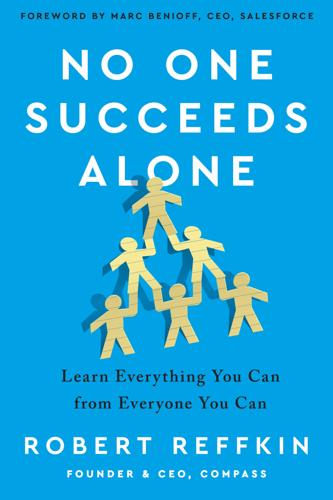
No One Succeeds Alone
by
Robert Reffkin
Published 4 May 2021
Index A | B | C | D | E | F | G | H | I | J | K | L | M | N | O | P | Q | R | S | T | U | V | W | X | Y | Z B A Better Chance, 17, 43, 63 A abundance mindset, 170 accountability, 38–39, 181–83 adaptability, 9–10, 169–71, 186, 194–96 Adashek, Jeannie, 93 Allon, Ori belonging and community, 195–96 first meeting, 164–66 as mentor, 82, 181 origin of Compass, 104 pivot at Compass, 206–12 recruitment, 176–78 America Needs You, 49, 158–59 See also New York Needs You authentic self, 9, 58, 73–76, 189–92 See also strengths, maximizing balance, work-life, 127–29 be solutions driven (principle of entrepreneurship), 27–30, 40–43, 54–66, 88–90, 109–11, 150–62 being Black and adaptability, 9–10 disowned by grandparents, 24–25 expectations, 122–23 in New York City, 121 professional belonging, 194 in relationship with college girlfriend, 201–2 in school, 13–15, 21, 62, 215–18 See also discrimination; immigrants; privilege and advantage belonging creating your own community, 194–96 defined, 8–9 discrimination and, 215–18 vs. impostor syndrome, 130–31, 189–92 purpose and, 49–50 socioeconomic background, 67–69 Belonging Walls, 196 Benioff, Marc, ix–x Benís (wife) on acceptance of flaws, 73–76 childhood, inequality of, 66–69 as coach, 100 college opportunity, 88–90 coming to New York, 64–66 home and rediscovering herself, 69–73 as inspiration, 160 as life partner, 137–40 society’s unwritten rules, 85–86 work-life balance, 128–29 Berkeley house, 58–61 bias, 166–68 Black executives and mentors, 94–98 bounce back with passion (principle of entrepreneurship), 20, 69–73, 109–11, 197–212 Byard, Eliza, 123 C celebration, of successes, 134–35, 158 change, at Compass, 206–12 Chenault, Ken, 94, 138, 170 coaches, 98–101 Cohn, Gary, 130–31 collaborate without ego (principle of entrepreneurship), 11–13, 46–47, 73–76, 88–90, 98–101, 109–11, 172–83 Columbia University accelerated graduation, 40–43 admission and anticipation, 134–35 application to, 27–29 college application essay, 32–36 communication of change, 209–12 handwritten notes, 93, 166 with mentors, 86–88, 91–93 with new employees, 132–34 observation of facial expressions, 140–42 speaking out for what is right, 118–19, 215–18 Compass change, challenge of, 209–12 coronavirus pandemic, 169–71 culture, 125–27, 151–53, 181–83 early pivot, 206–9 hiring and firing, 173–79 on innovation, 144–45, 147–49 origin of, 97–98, 103–5 welcoming new employees, 132–34 Compass Academy, 171 Compass Concierge, 149 compensation, asking for a raise, 161–62 constructive feedback, 82–85 Contraband (school newspaper), 216–18 Cornell, Henry, 97, 99, 187, 191 coronavirus pandemic, 169–71 Customer Feedback Forum, 145–47 customers (real estate agents) feedback from, 145–47, 207–9 focus on, 23–24, 144–45, 166–68 D decision-making tools for forgiveness, 24–27 hiring and firing tests, 179–81 on life partner, 137–40 networking, 86–88 perspective, long-term, 117–19 for success, 20 DiBiasio, Dolf, 43–44 discrimination adapting oneself to society, 9–10 belonging and community, 194–96, 215–18 dreams and, 121–23 father and, 11–12 in schools, 13–15 skeptics, 29–30 socioeconomic, 67–68 stereotypes and bias, 166–68 unwritten rules, of society, 85–86 See also immigrants DJ business, 23–24, 34–35 Dodge & Cox internship, 63 dream big (principle of entrepreneurship), 2, 17–20, 27–30, 36–39, 54–63, 73–76, 109–11, 113–23 dreams attachment to vs. change, 209–12 of author, 49, 119–21 combining goals, 101–3, 129 energy and, 21 measuring, 125–27 motivation to achieve, 159–61 resilience and, 198–201 for this book, 3–4 E Eduard Lee (father) in college essay, 32–33 ego and fatherhood, 11–13 family life, 7 gratitude, 186 as motivational factor, 160–61 education Benís and, 69, 88–90 discrimination vs. support for, 13–15 Elida and, 65, 68 opportunities for, 16–18 strengths and, 188–89 of whole person, 36–39 ego, 11–13, 110, 138, 144, 145, 173 Elida (mother-in-law), 64–69, 78, 89, 129 empathy, 25 energy for accomplishing dreams, 18–19 dreams and success, 21–22 from negativity, 27–30 from people, 155–59 as test, 180 See also motivation; taking action entrepreneurs and entrepreneurship customers and, 23–24 defined, 63 overview and principles of, 109–11 rules, flexibility of, 40–43 work-life balance, 127–29 exit strategy, 129–32 expectations, 14, 38, 98, 123 F failure as feedback, 147–49 losing when right, 99–100 mothers and, 53 Reffkin on, 2–3 vs. strengths, 185 See also resilience family, importance of, 76–78, 117–19, 160 fear, 146–47, 148, 170 feedback constructive, importance of, 82–85, 99 from customers, 145–47, 206–9 diversity and variety in, 147–49 facial expressions, 140–42 learn from reality, principle of, 136–37 learning from pain, 12–13, 201–6 on life partner, 137–40 listening and humility, 142–45 from mentees in nonprofit, 158–59 recruitment and, 177–79 success and, 20 firing employees, 173–75, 179–81 Floyd, George, 118, 122 forgiveness, 24–27 Foster, Dick, 96, 138–39, 192 G Global Horizons, 62 Goldman Sachs, 44, 97–99, 103, 130–32, 187, 191 grandfather, 24–25, 54–56 gratitude, 77–78, 92–93, 168–69, 186–88 grudges, 24–27 guilt, 73–75 H Haas School of Business, 63 Henry Crown Fellows, 102 hiring tests, 179–81 home, importance of, 69–73 humility, 142–45 hustle, importance of, 48–50 I immigrants, 7, 55, 85–86, 109, 118, 195 impostor syndrome, 130, 189–92 innovation, 143 inspiration, 101–3 invention, 143–44 J Jobs, Steve, 30, 178 Jordan, Vernon, 93, 94–98 Julpan (company), 165 K “Kids in the Conference Room, The” (article), 44 L Lazard, 49, 93, 95, 96, 97, 130, 205 leadership characteristics of, x, 170 coronavirus pandemic, 169–71 employee communication, 132–34 Jordan, Vernon, lessons from, 94–98 listening, 98–101, 142–45 learn from reality (principle of entrepreneurship), 20, 23–24, 81–85, 90–94, 98–103, 109–11, 136–49 Lee, Eduard Rodney.
…
This approach has helped us to recruit fantastic people and propel them forward once they arrive. Ideally, on their first day, every new hire already knows that their journey and our journey are heading in the same direction—and that the more passion they pour into their work, the more progress they’ll make toward their own goals. Five tests for hiring and firing I never did that well on tests in school, but there are a number of simple tests that I’ve found helpful in professional life. They’re valuable because the more we think about something, the more our minds try to play tricks on us. We second-guess, we let doubt and fear creep in, we hesitate, we overthink.

The death and life of the great American school system: how testing and choice are undermining education
by
Diane Ravitch
Published 2 Mar 2010
Good schools under private management would proliferate, while bad schools would be closed down by market forces (the exit of disgruntled parents) or by a watchful government. Some of the new generation of reformers—mainly Republicans, but not only Republicans—imagined that the schools of the future would function without unions, allowing management to hire and fire personnel at will. With the collapse of Communism and the triumph of market reforms in most parts of the world, it did not seem to be much of a stretch to envision the application of the market model to schooling. Like many others in that era, I was attracted to the idea that the market would unleash innovation and bring greater efficiencies to education.
…
He repeatedly decried the lack of a national curriculum, national testing, and “stakes” attached to schooling; these, he said, were huge problems that would not be solved by letting a thousand flowers bloom or by turning over the schools to entrepreneurs. Ironically, as charter schools evolved, the charter movement became increasingly hostile to unions. Charter operators wanted to be able to hire and fire teachers at will, to set their own salary schedule, to reward teachers according to their performance, to control working conditions, and to require long working hours; with few exceptions, they did not want to be subject to a union contract that interfered with their prerogatives as management.
…
Data-driven education leaders say that academic performance lags because we don’t have enough “effective” teachers, the ones whose students consistently improve their standardized test scores. The major obstacle to getting enough effective teachers and getting rid of ineffective teachers, they say, is the teachers’ unions. Union contracts provide job security that prevents administrators from hiring and firing teachers at will. If there were no unions, no union contracts, and no tenure, then superintendents could get rid of bad teachers and hire only effective teachers. Without the union, teachers’ salaries would be based on the test scores of their students, rather than on their seniority and credentials.
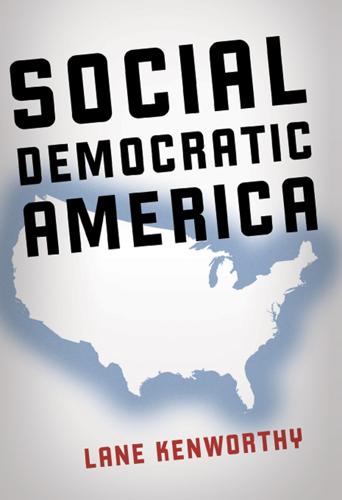
Social Democratic America
by
Lane Kenworthy
Published 3 Jan 2014
Given these costs, it isn’t surprising that some object to the expansion of public insurance. At the same time, insurance has economic benefits. Schooling and medical insurance improve productivity via better knowledge, creativity, and health. Bankruptcy protection encourages entrepreneurship. Unemployment compensation reduces efforts to restrict employers’ flexibility in hiring and firing, and it facilitates employees’ skill upgrading and geographic mobility.10 Programs that boost the income of poor households, such as the Child Tax Credit and the EITC, increase the future employment and earnings of children in those households.11 Many insurance programs reduce stress and anxiety, enhancing productivity.
…
The Heritage Foundation, a conservative think tank, partners with the Wall Street Journal to score countries on ten dimensions of economic freedom: security of property rights, freedom from corruption, business freedom (the right to establish and run an enterprise without interference from the state), labor freedom (absence of hiring and firing restrictions and other limitations on work conditions), monetary freedom (a stable currency and market-determined prices), trade freedom (absence of regulatory barriers to imports and exports), investment freedom (absence of restrictions on the movement of capital), financial freedom (a transparent and unrestricted financial system), low taxes (“fiscal freedom”), and low government spending.
…
Government spending: total government expenditures as a share of GDP, in 2007. Data source: OECD, stats.oecd.org. The correlation is –.14 (with Italy excluded). “Asl” is Australia; “Aus” is Austria. In other words, a nation can tax and spend quite heavily while still giving economic actors considerable freedom to start and operate a business, allocate capital, hire and fire employees, and engage in all manner of economic activities. This approach is sometimes called “flexicurity.” Government allows individuals and firms substantial freedom, with one exception: they pay a significant share of their earnings to the collectivity. This revenue is used to enhance security and opportunity and to ensure that prosperity is widely shared across the society.
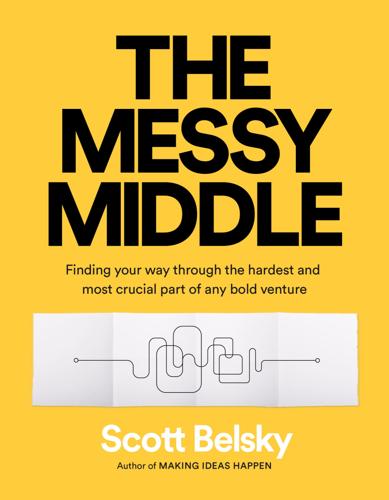
The Messy Middle: Finding Your Way Through the Hardest and Most Crucial Part of Any Bold Venture
by
Scott Belsky
Published 1 Oct 2018
EMBRACING THE LONG GAME Playing the long game requires moves that don’t map to traditional measures of productivity. Strategy is nourished by patience. Break the long game down into chapters. Just stay alive long enough to become an expert. Do the work regardless of whose work it is. OPTIMIZE OPTIMIZING YOUR TEAM BUILDING, HIRING, AND FIRING Resourcefulness > Resources Initiative > Experience Diversity drives differentiation. Hire people who have endured adversity. Seek people with whom discussions evolve by a step function. If you avoid folks who are polarizing, you avoid bold outcomes. Cultivate your team’s immune system, and occasionally suppress it.
…
If your team is not in a good place or your office culture is lacking, your most valuable resources will not be able to make great products or execute well over time. Your team genuinely needs to be as important to you as what you’re making. I have met many founders who obsess over product and steamroll their team. Most of them have failed. Team comes first. BUILDING, HIRING, AND FIRING Resourcefulness > Resources As your business grows and your plans become more ambitious, you will want to grow your team. When it comes to scaling, the easiest path most leaders default to is to hire. More heads, more hands, more work done. But the best managers know that growing the team is not always the answer.
…
DO THE WORK REGARDLESS OF WHOSE WORK IT IS. “The best way to complain”: James Murphy, “The Best Way to Complain Is to Make Things,” Startup Vitamins, accessed March 22, 2018, http://startupquotes.startupvitamins.com/post/41941517470/the-best-way-to-complain-is-to-make-things-james. OPTIMIZE BUILDING, HIRING, AND FIRING RESOURCEFULNESS > RESOURCES Their first satellite: James Temple, “Everything You Need to Know About Skybox, Google’s Big Satellite Play,” Recode, June 11, 2014, www.recode.net/2014/6/11/11627878/everything-you-need-to-know-about-skybox-googles-big-satellite-play. “I’ve seen many startups shift”: Jessica Livingston, “Subtle Mid-Stage Startup Pitfalls,” Founders at Work, April 29, 2015, http://foundersatwork.posthaven.com/subtle-mid-stage-pitfalls.
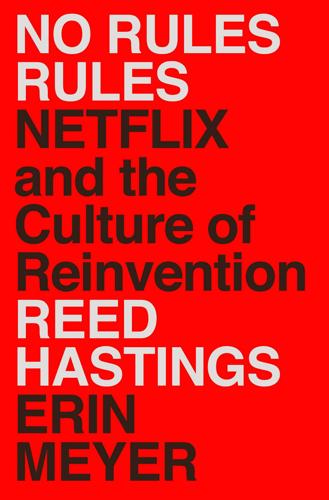
No Rules Rules: Netflix and the Culture of Reinvention
by
Reed Hastings
and
Erin Meyer
Published 7 Sep 2020
But if the dilemma is linked to an employee’s personal situation, it’s up to that person to share details if he chooses. QUIZ SCENARIO 4: WHEN YOU SCREW UP You are still the founder of a start-up with one hundred employees. This is a tough job, and despite your best efforts, you make a series of serious mistakes. Most notably you hire and fire five sales directors within five years. You keep thinking you’ve found a good candidate. But each time, as you begin to work together, you realize the new recruit doesn’t have what it takes to do the job. You realize that these mis-hirings are entirely due to your poor judgment. Do you admit this to your workforce?
…
Earlier in my career, in the early days of Pure Software, I was too insecure to talk openly about mistakes with my staff, and I learned an important lesson. I was making a lot of leadership mistakes and it weighed on me heavily. Beyond my general incompetence at people management, I had indeed hired and fired five sales directors in five years. The first two times, I could blame the person I’d hired, but by the fourth and fifth failures, it was clear the problem was me. One thing I have always done is put the company before myself. Certain my own incompetence was bad for the organization, I went to the board and, as if in the confessional, detailed my inadequacies and offered my resignation.
…
Many of these items keep the organization from changing quickly when the environment shifts. Pay-per-performance bonuses, Management by Objective, and Key Performance Indicators motivate employees to stay on a preset path, making it difficult to quickly dump one project and pick up another. Whereas Performance Improvement Plans (along with any hiring and firing processes) make it difficult to swap out and in employees quickly as business needs change. If your goal is to build a more inventive, fast, and flexible organization, develop a culture of freedom and responsibility by establishing the necessary conditions so you can remove these rules and processes too.

How Will You Measure Your Life?
by
Christensen, Clayton M.
,
Dillon, Karen
and
Allworth, James
Published 15 May 2012
If you recount our discussion of emergent and deliberate strategy—the balance between your plans and unanticipated opportunities—then you’ll know that getting something wrong doesn’t mean you have failed. Instead, you have just learned what does not work. You now know to try something else. It also goes without saying that there are some tools available to businesses that we just can’t use in our personal lives. For example, organizations have the ability to hire and fire employees to shape the culture they want. You can’t hire your kids for cultural fit. You don’t get to choose how they’re wired. And much as you might want to sometimes, you can’t fire them. (Thankfully, they can’t fire you, either.) Nevertheless, what I offer you in the following chapters can help because many of the problems we encounter in the workplace are often fundamentally the same in nature as the problems we encounter at home.
…
Capabilities are dynamic and built over time; no company starts out with its capabilities fully developed. The most tangible of the three factors is resources, which include people, equipment, technology, product designs, brands, information, cash, and relationships with suppliers, distributors, and customers. Resources are usually people or things—they can be hired and fired, bought and sold, depreciated or built. Many resources are visible and often are measurable, so managers can readily assess their value. Most people might think that resources are what make a business successful. But resources are only one of three critical factors driving a business. Organizations create value as employees transform resources into products and services of greater worth.
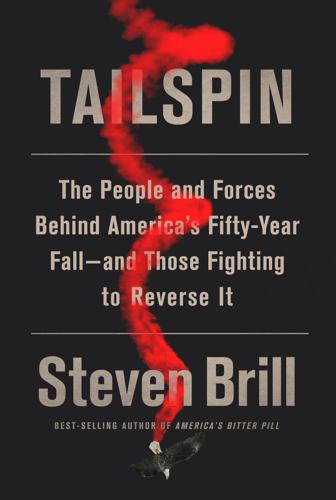
Tailspin: The People and Forces Behind America's Fifty-Year Fall--And Those Fighting to Reverse It
by
Steven Brill
Published 28 May 2018
(Most of the managers at the hospitals with the doctored waiting lists had consistently received thousands of dollars in performance bonuses.) In other words, the civil servants have a moat, too. As with much of what now ails America, protecting government workers with a civil service system began as sensible reform. Since the Revolution, hiring and firing federal workers had been corrupted by politics and cronyism. What had been an unspoken practice was institutionalized by the populist president Andrew Jackson, who openly championed what became known as the spoils system in 1829. Following the assassination of President James Garfield in 1881 by a former government worker apparently enraged at being the victim of the spoils system, a growing movement for change produced the Civil Service Reform Act of 1883.
…
The law required that workers be hired on the merits after competing in qualifying tests. Initially, only about one in ten jobs were covered, but coverage grew rapidly. A series of statutes and court decisions gradually expanded the hiring protections to include limits on firing workers, too. A reform, initiated by President Carter in 1978, applied more rules to the hiring and firing process through a new Office of Personnel Management and a Merit Systems Protection Board, set up to adjudicate claims of unfair personnel practices. The law also added a “senior executive service” category intended to select and encourage the best workers, and attempted, with no success, to improve the rigor of performance reviews across all job categories.
…
If other potential recruits in priority areas, such as cyber security or fixing the VA’s customer service IT systems, do consider government service, it is likely to involve working for the private contractors that ring the Beltway doing outsourced work for the government at exorbitant rates that are typically based on how many hours of staff time it takes to do the job. The contractors’ performance has been so bad, yet so expensive, that the same Paul Light who attacked the government’s hiring and firing system in 2000 has written that the government also “lacks any system at all for managing the government’s vast, hidden workforce of contractors and consultants who work side-by-side with civil servants.” THRIVING IN THE SWAMP Those contractors have thrived, powered by a network of lobbyists and former or future employees working at the agencies that give them contracts, and by members of Congress pushed by lobbyists to reward them and ignore their failures to produce on prior contracts.

Futureproof: 9 Rules for Humans in the Age of Automation
by
Kevin Roose
Published 9 Mar 2021
Maneuvering like this may become much more common as machines take on more power within organizations. In the future, we may all feel much more like YouTubers and Uber drivers—subjects at the mercy of a capricious machine that has the power to make or ruin our careers. Workplace AI will not only hire and fire us, but guide our daily performance, correct us when we slip up, and praise us when we do good work. “Playing office politics” will come to mean “reverse-engineering a piece of workforce management software.” A “hostile work environment” might be the result of a poorly trained machine learning model rather than an abusive boss.
…
In fact, some of these executives are eager to give AI big pieces of their own jobs. In a recent article in the MIT Sloan Management Review, two executives predicted the rapid rise of “self-driving companies,” businesses in which human managers are few and far between, and most corporate decisions, including hiring and firing, are made by algorithms. Respectfully, these people are out of their minds. In fact, if you talk to the computer scientists working on the front lines of AI and machine learning, they’ll tell you that even the best AI in existence is still far from being worthy of this kind of carelessly placed trust.
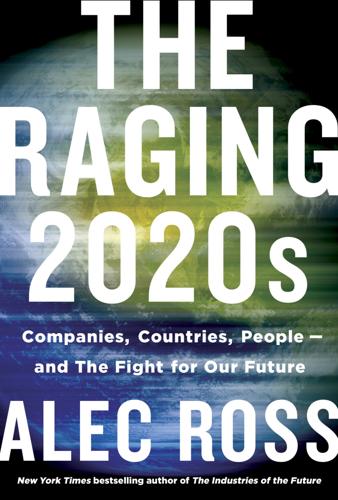
The Raging 2020s: Companies, Countries, People - and the Fight for Our Future
by
Alec Ross
Published 13 Sep 2021
They have developed “a really thoughtful understanding of what the purpose of the state is in society,” said Zakaria. Today, the state defends free trade and enacts policies to encourage entrepreneurship and private-sector growth. Policy makers shy away from antitrust enforcement and other government interference in the economy. Companies are permitted to hire and fire employees without getting bogged down in excessive regulation or legal battles (though Nordic workers still enjoy more protections than their American counterparts). As we previously discussed, the Nordic countries also have a strong, multitiered organized labor apparatus that negotiates fair pay and benefits for workers across the economy.
…
The comparatively light-touch labor laws in Nordic countries give companies certain advantages over their counterparts in other parts of Europe. They are the reason Helsinki, Stockholm, and Copenhagen boast some of the most vibrant start-up scenes in the world. In Mediterranean countries like Spain, France, and Italy, companies looking to hire and fire workers often find themselves bogged down in bureaucratic processes that make it difficult to impossible to do so. While these countries generally outperform Nordics in traditional industrial sectors, they are not effectively competing with them in high-tech industries and certainly not among start-ups.
…
Today, the state defends free trade: Michael Cembalest, “Lost in Space: The Search for Democratic Socialism in the Real World, and How I Ended Up Halfway around the Globe from Where I Began,” J.P. Morgan, June 24, 2019, https://privatebank.jpmorgan.com/content/dam/jpm-wm-aem/global/pb/en/insights/eye-on-the-market/lost-in-space-the-search-for-democratic-socialism-in-the-real-world-and-how-i-ended-up-halfway-around-the-globe-from-where-i-began.pdf. Companies are permitted to hire and fire: Fareed Zakaria, “Bernie Sanders’s Scandinavian Fantasy,” Washington Post, February 27, 2020, https://www.washingtonpost.com/opinions/bernie-sanderss-scandinavian-fantasy/2020/02/27/ee894d6e-599f-11ea-9b35-def5a027d470_story.html; Matt Bruenig, “Fareed Zakaria Is Completely Ignorant about the Nordics,” People’s Policy Project, March 2, 2020, httxtps://www.peoplespolicyproject.org/2020/03/02/fareed-zakaria-is-completely-ignorant-about-the-nordics/.
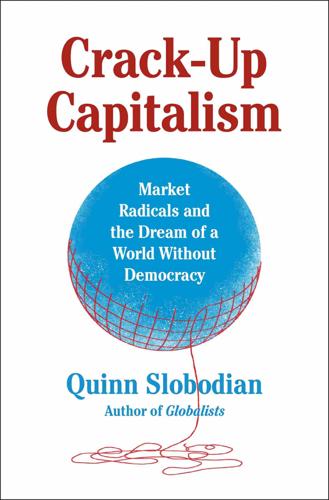
Crack-Up Capitalism: Market Radicals and the Dream of a World Without Democracy
by
Quinn Slobodian
Published 4 Apr 2023
For $4,800 (around $17,000 in today’s money), you could enjoy videotapes of the man whom Time called Uncle Miltie at home or in the classroom.25 “By now,” one journalist wrote, “the cherubic countenance and gnome-like figure of economist Milton Friedman are standard features on the American intellectual landscape.”26 In Friedman’s Hong Kong scenes on-screen, the impish economist ambled past vegetable stalls and fishmongers, and the camera grazed over curbside tinkers and back-alley ivory ateliers. Transitioning from footage of New York’s Chinatown, Friedman praised the sweatshop, reminiscing about his own mother’s previous work under similar conditions. The libertarian magazine Reason celebrated the hire-and-fire model in Hong Kong: small factories would take on employees for a job as short as a month and terminate them thereafter.27 In what one journalist called “Milton Friedman’s dream world,” “labor is obliged to go wherever capital directs it, for whatever it chooses to pay.”28 Friedman himself dubbed Hong Kong “an almost laboratory experiment in what happens when government is limited to its proper function”: people know that when people fail, “they bear the cost.”29 The episode was titled “The Power of the Market,” but it was really about finding shackles for the state.
…
By 2008, foreigners made up 22 percent of the population; by 2017, it was nearly 40 percent.11 “Nonresidents” enjoy none of the privileges or rights of citizens. When the market slumps, they bear the brunt of the layoffs.12 Being a Singaporean citizen means access to a range of services including a compulsory savings account that one could draw on for pension, health care, and to buy a home. Being a foreign worker means you are not just hire-and-fire but fire-and-deport.13 The Singapore Solution also meant a thin commitment to democracy. Elections in Singapore were multiparty but hardly free. The same party has been in power for the country’s entire existence, and one man, Lee Kuan Yew, led the government from 1959 to 1991. Until recently, there was no freedom of protest, and opposition politicians were regularly sued into silence, imprisoned, or driven into exile.14 Newspapers have to regularly renew their publication licenses, and those that step outside the space of allowable discourse are simply put out of business.15 The most well-respected index of political freedom consistently ranks Singapore as only “partly free.”16 Central control is justified with the language of “pragmatism” but also by appeal to culturally specific “Confucian-communitarian” values in the majority-Chinese nation, which allegedly permit a degree of paternalistic rule in exchange for stability and order.17 Fukuyama has been invoked already for his pronouncement that liberal democracy was the last model left at the “end of History.”
…
To dodge complications with the UAE authorities in Abu Dhabi, Dubai had unilaterally carved out the Jebel Ali Free Zone as a formally extraterritorial space, five thousand acres of land paved, wired, and ready for construction.38 Perks included the possibility of 100 percent foreign ownership, no corporate taxes for fifteen years, no personal income taxes, full repatriation of profits and capital, and, of course, the guarantee of no labor unrest, thanks to the policy of importing labor constantly threatened by deportation.39 Dubai worked by accessing a steady stream of labor from South Asia drawn by wages higher than in their own country even though they had no right of residence, guaranteeing hire-and-fire-and-deport in perpetuity. An added risk braved by workers was that thin legal protection left them vulnerable to often not being paid at all.40 While foreign residents from richer countries (known as expats rather than migrants) enjoyed all-you-can-drink brunches and the creature comforts of the West, manual workers were kept in barbed-wire encampments in the desert to minimize flight risk and costs of upkeep.41 Jebel Ali ended up being Dubai’s most important innovation.
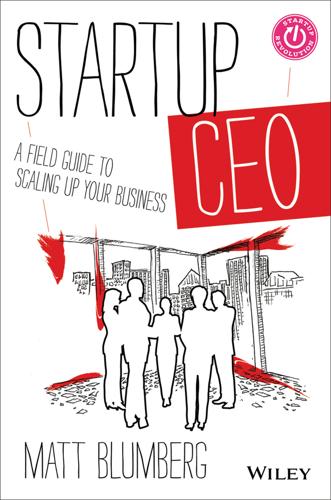
Startup CEO: A Field Guide to Scaling Up Your Business, + Website
by
Matt Blumberg
Published 13 Aug 2013
Though it hasn’t been my experience, I see Fred’s point. I’d argue that the same statement is true of founders or management as well. Boards help govern the company and watch out for shareholder interests. Boards give outside perspectives and strategic advice to the company’s leadership. Boards hire and fire the CEO. More and more every day with large public companies, boards keep management honest. How can these critical functions occur when a board has too many members of the management team on it? They can’t. We have had outside directors only, other than me, from Day 1. I’m not advocating that boards meet 100 percent apart from senior management; just that other members of the management team aren’t officially directors.
…
The biggest challenge I’ve had over the years sitting on other boards is trying to figure out the line of proper governance between being a director and being a CEO. My natural instinct is to speak up, to define and solve problems. That’s not necessarily the right role for an outside director who is there to help guide management (and, sure, ultimately hire and fire management). There are lots of different kinds of CEOs and corporate cultures. Some are command-and-control, others are more open, flat and transparent. I like to think I and Return Path are the latter and of course my bias is that that kind of culture leads to a more successful company. I’ve worked in environments that are the former and while less fun and more stressful, they can also produce very successful outcomes for shareholders and for employees as well.
…
As with most things like this, it’s less important what kind of peer group you form or join than it is that you form or join one. PROBLEM SOLVING IN TANDEM The kinds of topics that a peer group can tackle together are extremely varied. My group usually ends up focusing on things that are challenges unique to the CEO job: managing a board or investors or a financing; hiring and firing executives; setting/changing strategy; organizational and cultural challenges; and, in a couple of cases, selling companies. Sometimes we just share best practices on things that are maybe less weighty. It occurs to me that my CEO forum is kind of like a live version of this book—and in fact the members of the group are all represented among the different outside contributors here.

What’s Your Type?
by
Merve Emre
Published 16 Aug 2018
Jung,” 50–51 Man from Zurich, The, 50, 90 “Meet Yourself: How to Use the Personality Paint Box,” 43–46, 47, 95–96, 219 “Routine,” 42–43 “Up from Barbarism,” 49, 95–96 Briggs, Lyman: death of, 200 dreams of, 71–73, 74–75 early life of, 4–6 family life with, 15, 28, 40–41, 51, 63, 79 work life of, 9, 16, 18, 28, 76, 77, 115–17 Briggs-Myers Type Indicator, 119, 204 see also Myers-Briggs Type Indicator (MBTI) Brisco, Norris Arthur, 54 Brooklyn Daily Eagle, 62 Buck Hill Falls Laurel Blossom Festival, 65–66 Burke, Kenneth, 191–93 business, growth of MBTI in: first clients with Hay, 139, 142, 150, 159 expanding connections, 163–66, 168, 174–76, 180 hope and failure at ETS, 200, 208–9, 221–23, 239–40 with McCaulley and CPP, 241–44 on West Coast, 223 global reach of, xvi, xviii, 256 California, University of, at Berkeley, 156, 176, 177, 180, 181–82, 188, 194 California Psychological Inventory (CPI), 203, 240–41 capitalism: class divisions in, 125–26, 156, 158 individuality as fiction of, 126, 170, 260 motivation of workers in, xx, 135, 161–62, 166–67, 264 of “the people,” 160–61 see also corporations Capote, Truman, 178, 179, 190–93 CAPT (Center for Applications of Psychological Type): Isabel’s archives at, xii, xv, 227–28 marketing by, 245, 251, 252, 257, 260 MBTI, control of, xii, xv, 252 origins of, xii, 237 sister organizations of, 252, 260 Career Intelligence: Mastering the New Work and Personal Realities (Moses), 254 Carnegie, Dale, 118 Carnegie Corporation, 187, 189–90, 193 “Case for the Homemaker, The” (Briggs), 18 Center for Applications of Psychological Type (CAPT), see CAPT (Center for Applications of Psychological Type) Central Intelligence Agency, 107, 141 certification programs, for MBTI, xii–xv, 252, 262–67, 268 Chauncey, Henry: ETS personality test, search for, 201–4 Gough’s CPI, vetting of, 240–41 Isabel as employee of, 210–12, 213, 215–16, 218–23 MBTI, reservations about, 207–8, 209 MBTI, support for, 205–7, 219–20 MBTI name change proposal by, 204 see also ETS (Educational Testing Service) cheating, on personality tests, 170–73 Chicago Daily Tribune, 70 Chicago Tribune, 248 Chief, see Myers, Clarence Gates “Chief” Childe, Elizabeth (pseud.), 17–18 childish function (in Personality Paint Box), 46, 47 child psychology, 9–10, 16 child-rearing, see baby-training laboratory Christianity, 1, 3, 23, 84–85, 95, 105 churches, personality testing in, xvi, 208–9, 251 Clark, Rosamond, 73 Clark University, 35, 38 class divisions and individuality, 125–26, 156, 158 Cleveland, Grover, 5 cognitive testing, 202, 203, 204, 214 Cold War, 180, 187, 189, 202, 232 College of Saint Benedict, 247 colleges, see universities, personality testing at Commission of Human Resources, 202 commodification of workers, 179, 248, 253–55, 258–59 “Complaint” (Williams), 195 computers, use of, 195, 208, 213, 233, 249 consultants, personality testing, xix, 120, 251, 252–56 Consulting Psychologists Press (CPP), xv, 186, 241–44, 248–49, 252, 257 Cook, Albert J., 1, 2, 3, 5, 13 Cook, Bert, 1, 2, 3 Cook, Mary, 1, 2, 3 Cordray, Richard, 213–14 corporations: assessment of culture in, 255 hiring and firing in, xvi, 120, 159, 168 job performance in, 121 management of personalities in, 123, 164–65, 253–54 matching of jobs to workers in, 135–36, 160–61, 161–62, 166–67, 264 social control in, 161, 166–67, 170, 264 worker as commodity of, 179, 248, 253–55, 258–59 Country Life, 63 Cox, James M., 31 CPI (California Psychological Inventory), 203, 240–41 CPP (Consulting Psychologists Press), xv, 186, 241–44, 248–49, 252, 257 creativity: Barron’s theory of, 189, 200 as hope for the world and America, 176–78, 187–88 and research on Capote, 190–93 and research on women, 197–98, 199 Crowe, Cindy, 247 Darwin, Charles, 1, 6, 13, 37 Davis, Junius “Jay,” 210, 211, 212, 216–17, 219, 221–23 Death Calls for Margin (Myers), 65–66 Debs, Eugene, 31 “Diary of an Introvert Determined to Extravert, Write, & Have a Lot of Children” (Myers), 51–52, 53, 56, 118 “Diary of an Obedience-Curiosity Mother, The” (Briggs), 11, 13, 16, 18, 62 Dickinson, Emily, 43 discrimination: as consequence of type testing, xx, 122, 125–26, 267 in expectations, 167–68 at IPAR, 182, 194–200 Dissociation of a Personality, The (Prince), 97 domestic institutions, as “laboratories,” xx, 6–7, 8, 24–25, 43, 66, 123, 127–30, 207, 230 see also family, as origin of MBTI “dominant” function (in Isabel’s system), 131 Donovan, William, 141 Dostoyevsky, Fyodor, 121 dream analysis: on Capote, 191, 193 of Helson, Ravenna, 194, 199 Isabel’s use of, 169–70 on Katharine, 36–37, 90 in Katharine’s dream club, 74, 90–91 on Lyman, 71–73, 72, 74–75 on Mary (Tucky), 77–78, 79 racialized, 78–79, 169–70 “Earning It: Personal Trainers to Buff the Boss’s People Skills” (New York Times), 254–55 educational “experiment,” 15 see also baby-training laboratory Educational Testing Service (ETS), see ETS (Educational Testing Service) Edward N.
…
.: and Briggs-Myers Type Indicator, 134–35, 137, 159, 163–64, 166, 228 Isabel as employee of, 121, 122, 124, 125, 159 personality testing of workers by, 120–21 Helson, Henry, 194, 196, 198, 199 Helson, Ravenna: confusion about name of, 179, 194 family-independence juggling by, 194, 196–97, 198–99 at IPAR as assistant, 179, 194–96, 241 research on creativity in women by, 197–200 Herman Miller (office furniture), 249 hiring and firing of workers by type, xvi, 120, 159, 168 Hitler, Adolf: Adorno on, 125, 155–56 and Jung, Carl, 101–2 Katharine on, 105–6, 110–11, 113, 116–17 Murray on, 105–6, 107–11, 111–15 sexual abnormalities of, 107–8 Home Life Insurance Company, 164 home-schooling, 15 Honolulu Star-Bulletin, 62 Hoover, Herbert, 63, 91 hospitals, personality testing in, xx, 168, 230, 231, 233, 235–36, 252 “house-party” assessment at IPAR, 178, 182–87 How to Win Friends and Influence People (Carnegie), 118 Humm, Doncaster G., 121 Humm-Wadsworth Temperament Scale, 121–22, 124, 125, 127, 135 imagery game (word pairs), 81, 214, 242 images as prompts for stories, 99–100, 265–66 imagination, 4, 5, 10–11, 55, 59 “Improvisations” exercise, 150–53 index cards, 43, 74, 93, 127, 207, 213, 214 indicator, see Myers-Briggs Type Indicator (MBTI) individuality: assessment for, 127, 156–58 vs. belonging to “type” group, xviii as capitalist fiction, 126, 170, 260 vs. classification, xvi–xvii, 124–26, 260 vs. commodification, 179, 248, 253–55, 258–59 empowerment of, xix, 127 and IPAR’s research, 177–80, 186–88 in marriage, 25 as source of religious experience, 23–24 type as threat to, xvi, xviii, xxii, 124, 125–26, 170, 260 see also personality individuation process (Jungian), 38, 126 industrial modernity, 126–27, 133, 156, 179, 264 see also capitalism inequality of people, Katharine’s views on, 3, 31 “inspection house” (Panopticon), 184–85 insurance companies, MBTI and, 164, 214, 228 intelligence quotient (IQ) test, 167 Interpretation of Dreams, The (Freud), 38, 44 Introvert-Extravert Club (New York), 96–97 introvert type: as (I) in MBTI, xiii, 131 examples of, 40, 42, 76, 79, 92, 95, 129, 132, 152, 164, 236 Jung on, 39, 44, 215 in table, rubric, and profile, 47, 138 intuition, Jung on, 46, 48, 49 intuitive type: as (I) then (N) in MBTI, xiii, 131, 205 examples of, 49, 92, 95, 129, 164, 175, 236 Jung on, 40–41, 44, 46, 48 with perception type, 138 vs. sensing type, 40–41, 131, 138 in table, rubric, and profile, 47, 138 IPAR (Institute of Personality Assessment and Research): and creativity, 187–93, 195–200 “house party” surveillance methods, 178, 182–87 mission, 176–80, 181–83, 186–87 questionnaires at, 183–84, 185, 188 test design at, 186 women at, 182, 194–200 Ireland, Mardy, 260 James, William, 22, 23–24, 37, 45, 95 Jastrow, Joseph, 44 Jewish persecution, 106, 109–10, 114, 121, 125–26, 155 jobs, see workers Johnson, Lyndon, 187 judging type: as (J) in MBTI, xiii, 131 examples of, 249, 256, 268 as Isabel’s addition to Jung’s types, 131, 135 in table, 138 with thinking type, 138 Jung, Carl Gustav, 230 vs.
…
“indicator,” xiv, 119 thinking type: as (T) in MBTI, xiii, 131 examples of, 41, 68, 92, 95, 105, 128, 129, 132, 136–37, 165, 249–50 with judgment type, 138 Jung on, 41, 44 in table, rubric, and profile, 47, 138 vs. feeling type, 131, 138 Thuesen, Janet, 253–54, 255–56 Time, 189 Times-Picayune, 248 Tomkins, Silvan, 201, 203, 229 trainings in MBTI, xii–xv, 250–51, 252–56, 262–67, 268 transference, 91 true believers, xii–xv, xvi–xvii, xxi–xxii, 260–61, 268–69 true self: as fiction, 264 as lost to self, 263 MBTI as path to discovery of, xiii, 260–61, 269 as path to better self, 170, 269 as performance, 148, 149–50, 173 as self-evident, 258 Tuckerman, Louis, 76, 83 Tuckerman, Mary “Tucky”: Katharine’s analysis of, 75–82, 83–85, 91 mother’s concern for, 82–83 poem of, 78–80 Tuckerman, Una, 76, 77, 82–83, 91 Turnbull, William, 218 Type as the Index to Personality (Myers), 137 type indicator, see Myers-Briggs Type Indicator (MBTI) types, see personality types type table, rubric, and profile, 46, 47, 74, 93, 138 Type Talk: The 16 Personality Types That Determine How We Live, Love, and Work (Kroeger and Thuesen), 253 type theories: of Jung, xiii–xiv, xvii, 33, 35–36, 37–38, 43–44, 131, 135, 168–69 of Katharine, 34, 36–37, 103, 131, 219 see also family, as origin of MBTI type watchers, xix, 127, 133, 252, 256, 257, 261 Typology Laboratory, 25, 66, 234, 236 unconscious disclosures, 78–80, 99–100, 201 see also dream analysis universities, personality testing at: for admissions, 174–75, 181–83, 186–87, 202 for roommate selection, 247–48 “Up from Barbarism” (Briggs), 49, 95–96 validation of F scale questionnaire, 157–58 validity problems: of Humm-Wadsworth Temperament Scale, 122 Katharine and Isabel’s lack of concern about, 74, 133, 168, 169, 212, 224 of MBTI at ETS (Educational Testing Service), 204, 206, 208, 209–10, 212, 213, 217, 222 of MBTI with inconsistent results, 168–70, 241–42, 248–49, 263–64 of MBTI with lack of scientific proof, xi, xv, 168, 217, 219 of MBTI with questionnaires, 172–73, 218, 263–64 of personality tests in general, 97–98, 170–72 Varieties of Religious Experience, The (James), 22, 23–24, 37 visions, 79, 98, 99 Wadsworth, Guy W., Jr., 121 Wall Street Journal, 248 Washington, D.C., 5, 9, 28, 89, 102, 139, 146, 163, 252 Washington Gas Light Company, 168 Washington Post, 70, 247 Watson, John B., 7–8, 33, 34–36, 96, 142 West, Jessamyn, 191 Whyte, William H., 161, 162, 170–73, 264 Williams, William Carlos, 195 Wilson, Sloan, 171 Wilson, Woodrow, 27 Wisconsin, University of, 248 Wolfe, Dael, 202 Wolff, Toni, 95 Woman’s Home Companion, 18 women: creativity research on, 197–98, 199 as feelers, 67, 89, 128, 136–37 intuition of, 48 at IPAR, 182, 194–200 limitations on, xix, 5, 7 as lovers, 84, 94–95, 101 as man’s empowerer, 68, 98–99 in workforce, 122–23, 168–69 see also family, as origin of MBTI; marriage word pairs, 81, 214, 242 workers: alienation of, 166 and class divisions, 125–26, 156, 158 as commodities, 179, 248, 253–55, 258–59 hiring and firing of, xvi, 120, 159, 168 men vs. women, 29–30, 67–69, 119, 123, 134 motivation of, xx, 135, 161–62, 166–67, 264 and “soft skills,” 253–54 white-collar, 120–21 with good “job match,” see specialization “work-life balance,” 166–67 workplace aptitude tests, 120–21 workplace culture, improving, 255 World War I, 27, 28 World War II, 92, 101–2, 115–17, 119, 141 see also Germany; Hitler, Adolf Zimbardo, Philip, 155 Illustration Credits Page 47 Reproduction of the New Republic (December 22, 1926) Page 72 Courtesy of the Katharine Cook Papers at Michigan State University Page 138 (top and bottom) Courtesy of the Edward N.
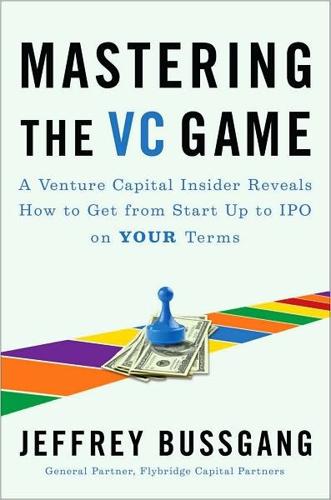
Mastering the VC Game: A Venture Capital Insider Reveals How to Get From Start-Up to IPO on Your Terms
by
Jeffrey Bussgang
Published 31 Mar 2010
The board of directors does not run the company. The CEO runs the company. The best entrepreneurs recognize the important and valuable role that the board can play and provide them with the transparency they need to do their job effectively. In their capacity as agents for the shareholders, the board of directors has the power to hire and fire the CEO and approve major transactions that materially affect the value of the company’s equity, such as selling the company, buying another company, or agreeing to a new round of financing. This role has other important areas of oversight, including serving on the audit committee, which liaises with the company’s auditors to confirm the integrity of the financial records and books, or compensation committee, which sets the compensation of the CEO and other senior executives.
…
From the day the CEO first arrives at the company, it is obvious the two will never get along. The founder questions the CEO’s every decision. The CEO wants to change all of the founder’s original processes and blames the company’s poor performance on the founder’s original decisions. The two can’t agree on strategy, organization structure, client management, or whom to hire and fire. The founder thinks the CEO is out to wreck the company and will ruin the culture and “soul” he created. The CEO thinks the company can never grow with the founder on the scene looking over his shoulder, looking backward rather than forward. The board members realize they have to do something, but they’re not sure what.

Waiting for Superman: How We Can Save America's Failing Public Schools
by
Participant Media
and
Karl Weber
Published 14 Jun 2010
Otherwise, problems give rise to finger-pointing and blame-shifting rather than a simple search for solutions. Giving both power and responsibility to school administrators and teachers means a real shift in how we think about school management. It impacts union work rules, performance measurements, and hiring and firing practices. Willingness to experiment and to change is required on the part of everyone involved in school leadership—teachers, union leaders, administrators, school board members, active parents, local political leaders, and citizens’ groups. Change can be challenging, even painful—but the alternative path leads only to continued failure, which is not an acceptable option.
…
I have learned enough in the years since to conclude that Garfield’s success despite a lack of leadership was a fluke. Super schools need super principals. KIPP has shown that a school cannot reach the necessary level of success, at least in inner-city neighborhoods, unless the school leader has been an effective teacher and can identify other effective teachers. That leader must also have the power to hire and fire teachers without interference from unions or headquarters rules. At KIPP schools, even the best principals sometimes discover someone they have hired is unable to keep to KIPP’s standards. Such teachers are given a great deal of help, but if they don’t improve they are dismissed, sometimes as early as Thanksgiving.

Rules for Revolutionaries: How Big Organizing Can Change Everything
by
Becky Bond
and
Zack Exley
Published 9 Nov 2016
I supported the idea of layoffs at that scale and was absolutely okay to be among those getting the ax. In fact, I stayed in touch and continued to volunteer as I was able. The revolution could definitely use more and better management! Changing the world is hard work. And when it’s funded by small-dollar donations, it’s important to make every little bit help. That means hiring and firing quickly when needed but also taking the time you need to do it right. We can be tough competitors, highly accountable managers, and still be humane partners in our shared struggle. No matter what your role is, as a staffer or volunteer, seek mentors and other resources to help make you a better manager and a better member of your team.
…
Every couple of years I would find myself in a taco place in San Francisco, where Becky has lived since graduating from college in 1992, dutifully giving updates about what I’d been doing and my latest wacky plans for projects that only rarely ever happened. As I was chaotically jumping from thing to thing, Becky was staying put at Working Assets/CREDO learning how to make big visions come true by managing, planning, hiring, and firing. Once she was on the Bernie campaign—bringing in an amazing team of people she had worked with or watched in action over the years, giving them clear roles, and managing them toward clear objectives—it all felt a bit providential. I think that part of the reason typical political staffers don’t often work as colleagues alongside volunteers is that the typical progressive staff culture is often close to a monoculture of a very particular subculture.

Career and Family: Women’s Century-Long Journey Toward Equity
by
Claudia Goldin
Published 11 Oct 2021
Marriage Bars Marriage bars preceded the Great Depression in many occupations, most notably teaching. But they intensified with the enormous rise of unemployment in the early 1930s, long bread lines, and growing economic despair. The decade-long Depression led to an expansion and greater enforcement of existing policies to exclude married women from the best jobs. Marriage bars were the hiring and firing policies of private firms and governmental agencies, most importantly school districts. The bars were of two types. One governed whether married women were hired. These regulations were called hiring bars. The other concerned whether currently employed women who married while in service would be fired.
…
But just prior to the onset of the Depression, there was growing sentiment in various states to overturn existing bars and prevent local school districts from enforcing these rules. The Depression did just the reverse. Information on the extent of marriage bars is surprisingly scarce given their importance. No systematic data exist across firms. The more than 120,000 separate school districts in the 1920s generally made their own policies with regard to the hiring and firing of their teachers. Fortuitously, school districts were surveyed by the National Education Association at various junctures, and these surveys allow us to pinpoint the fraction of teachers covered by the regulations at four critical moments. The first moment, in 1928, immediately before the stock market crash, provides a baseline, since no district would have passed regulations in anticipation of a Great Depression.
…
There was around a 20 percentage point change from age twenty-seven to age forty-two, and there was a 10 percentage point change for either twenty-seven- or forty-two-year-olds. (Data refer to ever-married, white, college-graduate women from the various US census micro data.) 74 Marriage bars were the hiring and firing policies The marriage-bar policies were not unique to the US and existed for teachers and other professionals in Great Britain, Ireland, and Australia, among other countries. 75 The Depression did just the reverse Goldin (1991) uses surveys from the 1930s and school district compilations for the early twentieth century to analyze the institution of marriage bars and its expansion during the Great Depression. 76 policy that fired single women Goldin (1991).

The Party: The Secret World of China's Communist Rulers
by
Richard McGregor
Published 8 Jun 2010
With his symbolic southern tour to Shenzhen, a business Eldorado bordering Hong Kong and built from scratch out of rice paddies in just two decades, Deng throttled once and for all the lingering Maoist influences on economic policy. Deng’s formula, boiled down, was simple. The Party would still pursue free-market reforms, but in tandem with recalibrating and tightening political authority in Beijing. Equally, the Party might not own state assets directly, but it would maintain the right to hire and fire the executives who managed them. For the economy to prosper, the huge state firms that communist commissars had once directly managed would have to be turned upside down and the role of party operatives inside them reined in. Instead of simply producing goods to plan and providing cradle-to-grave employment, knowing all along that the Finance Ministry would cover any losses, the state had to make money to survive.
…
The two party committees, both headed by Politburo members, took control of the financial system in the late nineties across the country through a very simple mechanism. The party apparatus in Beijing, in tandem with the Central Organization Department, shunted aside local bigwigs by placing the power to hire and fire senior executives in banks and other state enterprises with the centre, no matter where they were in the country. Any regional bank offices which refused to sign up to the Politburo’s programme were threatened with closure. Put crudely, Zhu’s strategy echoed the saying popularized in the Vietnam war to explain the US military’s programme to pacify Vietcong villages.
…
‘So in addition to caring for their banks, they are responsible for supporting the central government’s economic stimulus policy.’ The Party’s control over personnel was at the heart of its ability to overhaul state companies, without losing leverage over them at the same time. So important does the Party rate its power to hire and fire government officials that it places it on a par with its control over the media and the military. Zhou Tianyong, a relatively liberal political theorist at the Central Party School in Beijing, laid out the Party’s absolute bottom line in a book published in early 2008, Storming the Barricades..
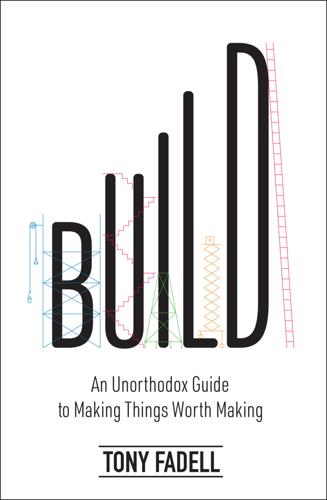
Build: An Unorthodox Guide to Making Things Worth Making
by
Tony Fadell
Published 2 May 2022
Remember that once you become a manager, you’ll stop doing the thing that made you successful in the first place. You’ll no longer be doing the things you do really well—instead you’ll be digging into how others do them, helping them improve. Your job will now be communication, communication, communication, recruiting, hiring and firing, setting budgets, reviews, one-on-one meetings (1:1s), meetings with your team and other teams and leadership, representing your team in those meetings, setting goals and keeping people on track, conflict resolution, helping to find creative solutions to intractable problems, blocking and tackling political BS, mentoring your team, and asking “how can I help you?”
…
Chapter 6.2 The Board Everyone needs a boss to be accountable to and coaches who can help them through difficult times—even a CEO. Especially a CEO. That’s why businesses have a board of directors—typically just called “the board”—where members are directors of the company. A board’s primary responsibility is to hire and fire the CEO. That is the main way they can protect the company and the one and only job they have that really counts. Everything else comes down to giving good advice and respectful, no-bullshit feedback that hopefully steers the CEO in the right direction. Ultimately it’s the CEO who’s responsible for running a company.
…
That’s when you learn your wife leaves dishes in the sink to “soak” for a few days. It’s when you realize your husband always forgets to clean up his toenail trimmings. So the dating phase of any potential acquisition is crucial. You have to check the sink for dirty dishes. You have to spot the toenail on the dining table. Look at the reporting structure and the way they hire and fire employees. Dig into what perks everyone gets. Talk about management philosophy. Make concrete plans for exactly what’s going to happen post-sale. Are you going to integrate or keep your cultures separate? What will you do about overlap? Where will this team go? Who will work on this product? But always know that you won’t be able to predict the future.

Delivering Happiness: A Path to Profits, Passion, and Purpose
by
Tony Hsieh
Published 6 Jun 2010
They usually sound more like something you’d read in a press release. Maybe you learn about them on day 1 of orientation, but after that it’s just a meaningless plaque on the wall of the lobby. We believe that it’s really important to come up with core values that you can commit to. And by commit, we mean that you’re willing to hire and fire based on them. If you’re willing to do that, then you’re well on your way to building a company culture that is in line with the brand you want to build. You can let all of your employees be your brand ambassadors, not just the marketing or PR department. And they can be brand ambassadors both inside and outside the office.
…
A lot of times, an employee might learn about them on day 1 of orientation, but then the values just end up being part of a meaningless plaque on the wall of the corporate lobby. We wanted to make sure that didn’t happen with our core values. We wanted a list of committable core values that we were willing to hire and fire on. If we weren’t willing to do that, then they weren’t really “values.” We eventually came up with our final list of ten core values, which we still use today: Deliver WOW Through Service Embrace and Drive Change Create Fun and a Little Weirdness Be Adventurous, Creative, and Open-Minded Pursue Growth and Learning Build Open and Honest Relationships with Communication Build a Positive Team and Family Spirit Do More with Less Be Passionate and Determined Be Humble Integrity was a value that had been suggested by some employees, but I made a conscious choice to leave it out.
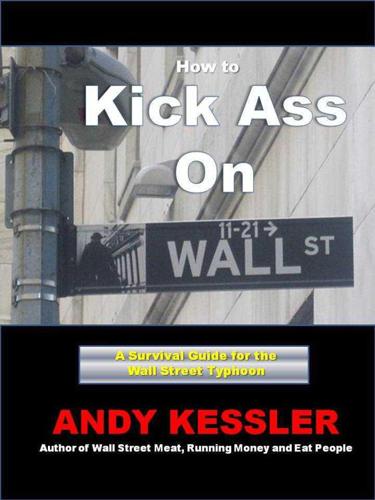
How to Kick Ass on Wall Street
by
Andy Kessler
Published 4 Jun 2012
The flip side is that the price of companies in doing all the wrong things, think General Motors and now Kodak, go down, starving them of capital, a punishment for screwing up until they disappear or do something to turn themselves around. By finding the right price and heaping capital to those it thinks deserve it and starving those that it thinks suck wind, the stock market does the dirty work of forcing the hiring and firing managers and green-lighting or killing projects. Pretty cool. On the street level, of course, Wall Street is a lot nastier. When I think of Wall Street, I think of alpha dogs generating revenue at all cost, getting deals done, fighting for market share against all the other firms, and then at the end of the year, the political knives come out trying to carve up the ever growing bonus pool, though often each other
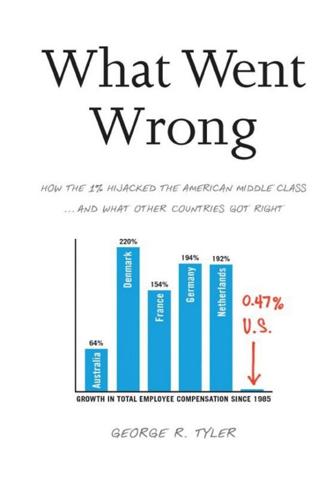
What Went Wrong: How the 1% Hijacked the American Middle Class . . . And What Other Countries Got Right
by
George R. Tyler
Published 15 Jul 2013
“Trying to prevent this creative destruction from happening is a recipe for less economic growth and less productivity.”6 As economists at the OECD have explained, there is awareness now in countries such as the Netherlands that “strict employment protections reduce labor market fluidity and prolong unemployment.”7 That appreciation has inculcated a culture of labor market experimentation and continual reform in recent decades in northern Europe with names like “flexicurity.” First coined in Scandinavia, flexicurity describes steps to enhance labor market flexibility by pairing an enhanced employer ability to hire and fire with greater unemployment support and incentives for jobless workers to upskill and recycle rapidly back into the labor force.8 Examples include German reforms that made it easier to hire and fire employees beginning in 1998. How deeply are the objectives of flexicurity ingrained in the culture of northern Europe now? Here is how Steffen Kampeter, parliamentary state secretary in the German Ministry of Finance, described the intensity of that culture: “We have learned that reform is not only a 10-year program but an everlasting challenge.”9 That commitment to flexible labor markets explains why the European Central Bank demanded reduced labor market protections in Greece, Portugal, and Spain as a condition for support during the sovereign debt crisis.
…
They fingered the German labor model, which prioritizes worksite performance over wage compression: only the highly skilled need apply.12 Herbert Brucker of the IAB explained the outcome was the consequence of the explicit German rejection (because it hobbles productivity growth) of the American-style “hire-and-fire” labor model. How are nationwide wage increases set by the family capitalist countries? Recall that we reviewed the process in Australia in Chapter 3, including this explanation from that government’s Bureau of Statistics: “In Australia, the 1983 Wage Accord established a centralized wage fixing system that took into account economic policies and the Consumer Price Index.
…
Employees have a stake in striving for wage increases, of course, but not at the expense of firm survival because they have long-term attachments to employers; they covet enterprise success and that moderates wage demands. For their part, keenly sensitive to the urgency of productivity growth, employers have a stake in maintaining an energetic workforce while avoiding strikes. Yet employers also prioritize flexibility to hire and fire workers, to control labor costs while meeting sudden market changes, to optimize low labor turnover, and to be profitable for their shareholders and thereby able to invest in new technology to meet competition.21 Wages do not rise beyond a cost-of-living adjustment if productivity growth is poor: “Salaries in France should be increased only if there is an increase in productivity,” is how Reuters quoted former Economic Minister and now IMF chief Christine Lagarde in March 2011.22 Here is how this system worked in France in 2006.
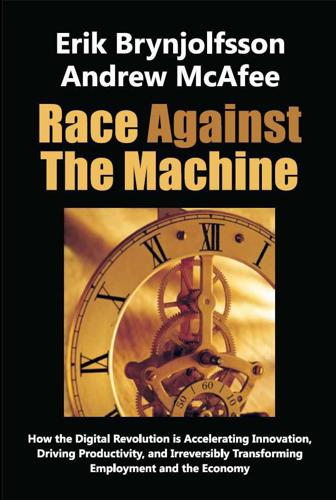
Race Against the Machine: How the Digital Revolution Is Accelerating Innovation, Driving Productivity, and Irreversibly Transforming Employment and the Economy
by
Erik Brynjolfsson
Published 23 Jan 2012
Increase funding for basic research and for our preeminent government R&D institutions including the National Science Foundation, the National Institutes of Health, and the Defense Advanced Research Projects Agency (DARPA) with a renewed focus on intangible assets and business innovation. Like other forms of basic research, these investments are often underfunded by private investors because of the spillovers they create. Laws, Regulations, and Taxes 12. Preserve the relative flexibility of American labor markets by resisting efforts to regulate hiring and firing. Banning layoffs paradoxically can lower employment by making it riskier for firms to hire in the first place, especially if they are experimenting with new products or business models. 13. Make it comparatively more attractive to hire a person than to buy more technology. This can be done by, among other things, decreasing employer payroll taxes and providing subsidies or tax breaks for employing people who have been out of work for a long time.

23 Things They Don't Tell You About Capitalism
by
Ha-Joon Chang
Published 1 Jan 2010
Greater capital mobility is promoted because the main source of the ability for the holders of financial assets to reap higher returns than the holders of other (physical and human) assets is their ability to move around their assets more quickly (see Thing 22). Greater labour market flexibility is demanded because, from the point of view of financial investors, making hiring and firing of the workers easier allows companies to be restructured more quickly, which means that they can be sold and bought more readily with better short-term balance sheets, bringing higher financial returns (see Thing 2). Even if they have increased financial instability and job insecurity, policies aimed at increasing price stability may be partially justified, had they increased investment and thus growth, as the inflation hawks had predicted.
…
Its free enterprise system, according to admirers of the US model, lets people compete without limits and rewards the winners without restrictions imposed by the government or by misguided egalitarian culture. The system therefore creates exceptionally strong incentives for entrepreneurship and innovation. Its free labour market, with easy hiring and firing, allows its enterprises to be agile and thus more competitive, as they can redeploy their workers more quickly than their competitors, in response to changing market conditions. With entrepreneurs richly rewarded and workers having to adapt quickly, the system does create high inequality. However, its proponents argue, even the ‘losers’ in this game willingly accept such outcomes because, given the country’s high social mobility, their own children could be the next Thomas Edison, J.
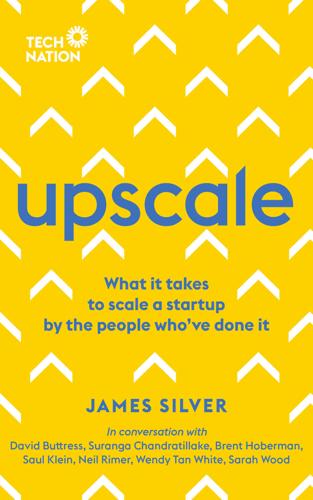
Upscale: What It Takes to Scale a Startup. By the People Who've Done It.
by
James Silver
Published 15 Nov 2018
Scale Coaches Adam Hale; Alex Depledge; Alex Gayer; Amir Kfir; Andrew Crump; Andrew Graham; Anthony Fletcher; Asi Sharabi; Benjamin Grol; Brad Feld; Brent Hoberman; Bryan Tookey; Cian Weeresinghe; Claire Martin; Dan Hynes; Daniel Campion; Dave Shappell; David Norris; Devin Hunt; Divinia Knowles; Doug Monro; George Berkowski; George Bettany; Greg Marsh; Ian Meyers; Ian Sutherland; James Bilefield; James Routledge; Jerry Collona; Jessica Butcher; Jonathon Southam; Julien Callede; Luke Lang; Malcolm Locke; Matt Buckland; Meri Williams; Niklas Zennstrom; Patrick Campbell; Placid Jover; Romain Bertrand; Sarah Wood; Shane Corstorphine; Sian Keane; Simon Wright; Sophie Miller; Steven Dunne; Steven Rose; Thor Mitchell; Toby Moore; Tracy Doree; Verne Harnish; Will McInnes Advisors Andy Young; Davor Hebel; Dominic Jacquesson; Eileen Burbidge; Jamie Coleman; Jon Bradford; Katy Turner; Nic Brisbourne; Reshma Sohoni; Russell Buckley; Simon Calver; Saul Klein; Sitar Teli; Suranga Chandratillake; Tak Lo; Wendy Tan White Tech Nation Ashley Hough; Barbara Peric; Becky Smith; Ben Wackett; Caroline Rae; Davina Yanful; EJ Quinn; Gerard Grech; Jos Smart; MB Christie; Orla Browne; Parveen Dhanda; Reiz Evans; Ryan Proctor; Sinead Daly; Tia Mcphee; Ugne Sapezinskaite; Vicki Shiel; Will Dolby; Zheela Qaiser CONTENTS INTRODUCTION Gerard Grech, CEO Tech Nation. Part One: People CHAPTER 1: ‘Why hiring slow and firing fast is one of the hardest things founders have to do.’ Greg Marsh, co-founder and former CEO of onefinestay, on hiring and firing. CHAPTER 2: ‘There is no such thing as a perfect culture - that’s known as a cult.’ Neil Rimer, co-founder of Index Ventures, alongside key figures from some of the leading VC firm’s portfolio companies, on scaling values and making culture count. CHAPTER 3: ‘The age of one brain holding all a company’s knowledge is over.’
…
The days of having to go to the Valley to stand a chance of success are over; the vision of being able to grow a world-class digital business in the UK is now a reality. Scale-up nation is here to stay. London, October 2018 part one PEOPLE CHAPTER 1 ‘Why hiring slow and firing fast is one of the hardest things founders have to do.’ Greg Marsh, co-founder and former CEO of onefinestay, on hiring and firing. The hardest decision CEOs have to make is who to keep and when to fire, says Greg Marsh, co-founder of high-end hospitality firm onefinestay, which was sold to AccorHotels for a widely reported £117m (€l48m) in April 2016. Speaking to a roomful of entrepreneurs as part of Tech Nation’s Upscale programme at the Goldsmiths’ Centre in Clerkenwell, London, he went on to cite Andy Grove, the late, legendary Intel CEO, to bolster his case.
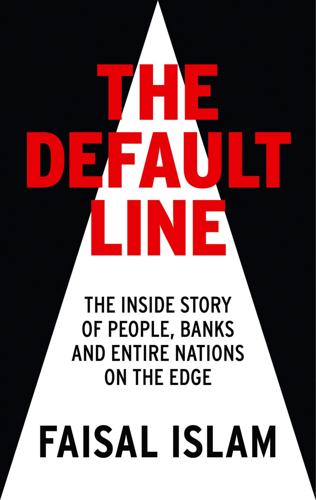
The Default Line: The Inside Story of People, Banks and Entire Nations on the Edge
by
Faisal Islam
Published 28 Aug 2013
At this point the boss of the job agency turns up. He looks down at Yi Bin and two of his friends, barking questions about their experience and what wage they would be willing to work for. Here, in nominally Communist China, this is what an extreme free-market labour force looks like. There are very few social protections, and workers are hired and fired at will. Wages are entirely dictated by supply and demand for workers, and for the products they produce. Europe and North America did not just outsource production, they also outsourced the sharpest edges of the free market. It can be no mystery that workers save as much as they can. Despite the cut-throat nature of the labour market, people keep flooding from the fields to the factories.
…
The millions of jobs created in the boom proved to be fleeting. From January 2003 to January 2008, Spain added 3.3 million jobs. By January 2013 it had lost those 3.3 million jobs, returning almost exactly to where it was a decade before. A former minister puts it slightly differently: ‘In Spain we are very good at hiring and firing. We created more jobs than anywhere else in the EU between 2000 and 2007. And then we fired them all.’ The 3.3 million jobs lost over the past half decade also mask a remarkable generational inequity. Almost all the jobs were lost by those aged 34 and under: 8 million of these young people had jobs in 2008, but by 2013 this figure had fallen to 5.1 million, a loss of 2.9 million.
…
The following day the ECB’s then and future presidents, Trichet and Draghi, wrote an extraordinary secret letter, in English, to Berlusconi, outlining steps they required the Italian government to take in order ‘to urgently underpin the standing of its sovereign signature’. Existing budget plans were ‘important steps, but not sufficient’. Large-scale privatisations, reform of wage bargaining, a review of hiring and firing laws, and a speeding up of spending cuts were all specified as ‘essential’ for something – implicitly the ECB’s purchase of Italian bonds – though that was left unsaid. For good measure the letter also specified the legal method through which Berlusconi should make the changes: ‘as soon as possible with decree-laws, followed by parliamentary ratification by end September 2011’.
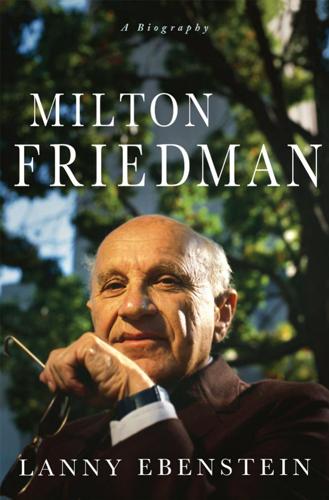
Milton Friedman: A Biography
by
Lanny Ebenstein
Published 23 Jan 2007
It just has to give its entrepreneurs a chance. It has to let them make money, hire and fire, and act like entrepreneurs. Instead, what you have as a result of past policies is that German entrepreneurs go outside of Germany for many of their activities. They are investing abroad instead of at home because there isn’t the openness, fluidity and opportunity they find outside their borders. Interviewer: British Prime Minister Tony Blair argues there is a “third way”—for example, flexible labor markets without hire-and-fire American-style. This, he argues, is more suitable to the “European social model” with its enduring concern with social justice.

Capitalism Without Capital: The Rise of the Intangible Economy
by
Jonathan Haskel
and
Stian Westlake
Published 7 Nov 2017
Figure 2.8 shows the share of business-sector GDP accounted for by tangible and intangible investment, plotted against an index of what the OECD calls “employment strictness,” where a high value of the index, such as in countries like Italy, means that it is costly to hire and fire workers and a low value, for example, in the United States and the UK, means that it’s relatively cheap. Figure 2.8. Tangible and intangible investment and regulation (shares of sector value added, average 1999–2013). Countries are Austria (AT), Denmark (DK), Finland (FI), France (FR), Germany (DE), Italy (IT), Netherlands (NL), Spain (ES), Sweden (SE), UK (UK), USA (US). Source: authors’ calculations based on INTAN-Invest database (www.intan-invest.net) and OECD data. The figure shows something interesting. Countries with more restrictive hiring and firing invest more in tangibles, but less in intangibles.
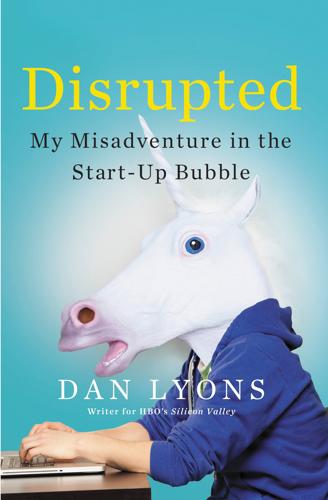
Disrupted: My Misadventure in the Start-Up Bubble
by
Dan Lyons
Published 4 Apr 2016
“All the money in the world as payment would not be enough to work for this moron,” another commenter writes. “Someone has a power/ego problem,” says a third. Cranium perceives himself as being skilled at recruiting and hiring, yet turnover in his department is so high that people in other parts of HubSpot refer to the marketing department as “the French Revolution.” People are constantly being hired and fired, or “graduated,” as Cranium says in his emails to the group. I keep making friends, only to have them disappear. These “graduations” sometimes happen suddenly, with no warning. In my second week at HubSpot I have lunch with a woman named Bettina. She’s right out of college, working in her first job, and wants to write a book about marketing to Millennials.
…
Twitter, for example, seems to have survived in spite of its management rather than because of it. The company is valued at $13 billion and not long ago was valued at more than $30 billion. Yet Twitter has never reported an annual profit, and has lost billions of dollars. For nine years Twitter has undergone wave after wave of management upheaval, hiring and firing CEOs, reshuffling, reorganizing, announcing new business plans, making acquisitions. The people responsible for this mess have become incredibly wealthy. Two of Twitter’s co-founders, Evan Williams and Jack Dorsey, are billionaires. Dorsey once had blue hair and played music in the street. For a while he went around dressing like Steve Jobs.
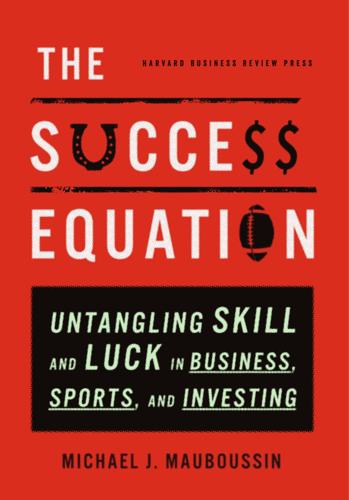
The Success Equation: Untangling Skill and Luck in Business, Sports, and Investing
by
Michael J. Mauboussin
Published 14 Jul 2012
Knittel, and Jeffrey Heisler, CFA, “Absence of Value: An Analysis of Investment Allocation Decisions by Institutional Plan Sponsors,” Financial Analysts Journal 65, no. 6 (November/December 2009): 34–51; Amit Goyal and Sunil Wahal, “The Selection and Termination of Investment Management Firms by Plan Sponsors,” Journal of Finance 63, no. 4 (August 2008): 1805–1847; Jeffrey Heisler, Christopher R. Kittel, John J. Neuman, and Scott D. Stewart, “Why Do Plan Sponsors Hire and Fire Their Investment Managers?” Journal of Business and Economic Studies 13, no. 1 (Spring 2007): 88–118; Diane Del Guercio and Paula A. Tkac, “The Determinants of the Flow of Funds of Managed Portfolios: Mutual Funds Versus Pension Funds,” Journal of Financial and Quantitative Analysis 37, no. 4 (December 2002): 523–555; and Andrea Frazzini and Owen A.
…
“Limits on the Predictive Power of Domain-Specific Experience and Knowledge in Skilled Performance.” Current Directions in Psychological Science 20, no. 5 (October 2011): 275–279. Harford, Tim. Why Success Always Starts with Failure. New York: Farrar, Straus and Giroux, 2011. Heisler, Jeffrey, Christopher R. Kittel, John J. Neuman, and Scott D. Stewart. “Why Do Plan Sponsors Hire and Fire Their Investment Managers?” Journal of Business and Economic Studies 13, no. 1 (Spring 2007): 88–118. Henderson, Andrew D., Michael E. Raynor, and Mumtaz Ahmed. “How Long Must a Firm Be Great to Rule Out Luck? Benchmarking Sustained Superior Performance Without Being Fooled By Randomness.” Strategic Management Journal 33, no. 4 (April 2012): 387–406.
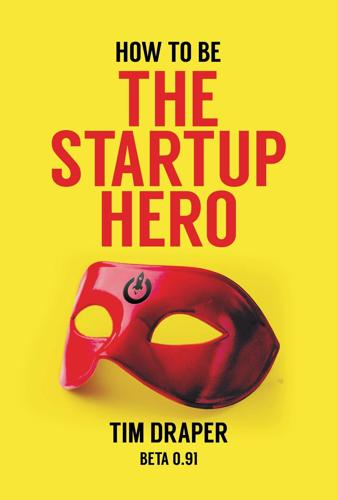
How to Be the Startup Hero: A Guide and Textbook for Entrepreneurs and Aspiring Entrepreneurs
by
Tim Draper
Published 18 Dec 2017
She handles all the work I need done but can’t get to, she anticipates what the business needs and acts accordingly, and she has supported me through some very tough professional (and personal) challenges. I remember saying things like, “Do you remember that guy who…?” and before I said another word, she would respond with, “Yes, John Smith from Acron Systems.” And she would be spot on. But I have made some mistakes in hiring (and firing) and funding too. Over my years as a venture capitalist, I have had to fire quite a few CEOs, founders, employees, and several partners in the DVN. In most cases, I believe that it is important to do it immediately, so that the person who is fired has as much time as possible to find his or her next job, and so that rumors do not circle.
…
Tom became frustrated with Bob, who kept odd hours, made absurd declarations, and wasn’t managing his people. Tom came to the board and asked to replace Bob as CEO and to throw Bob out. It was a tough decision at the time. I was new to the business and deferred to the more senior investors in making the call. The board has one job—to hire and fire the CEO. And given the ultimatum, we went with Tom, the wise Harvard MBA. What we should have done was somehow keep both of them. Bob was the heart of the business and Tom was the mind. Bob left the company with the same passion he came into it with. He was bitter, angry, and although still a large shareholder, he almost didn’t want the company to succeed without him.
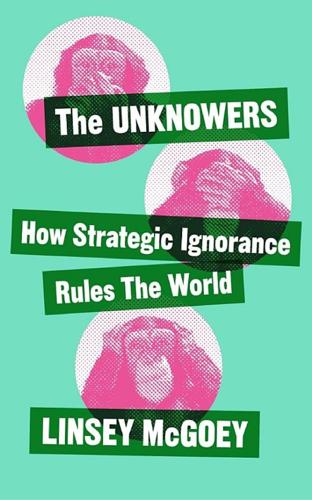
The Unknowers: How Strategic Ignorance Rules the World
by
Linsey McGoey
Published 14 Sep 2019
World Bank policies are also a major barrier to improving corporate accountability for poor labour conditions, which is a separate but related problem: the way that companies based in Canada, the US and the UK have for decades successfully argued that workplace deaths at their global subsidiaries are not their legal responsibility. The Bank encourages poor labour standards through reports like Doing Business, first launched in 2003, which included ‘Hiring and Firing Workers’ indicators which gave highest scores to any country that has the lowest minimum wages protections and the highest worker hours.41 Why would the Bank routinely champion labour laws that undermine the health and safety of workers in the world’s poorest nations? The answer is simple even though it bothers people to have it stated blunted: weak labour protections serve the interests of multinational corporations.
…
Through new phrases developed in the book, from ‘useful unknowns’ to ‘oracular power,’ my aim has been to expand the language for understanding the social and political implications of the type of doublespeak that Orwell so evocatively warned about (here’s one that Orwell might appreciate. Facing criticism, the World Bank promptly changed its ‘Hiring and Firing Workers’ index to the ‘EWI,’ the ‘Employing Workers Indicator’). My empirical cases may seem like a scattered grouping, but they are chosen for their very eclecticism, to show the way that patterns of strategic ignorance can be seen in many different areas of social and economic life. The ultimate aim of these varied cases is to demonstrate how the ignorance cycle that I pointed out – the way that micro-ignorance leads to larger macro-ignorance which in turn facilitates micro-ignorance – can be illustrated in practice.

Code Dependent: Living in the Shadow of AI
by
Madhumita Murgia
Published 20 Mar 2024
Maybe you even used AI to write your job application. And if you ever end up in the criminal justice system, your fate – bail or jail – could be determined by AI. The outputs of AI software today can help human experts make consequential decisions in areas such as medical diagnoses, public welfare, mortgage and loan requests, hiring and firing, among others. Cutting-edge AI software is even used by researchers, such as chemists, biologists, geneticists and others, to speed up the scientific discovery process.3 Over the past year, we have seen the rise of a new subset of AI technology: generative AI, or software that can write, create images, audio or video in a way that is largely indistinguishable from human output.
…
And they do it at the behest of an app. These apps use AI systems, a faceless boss that hands down edicts via phone: machine-learning software allocates drivers their jobs, verifies workers’ identities, determines dynamic pay per task, awards bonuses, and detects fraud, and it also makes decisions that oversee hiring and firing. The rules that workers live by are changeable, re-written based on a continuous stream of fresh data. And in the high-stakes power play between employer and employee, the shape-shifting algorithm holds all the cards. Armin is the youngest son of Iranian immigrants who moved to California in the 1960s.

Skygods: The Fall of Pan Am
by
Robert Gandt
Published 1 Mar 1995
More often than not, Trippe was at odds with his pilots. To Trippe, pilots were pampered specialists who complained too much about work rules and pay and benefits. In the thirties he had to endure the specter of a union on his property—ALPA, the Air Line Pilots Association. As ALPA members, pilots were no longer hired and fired at the company’s whim. Their salaries and working rules were negotiated for them by their union. Their place on the company roster was fixed by a seniority list. Their grievances were adjudicated by union and company mediators. Gradually Trippe distanced himself from the crew room and the cockpit and the seaplane ramp.
…
National’s fly-to-Florida advertising theme, the “Route of the Buccaneers,” had to be changed when Rickenbacker started denouncing Baker as “an old pirate.” Rickenbacker was not alone. Most of Baker’s employees hated his guts too. Baker was a bully who constantly changed his company officers’ titles and salaries, hiring and firing them at whim. At lunchtime he conducted what they called “noon bloodlettings,” at which he verbally pistol-whipped every errant executive who had screwed up in the past twenty-four hours. And he was cheap. Instead of buying shades, Baker covered the windows of his headquarters with wrapping paper and masking tape.

Winners Take All: The Elite Charade of Changing the World
by
Anand Giridharadas
Published 27 Aug 2018
Renzi dropped a casual aside in talking about his labor-market reforms that reflected another aspect of the globalist consensus. He said Italy’s rewriting, the previous year, of its hiring-and-firing laws had finally caught the country up to the standards of Germany and Britain. He added, “Obviously, U.S.A. arrived to this point twenty years ago.” The globalists believed that there were “right answers” in public policy—answers that made a place safe for the foreign investors that Macri had been worried about—and having a very flexible labor market, in which it is easy to hire and fire people, is one of those right answers. The right answer, then, was not arrived at democratically: It was not the answer the people of Italy had chosen, by action or inaction, during those twenty years of “delay.”
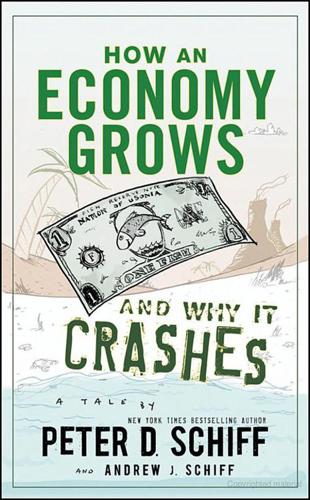
How an Economy Grows and Why It Crashes
by
Peter D. Schiff
and
Andrew J. Schiff
Published 2 May 2010
Desperate to offset the effects of fishflation, many more islanders decided to risk thier savings with Manny Fund, whose promise of oversized returns gave investors the best hope of overcoming these losses. When unemployment reached a crisis level, people demanded that the government do something. In response, the Senate set strict limits on how much companies could pay workers, under what circumstances the workers could be hired and fired, and how much the businesses could charge for their products. The resulting constraints made it more difficult to do business, and limited the ability of businesses to grow. As time passed, a new senator, Lindy B., saw another electoral opportunity…this time to make a Great Society! Lindy promised that if elected not only would he furnish the canoe navy with bigger spears, but he would also help the sagging economy by providing emergency unemployment fish notes to all laid-off workers.
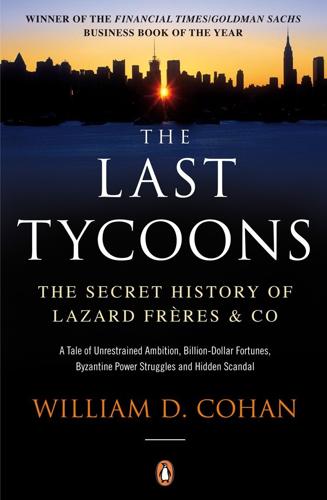
The Last Tycoons: The Secret History of Lazard Frères & Co.
by
William D. Cohan
Published 25 Dec 2015
The board would enjoy a myriad of powers, among them the ability to hire and fire the CEO and to approve the sale, merger, or initial public offering of the firm. During the first five years of Michel's chairmanship, though, he would have the unilateral right to veto such an event. Under Steve's construct, there was also to have been a nine-member management committee that would meet weekly and be chaired by the CEO. The management committee would make all compensation decisions as well as all decisions regarding promotion, hiring, and firing. The initial officers of the Lazard Group would be Michel, as chairman, Steve, as president and CEO, and Eig, Gullquist, Mezzacappa, Verey, and Braggiotti.
…
The ostensible reason for the change, according to Michel, was the need to legally separate the French partnership from the New York partnership in the event that the Germans took control of Lazard in Paris--which they eventually did--and endeavored to run the New York firm (which they did not). The change in the agreement was designed to prevent such an event. But the main reason for the rewrite was to create a highly authoritarian management and governance structure--found in section 4.1 of the agreement--that would endow one person alone with the absolute power to unilaterally hire and fire partners and other employees and to unilaterally set annual compensation. In investment banking, as in most businesses, there is no more absolute power over employees than the authority to set their compensation and determine if they will still have a job. The December 31, 1938, partnership agreement became the firm's Rosetta stone, and the "partner under section 4.1" became the firm's absolute monarch.
…
Loomis was partial to writing detailed, often passionate memos to Michel and Felix about his ideas for the firm. In an early missive, he made the heretofore-unheard-of argument that Michel needed to appoint one partner to coordinate the assignments for and evaluations of the junior professionals, including the making of all hiring and firing decisions for these bankers. This task, Loomis supposed, would take about half of the chosen partner's time. He volunteered for the job. As he saw it, his mandate would be to coordinate all staffing of associates on M&A deals, requiring partners to go through him--Felix's recommendation--as new assignments came up, as opposed to going directly to their favorite associates, as had been the custom.
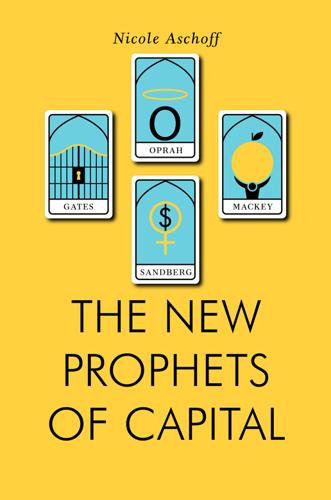
The New Prophets of Capital
by
Nicole Aschoff
Published 10 Mar 2015
The idea is that by applying a market logic to the public school system, educational entrepreneurs will want to get involved, creative people will get interested in education, and the resulting competition will force all schools to do a better job. As one reformer put it, by treating schools the same way we treat companies we can create a system where “every public school will have a performance contract where [the] people running it will have the freedom … to manage it well, hire and fire based on performance, [and] design their schools in a way that is successful … If they’re not successful, they should be closed.”24 The Race to the Top (RTTT) contest—President Obama’s multibillion-dollar initiative to replace Bush’s No Child Left Behind program—is a central part of this marketization strategy.
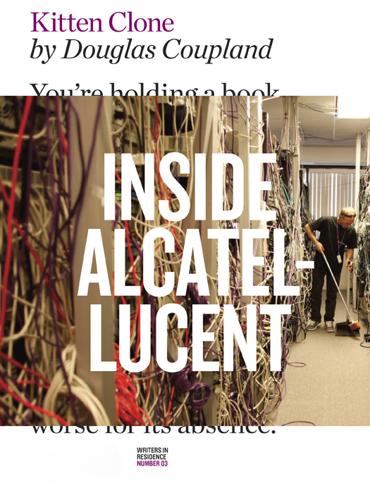
Kitten Clone: Inside Alcatel-Lucent
by
Douglas Coupland
Published 29 Sep 2014
When I asked how long he’d been living in the place, he told me eight years. As for Shawn Brennan, we start by discussing the tangledness of the computing universe after five decades of relentless growth. Brennan began with Newbridge in 1989. Since then, he’s seen many rises and many falls and many mass hirings and firings and downsizings, and says that, in the end, whether someone is kept on is based purely on their contribution, reinforcing my perception that the tech universe is as close to a pure capitalist intellectual meritocracy as our species has ever created. Brennan remembers a Nortel recruiting truck showing up at a Newbridge mass termination meeting at the local hockey arena and offers this practical advice: “If all the meeting rooms are booked at the same time, it means something’s up.”

Do You Mind if I Cancel?: (Things That Still Annoy Me)
by
Gary Janetti
Published 21 Oct 2019
It is a dehumanizing experience where the first step is a cursory glance of your looks that results in either moving to the next step or going home. I’m, thank fucking God, directed to the next step (my entire self-worth now hinging on two middle-aged women with clipboards and one vicious gay man), which basically involves a closer scrutiny of your looks and some slight speaking. (This was during a simpler time when you could hire and fire someone based on looks, weight, age, and no one would so much as bat an eye). A few hours later and I’m still there and our numbers have dwindled down to about a dozen and I’m having my final interview. At this point I’m so desperate to be selected I’d let them strip me naked and put me on a revolving turntable until I remember that what I’m competing for is not a modeling contract or a part in a major motion picture but the chance to work behind the front desk of a midtown hotel.
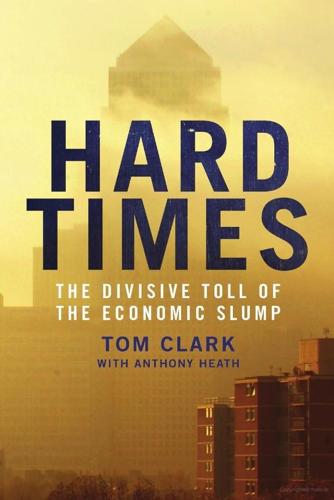
Hard Times: The Divisive Toll of the Economic Slump
by
Tom Clark
and
Anthony Heath
Published 23 Jun 2014
Across most dimensions, the OECD ranks America close to the bottom of the table of its 34 members (frequently actually bottom); Britain is generally only a place or two higher than the US.34 Reviewing the shielding of permanent staff from being singled out for the sack, the OECD comments: ‘the US stands out as the least regulated country’.35 The relatively minimal rights of this sort enjoyed by British and American workers are in marked contrast to the stronger protections enjoyed in France and Germany.36 Britain and the US offer more typical protection against collective redundancies, but the light-touch (and sometimes non-existent) regulation of fixed-term contractors and agency workers reinforces the caricature of the Anglo-Saxon labour market as a realm where bosses are free to do as they will.37 Of course, flexibility to hire and fire at will does not necessarily mean that workers will end up more insecure. After all, the avowed basis of the flexible labour market agenda is to give employers confidence to take on more workers. Where businesses are rendered unviable by onerous regulation then, in the end, all workers will feel the chill; protection for people in permanent jobs would then come at the expense of those with less-secure work or no job at all.
…
In the US between the 1970s and the 1990s, for example, employers invested far less in kit to raise the output of lowly workers than did their counterparts in West Germany, where institutions pushed up low pay to the point where firms’ minds were focused on how to get more bang for their Mark.63 Across a wider set of countries, too, a free-for-all in hiring and firing has been shown to be associated with diminished productivity.64 A recent reform in Italy underlines the point: the deregulation of traditional restrictions was undertaken with the aim of stimulating a temporary jobs boom; however, the details were botched and the most notable consequence has been reduced capital investment and productivity.65 And if orthodox microeconomic theory is correct, this lower productivity will soon feed back into lower pay and worse terms.

New Laws of Robotics: Defending Human Expertise in the Age of AI
by
Frank Pasquale
Published 14 May 2020
The only way to stem an epidemic of fake news, digital hate campaigns, and similar detritus is to bring more responsible persons back in to guide the circulation of online media. Whereas Chapter 4 focuses on AI’s failures in judging the value of news, Chapter 5 describes the perils of using AI to judge people. Computation is playing an ever larger role in hiring and firing, as well as in the allocation of credit and the treatment of debt. It is also creeping into security services. I warn against the rapid adoption of robotic policemen and security guards. Even predictive policing, a wholly software-driven affair supervised by officers, has proven controversial thanks to its frequent reliance on old and biased data.
…
See United Kingdom Great Depression, 186, 195 Great Recession, 62 Green, Ben, 179 Green New Deal, 195 Grimmelmann, James, 109 Habermas, Jurgen, 109, 140, 282n85 hacking / hackers, 12, 74, 96, 104, 108, 213; and arms races, 154, 155, 167, 206 Hale, Robert Lee, 176 Hanwang (Chinese tech firm), 60–61 harassment, online, 12, 30, 95 Hartzog, Woodrow, 126 Harvard Business Review, 227 Harvey Mudd College, 85 hate speech, 12, 18, 30, 92, 103, 108, 113, 118, 165 Hawkins, Amy, 126 Head, Simon, 43 health care, 2, 29, 31, 33–34, 188, 189, 190, 199, 202, 208; accountability / liability in, 39–41; and caregiving, 49–55; and diagnostics / pattern recognition, 35–38; the human touch in, 55–59; and “learning health care systems,” 41–45; and medical searches, 34–35; and racial disparities, 38–39; spending on, 43–44, 190–192, 247n45; and symptom-analyzing apps, 4, 120; and therapy apps, 45–49 Her (2013 film), 202, 203–204, 213, 214 higher education. See colleges and universities high frequency trading, 11, 20 Hikvision (Chinese tech firm), 60, 62, 120 Hildebrandt, Mireille, 225, 255n33 hiring and firing, 30, 119–120, 140, 143 Holocaust denial, 108 home schooling, 83, 86 Hong Kong, 132, 159, 160, 281n74 Hoofnagle, Christopher, 238n42 hospice, 50, 190. See also caregiving Howard, Philip N., 90 Hu Jianmiao, 281n72 human intelligence task (HIT), 76 humanities and social sciences, 173, 174, 295n19 human resources, 119 Human Rights Watch, 150–151, 156 human subjects research, 42 Humboldt, Alexander von, 308n84 Hunter, Dan, 123 Hussein, Saddam, 148 IA.

The Iron Cage: The Story of the Palestinian Struggle for Statehood
by
Rashid Khalidi
Published 31 Aug 2006
To the SMC also accrued the significant patronage that came from control of appointments in an extensive religious bureaucracy that included qadis, members of the shari‘a court of appeal, local muftis, as well as the employees of numerous schools, orphanages, religious centers, and other institutions. The council also had the power to hire and fire all awqaf and shari‘a court officials employed with awqaf funds.57 For all the influence of Palestine’s notables at different times in the past, never in the preceding several hundred years of Ottoman rule had such power over religious institutions and the resources they allocated been concentrated in local hands.
…
While other forms of blandishment and punishment were employed, there was often little need to resort to such extremes, as the power of the mandatory government was so great that it could seriously harm the interests of those it chose to punish, and richly reward those whom it wished to favor, simply via the utilization of the considerable authority at its disposal. The power to hire and fire employees in government and semiofficial jobs, the existence of government censorship, the power to allow or ban meetings, demonstrations, and the organization of groups and associations, the authority to impose administrative detention and internal and external exile, and myriad other overt and covert means enabled the British to exert enormous influence over Palestinian society.
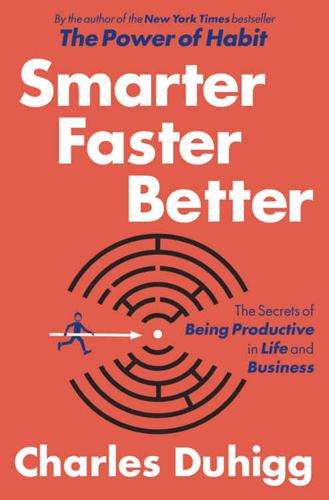
Smarter Faster Better: The Secrets of Being Productive in Life and Business
by
Charles Duhigg
Published 8 Mar 2016
The People Analytics group, part of Google’s human resources division, helped examine if employees were satisfied with their bosses and coworkers, whether they felt overworked, intellectually challenged, and fairly paid, whether their work-life balance was actually balancing out, as well as hundreds of other variables. The division helped with hiring and firing decisions, and its analysts provided insights into who should be promoted and who, perhaps, had risen too fast. In the years before Julia joined the group, People Analytics had determined that Google needed to interview a job applicant only four times to predict, with 86 percent confidence, if they would be a good hire.
…
Over the last two decades, the American workplace has become much more team focused. The average worker today might belong to a sales team, as well as a group of unit managers, a special team planning future products, and the team overseeing the holiday party. Executives belong to groups that oversee compensation and strategy and hiring and firing and approving HR policies and figuring out how to cut costs. These teams might meet every day in person or correspond via email or telecommute from all over the world. Teams are important. Within companies and conglomerates, government agencies and schools, teams are now the fundamental unit of self-organization.
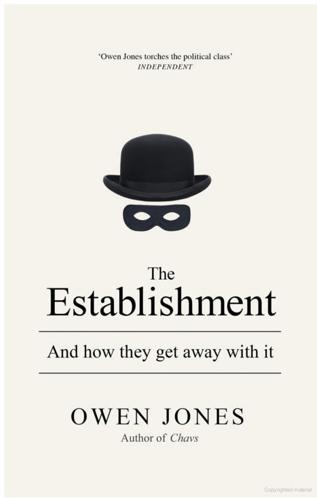
The Establishment: And How They Get Away With It
by
Owen Jones
Published 3 Sep 2014
‘But it also means that you’ve got loads of people who have no independent support or voice within their own workplaces and it’s no surprise to us that in the places where the worst abuses have happened, they’re workplaces where the NUJ has got no meaningful presence.’ It is not just the crushing of the unions that has ensured compliance from within. The workforce has become increasingly casualized, making them easy to hire and fire at a whim. Those who step out of line face being tossed aside with barely a moment’s thought. ‘So sticking your head above the parapet and challenging something you’ve been told to do or speaking out against some ill-thought story or editorial approach the next day is career suicide,’ says Stanistreet.
…
If it is good enough for German workers, it is surely good enough for British workers, and would give them a voice in their supermarkets, call centres, offices and other places of work, instead of treating them as chattels to be exploited. It would need to be complemented by other policies to stop workers being reduced to hire-and-fire fodder to be disposed of at will by employers, such as scrapping zero-hour contracts. An official policy of building full employment is also critical, which has the advantage of best guaranteeing the negotiating power of labour. Bosses would no longer be economic despots in Britain’s workplaces.
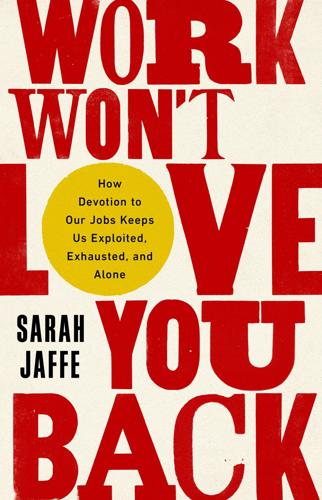
Work Won't Love You Back: How Devotion to Our Jobs Keeps Us Exploited, Exhausted, and Alone
by
Sarah Jaffe
Published 26 Jan 2021
If you cannot get a job, it must be because you failed to do enough (unpaid) work to acquire the correct skills; if you get that job and it makes you miserable, just get another! Such discourse justifies the constant job-hopping that provides companies with what they want: just-in-time labor, easily hired and fired, easily controlled. 21 There’s another famous Thatcherism for this process, usually paraphrased as “There is no such thing as society,” though what she actually said was: “… who is society? There is no such thing! There are individual men and women and there are families.” Without a society, with the lines between the family and the workplace blurring, with little time for a personal life anyway, we are even more likely to try to make work more pleasurable, even to seek in it a replacement for the love we lack elsewhere.
…
High turnover became a blessing for employers who wanted to shed their costliest workers—a shift from the decades of welfare capitalism that characterized even the earliest years of retail work. The shift to what sociologist Peter Ikeler called “contingent control” gave retail stores and other service employers a flexible workforce that can be hired and fired at need. Those workers, in other words, are unlikely to be around long enough to question managers’ power. Ann Marie Reinhart’s decades at one retailer, by the 2000s, was a rare experience. 25 By 2013, less than 5 percent of American retail workers were members of unions, down from 11 percent in 1983.
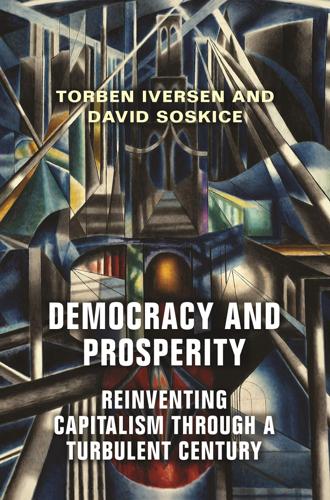
Democracy and Prosperity: Reinventing Capitalism Through a Turbulent Century
by
Torben Iversen
and
David Soskice
Published 5 Feb 2019
It is often wrongly thought that the knowledge of the company is a technology which can be codified and patented; but technology is almost always cospecific with the tacit skills of the workforce (Teece, 1986). The level of skills and education is relative to the prevailing technology, but management in the advanced sectors has always had to secure the cooperation or motivation of the labor force, because of the significant costs of hiring and firing. This is as true of semiskilled workers under Fordism as of contemporary software engineers: they could easily stop the line, and replacing them involved both strikes and significant retraining costs, especially if training new workers required the tacit cooperation of existing semiskilled workers.
…
As noted, Fordism took more or less skill-intensive forms, and economies of scale were important to different degrees, but in one crucial respect Fordism had the same effect everywhere: it empowered semiskilled workers to hold up production and hence potentially influence relative wages and hiring and firing decisions. This potential gave semiskilled workers a powerful incentive to organize, and it made employers and skilled workers receptive to demands from below. The importance of complementarities in production for wage setting is set out in an overlooked article by Michael Wallerstein (1990) (although he does not explicitly discuss Fordist technology).

The Optimist: Sam Altman, OpenAI, and the Race to Invent the Future
by
Keach Hagey
Published 19 May 2025
Altman’s belief that things work best within a tight, trusted network—or, as he later framed it in a public talk with Jack, the importance of “finding your tribe”—was perhaps most clearly revealed by the board of overseers he set up shortly after becoming president of YC.13 Modeled on such entities at universities including Harvard, which are more advisory and have less governing authority than boards of directors, the group had pretty much one job. “The Board will be responsible for hiring and firing the YC President, and occasionally helping with strategic direction,” Altman wrote. “Hopefully it doesn’t have to meet very often.” Many of Altman’s friends were named to the board: Brian Chesky (founder of Airbnb and Altman’s fellow Sequoia scout); Adora Cheung (the founder of YC graduate Homejoy); John Collison; Patrick Collison; Drew Houston (founder of YC superstar Dropbox); Jessica Livingston; David Rusenko (founder of YC graduate Weebly); and Emmet Shear (Altman’s batchmate and founder of Justin.tv and Twitch).
…
Altman’s ambition had turned out to be a double-edged sword. Part of their anger stemmed from the chaos resulting from Altman’s departure. While Altman had increased the size and scope of YC, he had not meaningfully professionalized its governance. The low-key board of overseers he set up and theoretically given the job of hiring and firing YC’s CEO had—true to his stated desire that it would rarely have to meet—never met once. YC had no true board of directors and no official process in place to search for a replacement for Altman. Without a real board, it effectively required Graham’s in-person presence to help legitimize Ralston as the new leader, in much the same way it would help shore up Ralston’s successor, Garry Tan, a few years later.

The Origins of Political Order: From Prehuman Times to the French Revolution
by
Francis Fukuyama
Published 11 Apr 2011
Before our more secular modern age, the most obvious source of just laws outside the political order was religion. But religiously based laws constrained rulers only if religious authority was constituted independently of political authority. If religious authorities were poorly organized, if the state controlled their property and the hiring and firing of priests, then religious law was more likely to bolster political authority than to limit it. So to understand the development of the rule of law, one must look not to just the source and nature of religious rules themselves but also the specific ways religious authority is organized and institutionalized.
…
One of Samuel Huntington’s criteria for institutional development is autonomy, and no organization can be autonomous if it does not have control over the appointment of its own officials. This is why the controversy over investiture was so central. After the Concordat of Worms, the pope through the church hierarchy became, for the time being, its undisputed chief executive officer, who with the advice of the College of Cardinals could hire and fire bishops as he pleased. The church cleaned up its own act. The celibacy of the priesthood removed the temptations of the patrimonial awarding of lucrative benefices to kinsmen and descendants, and set a new moral tone with regard to the sale of church offices. The church could also collect its own taxes in the form of the tithe, and with the disentangling of the priesthood from local clan politics it was better able to dispose of its own fiscal resources.
…
They were also increasingly characteristic of the church bureaucracy after its liberation from lay investiture and the imposition of celibacy on the priesthood. The church, for example, began to distinguish between officium and beneficium—office and benefice—in the early twelfth century. No longer would officeholders necessarily receive feudal benefices; they could now simply be salaried employees of the church, who could be hired and fired based on their performance in their office. These bureaucrats began to staff new offices like the Papal Chancery that soon became the model for the chanceries of secular rulers.20 LAW AND THE RISE OF THE MODERN STATE The political order in Europe at the time of the Gregorian reform saw the beginnings of a reversal of the extreme decentralization of power that had taken place after the breakup of the Carolingian Empire in the ninth century.
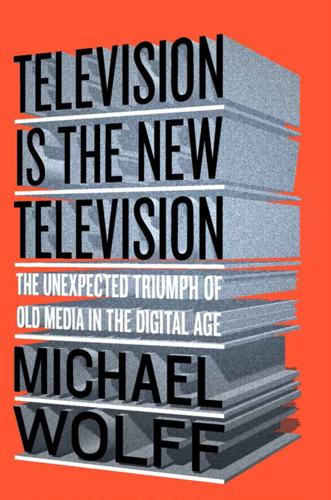
Television Is the New Television: The Unexpected Triumph of Old Media in the Digital Age
by
Michael Wolff
Published 22 Jun 2015
While Denton has rebuffed all offers to buy his profitable business, BuzzFeed searches the market for a greater fool. Gawker, or the Gawker identity, Denton seemed to acknowledge in his memo, is a casualty in the race for traffic: Gawker succeeded because it was a carefully molded product (a small band of young people overseen by Denton—with Denton constantly hiring and firing his editors). But then it morphed into a business with a much larger number of ever-younger people having to produce more and more, and working with less and less editorial vision or leadership. Gawker began to focus on an open area of parallel writing (i.e., free writing) designed to enhance its traffic base—but, too, with the natural effect of diluting quality and confusing purpose.

The Left Case Against the EU
by
Costas Lapavitsas
Published 17 Dec 2018
During the last two decades and more, class differences have been sharply exacerbated in Germany, inequality has increased, and precarious employment has swept across the labour force.12 The Schröder government’s so-called ‘Agenda 2010’ promoted deregulation of the labour market, giving enterprises greater freedom to hire and fire. At the same time rules were loosened to permit the increase of part-time and temporary jobs, leading to an extraordinary rise of precarious employment. Even more consequential was the introduction of the so-called ‘Hartz Reforms’, particularly those referring to unemployment benefits (Hartz IV).
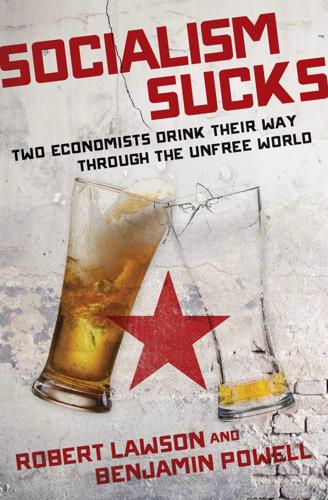
Socialism Sucks: Two Economists Drink Their Way Through the Unfree World
by
Robert Lawson
and
Benjamin Powell
Published 29 Jul 2019
Unfortunately, many people did not understand the value of the vouchers and were eager to sell them cheaply, even bartering them for food and booze, and unscrupulous brokers took advantage of them. Private property is essential, but not sufficient, to support a free-market system, which also relies on other economic freedoms—such as the freedom to start a business, produce goods, compete with other businesses, set prices, and hire and fire employees. When Kakha Bendukidze came on the scene, virtually every sphere of the Georgian economy was in desperate need of economic liberalization. Not only did the state own many industries, but taxes were high, and bureaucratic regulation stifled entrepreneurs. Georgia’s post-Soviet income tax and payroll tax systems were designed with the help of the International Monetary Fund and patterned after high-income nations.
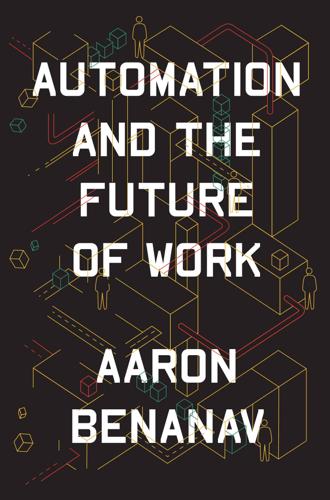
Automation and the Future of Work
by
Aaron Benanav
Published 3 Nov 2020
In these regions, postwar labor market institutions were mostly designed not by left-wing governments but by right-wing politicians who emphasized the importance of national-imperial identities, the formation of male-breadwinner households, and the maintenance of relatively fixed workplace hierarchies.14 In return for accepting corporatist arrangements, male heads of households received substantial job protections: unlike in the United States, regularly employed workers were not hired and fired at will. For a crude measure of the difference that has made, we can look to the OECD index of employment-protection levels, which measures, on a scale of 0 to 6, the degree to which employees are protected from individual firings. Permanent workers in the US barely register at all on this index (at 0.5), while workers in the UK (at 1.2), Japan (1.6), Germany (2.5), Italy (2.5), and France (2.6) have been much more protected (Figure 4.2).15 In the latter countries, heads of households who obtained permanent jobs were largely insulated from market pressures associated with a declining demand for labor.
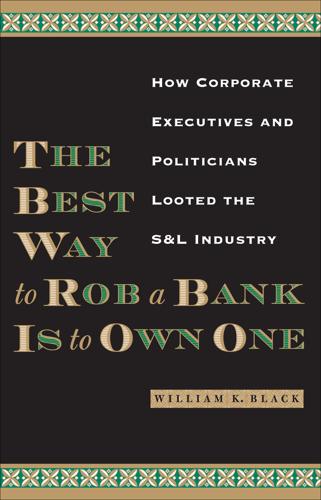
The Best Way to Rob a Bank Is to Own One: How Corporate Executives and Politicians Looted the S&L Industry
by
William K. Black
Published 31 Mar 2005
Andersen’s resignation letter and Atchison’s letter to the Keating Five were blatant, false advocacy pieces. Auditors are supposed to be independent and objective; they must never become advocates for the client. Here, they became advocates for the individual destroying the client because he was the person who hired and fired them (and in Atchison’s case, quadrupled his salary). Keating bragged to the FHLB-Seattle that he spent $50 million hiring outside professionals to fight the 1986 FHLBSF examination (U.S. House Banking Committee 1989, 3:776). Some of that was for consultants such as Fischel and Benston, but it went overwhelmingly to Arthur Young and to Keating’s top outside law firms: Kaye, Scholer and Jones, Day.
…
Real estate developers who bought S&Ls during 1981–1984 were the CEOs most likely to become control frauds. They had serious conflicts of interest and few institutional or personal loyalties. Whistle-blowers were rare at S&L control frauds. One of the lessons we should have learned from the debacle is that control frauds’ ability to hire and fire personnel makes whistle-blowing an extremely risky act. True whistle-blowers—those who inform the public or the authorities of control fraud—have been rare during the current wave of financial scandals. We cannot rely on whistle-blowers to do the work regulators and the criminal justice system should do against control fraud. 11.
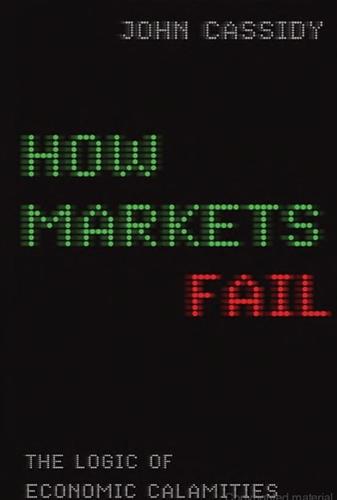
How Markets Fail: The Logic of Economic Calamities
by
John Cassidy
Published 10 Nov 2009
If everybody acts on their own opinion, you’d have a diversity of opinion in the marketplace, whereas this way everybody is following the group. If the group shifts, then everybody shifts.” Following the publication of the Scharfstein and Stein paper, other researchers provided empirical evidence that supported it. After analyzing the hiring and firing of fund managers at mutual fund firms such as Fidelity, Franklin Templeton, and T. Rowe Price, Judith Chevalier, who is now at the Yale School of Management, and Glenn Ellison, of MIT, concluded that young fund managers who followed investment strategies that deviated significantly from their peers were more likely to lose their jobs, regardless of how their funds performed.
…
The threat of being fired gave the fund managers a strong incentive to invest in popular sectors even if they believed they were overvalued, Chevalier and Ellison concluded. In another paper that supported the rational herding model, Harrison Hong, of Princeton, Jeffrey D. Kubik, of Syracuse University, and Amit Solomon, who was then at Salomon Smith Barney, found a similar pattern in the hiring and firing of Wall Street securities analysts—the folks who produce quarterly earnings forecasts that investors rely on. Looking at the period from 1983 to 1996, the researchers found that inexperienced analysts who produced forecasts that differed significantly from the industry consensus tended to lose their jobs at higher rates.

The Streets Were Paved With Gold
by
Ken Auletta
Published 14 Jul 1980
That requires sensitivity and leadership, and not just from commissioners and middle managers. If New York is in a wartime-like crisis, only the chief executive can inspire people to “shared sacrifice.” Only the mayor can command people’s attention, define the challenges, set the goals. Only the mayor can hire and fire commissioners. Only the mayor receives a mandate from the electorate. Good management also requires a system of measuring managers. Goaded by the Emergency Financial Control Board and the Management Advisory Board—not to mention the new City Charter passed in 1975—the city initiated a management-by-objectives program.
…
“Civil Service makes it difficult for managers to perform,” said Jacob Ukeles of the Management Advisory Board. “For example, we have thousands of titles in the Civil Service, so it’s difficult to transfer people. The number of steps in the grievance system takes nine or more months. To manage, you need the ability to hire and fire, to redeploy, to change responsibilities. And you don’t have those things.” Commissioner Russo uses saltier language: “You could have the worst possible banana and still not be able to bring him up on charges.” The Mayor’s Management Advisory Board, in 1977, counted more than 3,900 different Civil Service job titles, in 243 occupational groups.
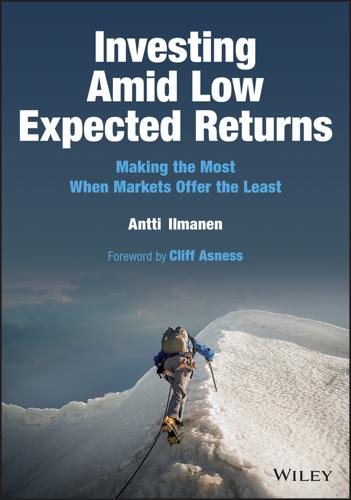
Investing Amid Low Expected Returns: Making the Most When Markets Offer the Least
by
Antti Ilmanen
Published 24 Feb 2022
Figure 16.4 Cumulative Performance of Contrarian Market Timing Versus Buy&H... Figure 16.5 Equity and Bond Market Timing Strategy Sharpe Ratios Based on 1–... Figure 16.6 Boosting Sharpe Ratio with Factor Diversification or Factor Timi... Chapter 17 Figure 17.1 US Pension Plan Sponsors' Hire and Fire Decisions, 1996–2003 Figure 17.2 Momentum and Reversal Patterns in US Stock Returns, 1931–2018... Additional Praise for Investing Amid Low Expected Returns: Making the Most When Markets Offer the Least “Antti has written an important book addressing the most critical challenge to investing for retirement – low prospective returns for the key asset classes.
…
We first study annual data from CEM Benchmarking on evolving US pension funds' asset allocations between 1990 and 2011 to provide direct evidence on pension funds' procyclic tendencies. We then contrast such multiyear procyclic flows with the common multiyear reversal patterns in financial market returns. Figure 17.1 US Pension Plan Sponsors' Hire and Fire Decisions, 1996–2003 Sources: AQR, Goyal and Wahal (2008). Figure 17.2 Momentum and Reversal Patterns in US Stock Returns, 1931–2018 Source: Data from Ken French Data Library. Notes: Decile-sorted portfolios formed on Momentum and portfolios formed on Long-Term Reversal, where the 10 sort refers to the highest value.

The Flat White Economy
by
Douglas McWilliams
Published 15 Feb 2015
This was especially true since labour market restrictions that are conventional in continental Europe tend, in a recession, to protect existing jobs at the expense of new entrants to the labour force – which causes the employment burden of recession to be felt much more intensely in youth unemployment. The solution for many unemployed youths in continental Europe was to come to London. English is generally the second language for most of Europe so there isn’t much of a language barrier. Because of the more flexible (read greater hiring and firing) nature of the UK’s labour market, there are many more jobs available there, and especially in London. The city also has a well-deserved reputation as being the party capital of Europe (excluding holiday resorts like Ibiza) – as early as the 1990s once the Eurostar had got into full operation, as many as 50,000 French youths visited London every weekend to go to the clubs, bars and pubs and enjoy the 24 hour weekend city.
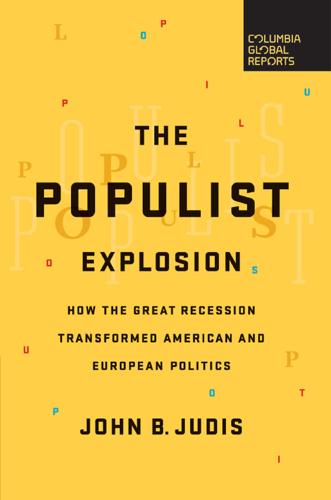
The Populist Explosion: How the Great Recession Transformed American and European Politics
by
John B. Judis
Published 11 Sep 2016
After being highly critical during the election of the EU’s growth and stability pact limiting the size of deficits, Jospin adhered to it. After taking office in Germany in 1999, Social Democratic Chancellor Gerhard Schröeder oversaw an agreement between German unions and management in 1999 to hold down wages. In 2003, Schröeder championed the controversial Hartz laws that made it easier for firms to hire and fire workers. Labour Prime Minister Tony Blair, who took office in 1995, continued Thatcher’s policy of deregulating finance and business. Asked in 2002 what her greatest achievement was, Thatcher replied, “Tony Blair and New Labour. We forced our opponents to change their minds.” Some of the Socialist, Social Democratic, and Labour parties succeeded in winning office and even reelection, as Blair did, but in abandoning their support for an expanding public sector and for viable manufacturing industries in favor of supporting free trade, deregulated finance, and a globalized capitalism, they began to forfeit the loyalty of their working-class constituents.
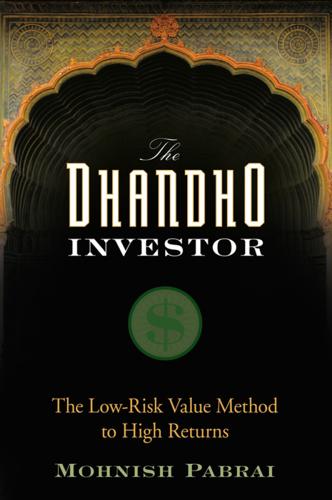
The Dhandho Investor: The Low-Risk Value Method to High Returns
by
Mohnish Pabrai
Published 17 May 2009
He now worked from 8:00 AM until 5:00 PM at Cherokee and then from 5:30 PM until 11:00 PM at the gas station. The Persian gas station owner recognized Manilal’s integrity and hard work ethos, and he made him the defacto manager of the gas station. Besides his wages, he gave Manilal 10 percent of the gas station’s net profit. Manilal managed the place like an owner. He hired and fired staff as required and made sure the gas station ran without a hitch. Manilal became intimately familiar with the gas station business, the margins on various items, the overheads, how much money the business made, and so on. By 1998, the Chaudharis’ had bought a condo for his sister’s family and another home in Foothill Ranch for $169,000.

Why Orwell Matters
by
Christopher Hitchens
Published 1 Jan 2002
Just as a matter of record, then:1. The existence of Orwell’s list of Stalinized intellectuals was not ‘revealed’ in 1996. It appears in Professor Bernard Crick’s biography, which was first published in 1980. 2. A blacklist is a roster of names maintained by those with the power to affect hiring and firing. To be blacklisted is to be denied employment for political reasons unconnected to job-performance. The word does not now, and never has had, any other meaning. 3. Even if the Daily Telegraph says so, and even if it has chosen not to specify the ‘some’ who chose to think it, the Information Research Department was unconnected to any ‘Thought Police’, to say nothing of the Thought Police as they actually feature in the pages of Nineteen Eighty-Four.
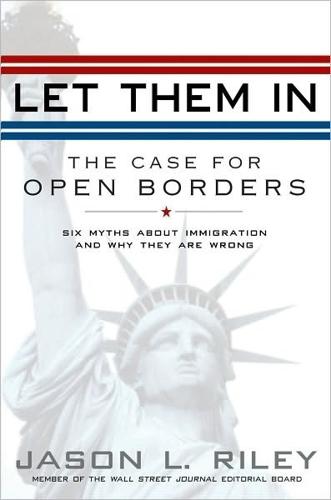
Let Them In: The Case for Open Borders
by
Jason L. Riley
Published 14 May 2008
In about half of those cases the separation is voluntary; in the other half, the worker has been shown the door. But either way, this messy churn, which can disrupt lives and even make obsolete entire industries, has positive macroeconomic consequences in the long run. That’s because flexible labor markets, the kind that minimize the costs to a business of hiring and firing employees, enable workers and employers alike to find the employment situation that suits them best. Flexible labor markets make it easier for an employee who doesn’t like a job, is let go, or simply feels underappreciated by his boss to find another position somewhere else. And flexible labor markets make it more likely that an employer will expand his workforce, or take a chance on a job seeker who isn’t very skilled or perhaps has a spotty record.

End the Fed
by
Ron Paul
Published 5 Feb 2011
The economist Michael Boskin estimates that all of this will lead to $163,000 in new taxes for the typical American family—that is, if it is not inflated away. 6 Even mainstream economists like Joseph Stiglitz are calling this a robbery of the American people. And the more bailouts there are, the more government gets involved in running companies like General Motors, firing and hiring CEOs. Does anyone really think that the federal government should be in the business of hiring and firing CEOs of companies? The U.S. debt obligations are unfathomable, approaching $12 trillion. You might say that the entire federal government is one giant toxic asset at the moment. It certainly has no business telling the private sector how to run its affairs. It is in worse financial shape than all the companies in the private sector put together.
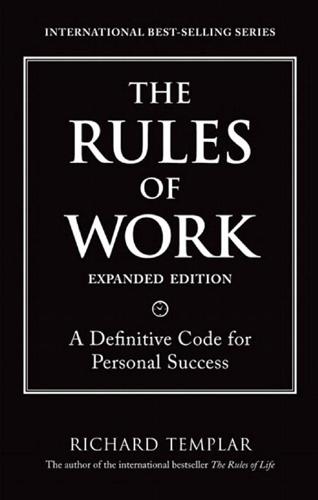
The Rules of Work, Expanded Edition: A Definitive Code for Personal Success (The Rules by Richard Templar)
by
Richard Templar
Published 26 Sep 2002
Having a good time at work means not achieving much, talking a lot, winding up colleagues, and drinking champagne all afternoon. There is a difference, I’m sure you will agree. Having a good time at work 20 THE RULES OF WORK RULE 9 is a temporary thing. It lasts while the fun lasts but quickly flags once the excitement, the elation, has worn off. Work being good means enjoying the negotiating, the hiring and firing, the day-to-day challenges, the stresses and disappointments, the uncertain future, the testing of one’s mettle, the new learning curves. A surprising number of people die within a year of retirement—this suggests that work is more important to our existence than we think. If you ain’t enjoying all this and appreciating that it is enjoyable, then you are doomed to be one of the moaners, one of life’s victims.
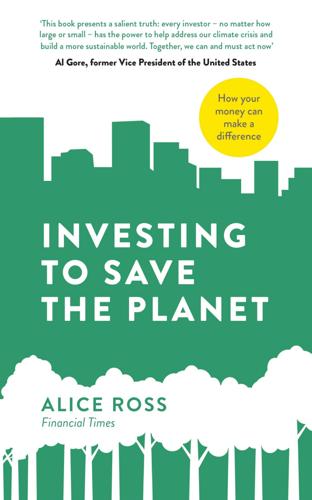
Investing to Save the Planet: How Your Money Can Make a Difference
by
Alice Ross
Published 19 Nov 2020
The biggest investors are generally pension funds, sovereign wealth funds and university endowment funds: so-called asset owners, rather than asset managers. Like retail investors, they are looking for the best professionals to manage their money; unlike retail investors, they have so much money they can hire and fire those fund managers. The largest pension fund in the world, for example, the $1.5tn Government Pension Investment Fund of Japan, raised eyebrows in 2019 when it started shifting tens of millions’ worth of assets to LGIM from one of LGIM’s huge rivals, in a move that was widely interpreted as a lack of confidence in the rival’s voting record on climate change at the companies it invested in.

Angrynomics
by
Eric Lonergan
and
Mark Blyth
Published 15 Jun 2020
So, the inequality we see in income and wealth has a mirror in the returns to capital itself. This is relevant to private anger because in highly flexible labour markets, firms with razor-thin margins who are extremely price sensitive will have strong incentives not to raise wages, and their survival will require a strong propensity to hire and fire. That goes someway to explaining low wage growth. As more and more sectors are affected by these forces, many of those stresses will be passed on to workers. We see this in the rise of zero-hours contracts in the UK, the rise in minimum-wage jobs, and the growth of platform driven employment such as Task Rabbit and Amazon Mechanical Turk – the so-called “gig economy”.

The Social Animal: The Hidden Sources of Love, Character, and Achievement
by
David Brooks
Published 8 Mar 2011
Different national cultures, she said, have different motivational systems, different relationships to authority and to capitalism. Germany, for example, has tight interlocking institutions like work councils. It also has labor markets that make it hard to hire and fire people. These arrangements mean that Germany excels at incremental innovation—the sort of steady improvements that are common in metallurgy and manufacturing. The United States, on the other hand, has looser economic networks. It is relatively easy to hire and fire and start new businesses. The United States thus excels at radical innovation, at the sort of rapid paradigm shifts prevalent in software and technology. Harrison dismissed her with a wave of the hand.
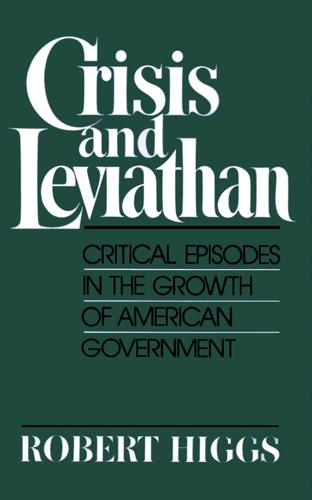
Crisis and Leviathan: Critical Episodes in the Growth of American Government
by
Robert Higgs
and
Arthur A. Ekirch, Jr.
Published 15 Jan 1987
Employment Service and the Selective Service System and granting it authority to regulate the hiring and recruitment of workers in areas it designated as critical. In a related action, on December 5, almost all voluntary enlistments in the armed forces were terminated; henceforward the draft would provide personnel for the Navy and the Marines as well as the Army. Although private employers retained their prerogatives to hire and fire (subject, of course, to any restrictions imposed by collective labor contracts), the WMC could now exert a powerful influence on the allocation of labor. 53 The WMC moved on several fronts. In January 1943 McNutt issued a "work-or-fight" order, threatening men in "nonessential" jobs with conscription.
…
Union leaders knew that national service would put an end to genuine collective bargaining and render them personally superfluous. Philip Murray warned the CIO executive board: destroy collective bargaining "and see how effective you will be with your people back home. You will find out how quick they will tell you to go to hell." Businessmen, of course, wanted to retain control over hiring and firing. They also perceived that drafting civilian labor would lead directly to demands for "conscription of profits"-that is, confiscatory taxation-and governmental takeovers of their production facilities. 57 Stimson and those in his camp had little regard for individual liberty in wartime, but they had at least the virtue of moral (immoral?)

Essential Scrum: A Practical Guide to the Most Popular Agile Process
by
Kenneth S. Rubin
Published 19 Jul 2012
In this capacity, the ScrumMaster is empowered to ensure that the Scrum team enacts and adheres to the Scrum values, principles, and practices along with the Scrum team’s specific approaches. The ScrumMaster continuously helps the Scrum team improve the process, whenever possible, to maximize delivered business value. Authority in this context is not the same type of authority that a functional manager or project manager would have. For example, the ScrumMaster doesn’t hire and fire and cannot dictate to the team what tasks it should do or how to do them. The ScrumMaster also is not responsible for making sure the work gets done. Instead, the ScrumMaster helps the team define and adhere to its own process for making sure the work gets done. Interference Shield The ScrumMaster protects the development team from outside interference so that it can remain focused on delivering business value every sprint.
…
If they are unsuccessful, the ScrumMaster, as Scrum team coach, would work with Fred to help him be a more effective team member. If coaching doesn’t work, Fred’s situation would most likely escalate out of the Scrum team to his resource manager (the person to whom Fred reports within the organization), because the ScrumMaster does not have hiring and firing authority. At this point Fred’s resource manager (perhaps in conjunction with someone from human resources) would handle his performance issues in a humane and appropriate manner. The resource manager would certainly want to consult the ScrumMaster and development team members to deepen his understanding of the situation.

Status Anxiety
by
Alain de Botton
Published 1 Jan 2004
It can, for example, be heard no less clearly, nearly a century and a half after Stendhal’s lament, in Charles Bukowski’s poem “Something for the To uts, the Nuns, the Grocery Clerks and You” (1965), which evokes the lives of wealthy businessmen: with bad breath and big feet, men who look like frogs, hyenas, men who walk as if melody had never been invented, men who think it is intelligent to hire and fire and profit, men with expensive wives they possess like sixty acres of ground to be drilled or shown-off or to be walled away from the incompetent … … men who stand in front of windows thirty feet wide and see nothing, men with luxury yachts who can sail around the world and yet never get out of their vest pockets, men like snails, men like eels, men like slugs, and not as good.
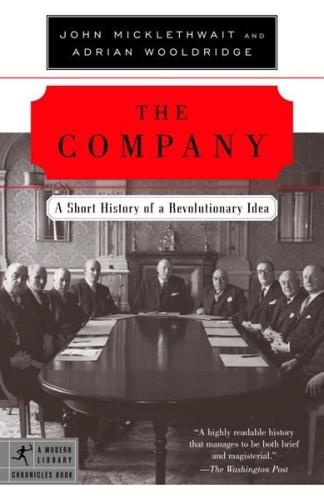
Company: A Short History of a Revolutionary Idea
by
John Micklethwait
and
Adrian Wooldridge
Published 4 Mar 2003
The 1991 Civil Rights Act, signed by George Bush senior, imposed huge regulatory burdens on businesses. It also created a litigation bonanza by increasing attorneys’ fees and allowing claims for “emotional injury.” American managers were more restricted than ever before in performing one of their most basic functions—hiring and firing. They could not ask about such things as an applicant’s family or his health. Bill Clinton was a still more fervent micromanager. By the end of the century, the cost of meeting social regulations to American firms was $289 billion a year, according to the Office of Management and Budget, a figure that other experts reckon was only a third of the real amount.31 And there were other “costs” to America—particularly the ever-growing amount of time that companies put into political lobbying (both in Washington, D.C., and in various state capitals) to twist this sprawling thicket of rules to their own advantage.

Everest the Cruel Way: Climbing Mount Everest at Its Hardest: The 1980 Winter Attempt on the Infamous West Ridge
by
Joe Tasker
and
Chris Bonington
Published 30 Sep 2013
We were completely in the hands of our Base Camp staff, as we could not keep a check on all our equipment all of the time. Fortunately Nepalese generally and the Sherpas in particular have a high reputation for honesty. On Kangchenjunga to we had handed over the money to Ang Phurba, our Sirdar; and he had hired and fired the porters as necessary; presenting us with a detailed, if crudely written, set of accounts from time to time. We therefore struggled against admitting to ourselves the possibility that this time our Base Camp staff might be dishonest. Dawa, who was reputed to be a very capable and experienced Sherpa, arrived with the remaining loads.

Palo Alto: A History of California, Capitalism, and the World
by
Malcolm Harris
Published 14 Feb 2023
“By the end of the 1960s,” writes economist Harry Braverman in his study of postwar shifts in the composition of the labor force, “rising rates of unemployment among ‘professionals’ of various kinds once more brought home to them that they were not the free agents they thought they were, who deigned to ‘associate themselves’ with one or another corporation, but truly part of a labor market, hired and fired like those beneath them.”2 The newest inventions and advances were for unused missiles. Making missiles and database systems was, if not morally repugnant, at least boring and pointless. Journalist Steven Levy writes that computers were “loathed by millions of common, patriotic citizens” who saw them as a “dehumanizing factor in society.”i3 The dull technophile engineer with a new stereo became a stereotype, and the Japanese commodity-electronics industry threatened from across the Pacific.
…
Journalist Michael Malone, fellow son of the Bay Area space settlers, described the hypocrisy: “While the company propaganda stressed its community, its democracy, its adherence to the ideals of the Howdy Doody generation, each day an unmarked car picked up blank boards and boxes of chips from Apple’s back door and delivered them to a roomful of Filipino women and housewives in a Saratoga home, who watched soap operas and stuffed boards at piece rates.”42 That network is what really made Apple a desirable partner. At its simplest, Xerox wanted Apple because Apple could make computers without unions, which meant it could develop production efficiencies without worrying about the impact on employees: offshoring, subcontracting, technological speedup, hiring and firing according to the market’s real-time demands.43 Santa Clara County claimed the country’s highest concentration of temp workers.44 Any laborers a company couldn’t easily replace were aligned with ownership via stock options: The professional employees swapped their guaranteed pay for a more direct stake in growth.
…
When a company spokesman smirkingly denied it on Twitter (“You don’t really believe the peeing in bottles thing, do you? If that were true, nobody would work for us”) he opened the door for journalists, and many news outlets found an abundance of evidence, including smoking-gun pictures of amber water bottles.38 Since people quit so often, Amazon uses a semi-automated system for hiring and firing to slake its constant thirst for fresh labor. Warehouse roles aren’t contracted out, but the firm has worked very hard to make all its fulfillment jobs plug-and-play, reducing the training period to less than one week. That investment in divestment allows Amazon to employ relatively vulnerable people, including felons, recent immigrants, and the elderly.

The Thank You Economy
by
Gary Vaynerchuk
Published 1 Jan 2010
And if his handlers or agents had been smart, they would have been watching Twitter while LeBron made his announcement, seen the public reaction, given him a talking-to during a commercial break, and allowed him to express his regret on the spot for upsetting so many people. That would have been news! In any scenario, however, his apology would have to be genuine. There’s never a time when real doesn’t work. Hiring and Firing I value good teamwork more than almost anything. Though I rarely fire anyone, over the years I’ve had to let go of five of the most talented employees that have ever worked at Wine Library, because they just couldn’t play nice with the other boys and girls. That was culturally unacceptable in my company.

Without Their Permission: How the 21st Century Will Be Made, Not Managed
by
Alexis Ohanian
Published 30 Sep 2013
Congress had abysmal approval ratings back then—worse than colonoscopies1—yet the Internet public realized that the connected web could give them leverage over even the richest and most entrenched lobbying groups. We had our congressional representatives and senators on speed dial. We would call them to check up on things and correct them when they did something bad—just as a good boss should. We paid their salaries, we hired and fired them—why shouldn’t we know what they’re up to? Social media, which gave us unprecedented access into the mundane lives of strangers, made us feel entitled to know what our elected officials were doing and helped us to hold them accountable. It even looked like we were going to develop better politicians in the process, as their attention became more focused on their voters than on the biggest donors to their campaigns.

Cold Hands
by
John J. Niven
Published 14 May 2012
But in the end the old man begged her, offered her crazy money and the chance to become editor by the time she was thirty. Sammy made a real go of the job though, overcoming the prejudices of a lot of hard-nosed subs and section editors in the process. She upped the circulation by 20 per cent over five years and dragged the paper out of the eighties and into the new technology of the nineties, hiring and firing quite a bit in the process. I met Sammy at the college in Regina, back in 1998, where I was a mature student on the journalism programme. I’d been in Canada maybe five years then, Toronto first, then out here in Saskatchewan. Sammy came to talk to my class. Even though she was only a few years older than me she seemed impossibly sophisticated and assured, a real journalist, someone living the life I was aspiring to.
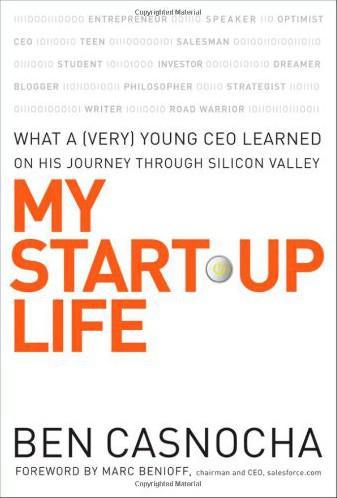
My Start-Up Life: What A
by
Ben Casnocha
and
Marc Benioff
Published 7 May 2007
We talked for hours about the business in between dozens of sales pitches. In our conversations, I tried to bring him up to speed as fast as possible. I didn’t, however, want to destroy the precious window of time when his unknowingness made us revisit basic assumptions. The two best moments to receive high-quality feedback from people are when they are hired and fired. At the start they ask many 90 LIFE AS A ROAD WARRIOR 91 “dumb questions,” which usually have gone foolishly unchecked for years, and at the end, in an exit interview, they can deliver feedback with the most possible candor. This is another mistake I made with our interim CEO: I inundated him with so much information that it probably squelched any fresh creative bursts he might have had after initial exposure to Comcate ideas. >> I learned a lot about Dave and he became someone for whom I developed a great deal of fondness.

Think Twice: Harnessing the Power of Counterintuition
by
Michael J. Mauboussin
Published 6 Nov 2012
But even though industry pros intellectually understand the importance of luck, they consistently fail to incorporate that knowledge into their decisions. Amit Goyal, a finance professor at Emory University, and Sunil Wahal, a finance professor at Arizona State University, analyzed how thirty-four hundred retirement plans, endowments, and foundations (plan sponsors) hired and fired firms that manage investment funds over a ten-year period. The researchers found that plan sponsors tended to hire managers who had performed well in the recent past. And the number one reason to fire a manager was poor performance. Consistent with reversion to the mean, the researchers noted that in subsequent years, many of the managers who were fired went on to outperform the managers who were hired (see figure 8-2).8 Individual investors behave similarly.
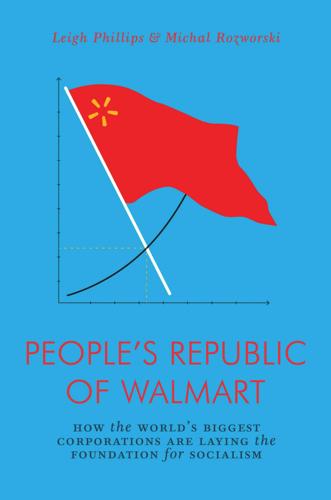
The People's Republic of Walmart: How the World's Biggest Corporations Are Laying the Foundation for Socialism
by
Leigh Phillips
and
Michal Rozworski
Published 5 Mar 2019
This unpredictability in either direction is a major contributing factor to economic crisis as companies struggle (or fail) to cope with situations of overproduction, having produced much more than they predicted would be demanded and being unable to sell what they have produced above its cost. Insufficient stock can be just as disruptive as overstock, leading to panic buying, reduced trustworthiness by customers, contractual penalties, increased costs resulting from training and layoffs (due to unnecessary hiring and firing), and ultimately loss of contracts, which can sink a company. While there is of course a great deal more to economic crisis than the bullwhip effect, the inefficiencies and failures produced by the bullwhip effect can be key causes, rippling throughout the system and producing instability in other sectors.

A Clearing in the Distance: Frederick Law Olmsted and America in the 19th Century
by
Witold Rybczynski
Published 1 Jan 1999
The southern half of the park, now largely complete, was unquestionably a success. The problem was that it was expensive—or, at least, more expensive than anyone had expected. Green promised to control costs. And costs, not aesthetics, were uppermost in their minds. Finally, in June, they decided—on Green. Henceforth the comptroller would oversee expenses, hire and fire park employees, and have overall supervision of construction. Olmsted’s three-year tenure as architect-in-chief of Central Park was at an end. The board had called Olmsted’s bluff. For bluff it was: he did not resign. He remained as superintendent, continuing to oversee “finishing, planting and maintenance.”
…
He hated being second-guessed. “If Jenkins or Knapp ask me for instructions, instead of taking hold to answer them, I think, ‘What have the Committee said about that?’ ‘How is that under the rule of the Committee?’ ‘What will the Committee think about it?’ ” The Committee questioned his decisions about hiring and firing. In December it passed a resolution limiting the general secretary’s discretionary spending to one thousand dollars, except in emergencies. This drove Olmsted to consider resigning. Only the exhortation of Bache, the vice president of the board, who had become a close friend, persuaded him to stay.

Class Warfare: Inside the Fight to Fix America's Schools
by
Steven Brill
Published 15 Aug 2011
“You have to do it informally or casually to avoid trouble,” she explains, by which she means those complaints of harassment from the union representative in the building, which can take hours of meetings to resolve, or even anonymous calls alleging wrongdoing to the corruption hotline. Under the contract, only one formal observation per term is allowed to count officially for the annual evaluation, and the union representatives typically insist that the teacher receive advance notice before that observation takes place. “Give me the ability to hire and fire the ones I want and give me a school day from eight to five like they have on the other side, and I’d have hundreds of little Einsteins running around here, too,” Burgess-Harper says. Burgess-Harper’s realization, and frustration, after little more than a year on the job—that she too could produce those little Einsteins, if she could change the rules and the expectations on her side of the building—is something Jessica Reid understands well
…
Twenty minutes later, after we had left the room, Levin rattled off four things he had seen misfiring: an imperfect bulletin board, three students whose eyes were wandering, the teacher turning her back to face the blackboard, an incomplete reading log. “Making all those things work is the job,” he continued. “It’s exhausting and it’s not exciting, but it’s what you have to do.” Levin acknowledged that he was at least free to try because he was not straitjacketed by a union contract. He could hire and fire as he pleased, set the work hours he needed, move the staff around—everything he needed to do to make KIPP work. “That’s totally true,” he said. Then he stopped, looked up, and delivered a dose of reality: “If you tore up every union contract in the country,” he began “that would just give you the freedom to try.
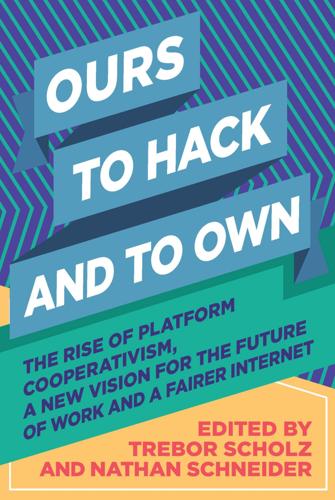
Ours to Hack and to Own: The Rise of Platform Cooperativism, a New Vision for the Future of Work and a Fairer Internet
by
Trebor Scholz
and
Nathan Schneider
Published 14 Aug 2017
BREAK THE BANK AND LIBERATE THE PLATFORM It might be tempting to conclude that, given the domination of private finance in society as a whole, building a cooperative platform would require something like a revolution. But this is not true, and every cooperative in the world proves this every day. Consider a worker-owned factory. In the “standard” investor-owned factory, finance gets pooled together; it buys the labor and materials to build and run the factory, it hires and fires workers, and it keeps whatever profit comes in. In a worker cooperative, however, the workers gather together; they borrow the money to build and operate the factory, they pay it back when they don’t need it, and they keep whatever profit comes in. This worker cooperative turns the platform of finance on its head.

Kelly: More Than My Share of It All
by
Clarence L. Johnson
Published 1 Jan 1985
Engineers still will be required to design and build our defense systems. But the discipline now that will determine what these are is physics. The Russians are graduating five times as many engineers each year as the United States. There is no unemployment of them. Here, unfortunately, there is little or no stability in our programs. It’s train, hire, and fire. The defense of this country and the Free World requires an operations analysis approach—looking at the entire area from scratch, objectively. What would a war be like? Nuclear? Non-nuclear? What weapons will we really need? Expensive nuclear-powered aircraft carriers which might last two or three days?
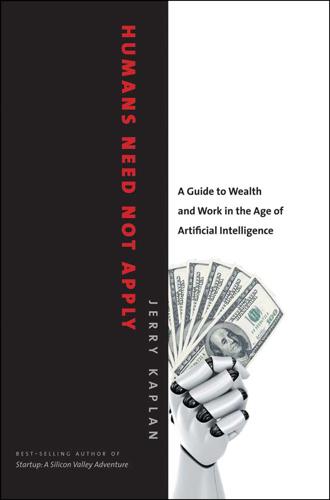
Humans Need Not Apply: A Guide to Wealth and Work in the Age of Artificial Intelligence
by
Jerry Kaplan
Published 3 Aug 2015
And, like the staff of that supersecret project to develop the atom bomb, only a few are cognizant of the breathtaking potential of their work to transform lives and livelihoods, right down to altering our concept of who we are and our proper place in the universe. It’s one thing to make a cute little robot that reads names and addresses, then tootles down the hall delivering intramural mail, but quite another when incrementally more capable versions of this technology operate our farms, manage our pension funds, hire and fire workers, select which news stories we read, scan all our communications for subversive ideas, and fight our wars. Sure, but that’s science fiction. We’ve seen this kind of stuff in the movies for decades and nothing terrible has happened in real life. So what’s the big deal? Why all the fuss now?
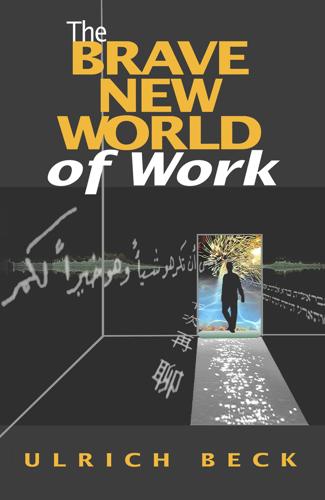
Brave New World of Work
by
Ulrich Beck
Published 15 Jan 2000
Roughly 45 per cent of university teachers share Hoeller's fate, twice as many as in the 1950s. The colleges save in several ways at once: the pay is only 40 per cent or so of a regular professor's; the sizeable pension and health contributions do not apply; and part-timers, unlike professors with tenure, can be hired and fired. This makes it possible for colleges to react swiftly and flexibly to changing preferences on the part of their customers, the students. It is a good deal for the universities, but it splits the country's faculties into two classes. Keith Hoeller feels ‘underpaid and overworked’. Only his presence in the lecture room is remunerated.
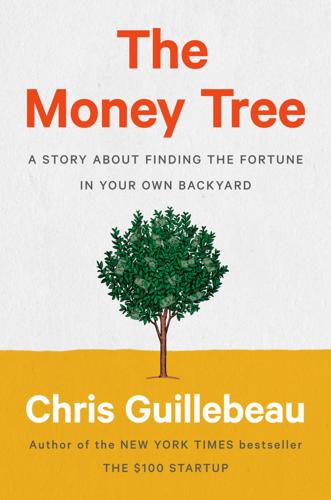
The Money Tree: A Story About Finding the Fortune in Your Own Backyard
by
Chris Guillebeau
Published 6 Apr 2020
What about the assessment tool?” Preena asked. “Yeah,” added Sloan. “I thought everything was riding on that secret algorithm.” He shook his head. “We learned, ah, that the algorithm had some quirks. For example, it recommended eliminating our entire HR department, and since they do the hiring and firing, we weren’t sure how to handle that. In the interest of saving time, we decided to move on manually.” Only one person was being let go. That seemed like good news, but who was it? Jake figured the odds were good that it would be him. It could also be Sloan—but given Sloan’s ability to ingratiate himself (at least before the previous day’s transformation), Jake didn’t hold out much hope for his own survival.
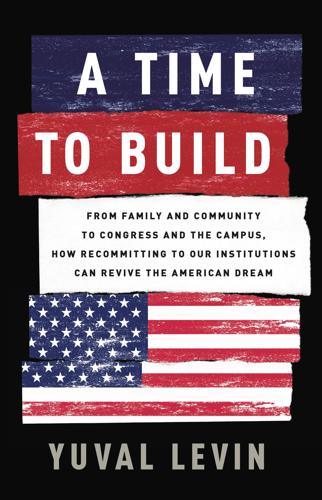
A Time to Build: From Family and Community to Congress and the Campus, How Recommitting to Our Institutions Can Revive the American Dream
by
Yuval Levin
Published 21 Jan 2020
Scholars of our democracy who constantly harp on the ignorance of the individual voter should think about this point: the answer to that ignorance is not to empower experts to rule over us; it’s to allow the structure of our constitutional system—with its checks and balances and overlapping majorities and institutions—to guide our government’s decision-making.6 This is also the case with formalized processes of making consequential decisions in many other kinds of institutions—decisions about hiring and firing, spending, building, and otherwise doing our work throughout society. In this sense, in a functional institution, what is required for good judgment is integrity more than a high IQ. Institutions can allow us to substitute character for calculation. In their absence, we have to substitute calculation for character—which often doesn’t end well.
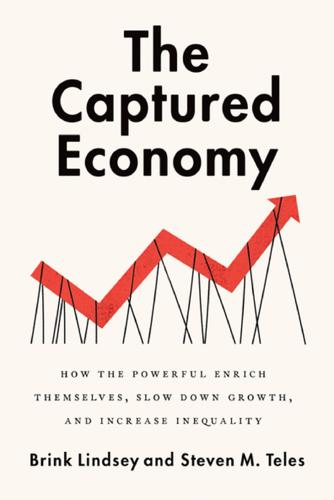
The Captured Economy: How the Powerful Enrich Themselves, Slow Down Growth, and Increase Inequality
by
Brink Lindsey
Published 12 Oct 2017
Foundations have put considerable resources into supporting mayoral control of schools8 (which has pulled decision making away from teacher-controlled venues like school boards) and charter schools (which move the venue of decision making away from school boards).9 Foundations have actively supported litigation, such as the lawsuit Vergara v. California brought by the advocacy group Students Matter to challenge protective rules for hiring and firing teachers, the core of teacher union interests.10 In just the past few years, these same foundations have put millions of dollars into grassroots organizing and lobbying, funding state-based organizations like 50CAN and Stand for Children, parent organizations such as Families for Excellent Schools, leadership pipelines like Leaders for Educational Equity and Students for Education Reform, and the advocacy efforts of charter school operators like Success Academy in New York.11 This broad range of third-party-supported education-reform organizations has at least partially evened the playing field in education policy, to the point that some observers are starting to worry that it is the reformers who have captured the political system.12 Regardless of whether you favor the current approaches to environmental protection or education reform, these examples show that it is possible to create an organized and effective opposition in even deeply entrenched, rent-addled policy areas.

Termites of the State: Why Complexity Leads to Inequality
by
Vito Tanzi
Published 28 Dec 2017
In any case it is the government’s protection that contributes to the existence and often to the size of those incomes. Remove that protection and many of these large incomes would vanish. (c) Establishing many market rules in labor markets, such as those that limit the role and the power of unions, as well as rules on the hiring and firing of workers, on minimum wages, on working hours, and on requirements to use unionized workers for public works, national ships for some operations, or national firms for government procurement operations. (d) Perhaps more importantly, establishing rules about the formation and the market power of corporations; about the consequences of bankruptcy; about the limited responsibilities and liabilities of shareholders and managers of corporations; about inheritance of property; about the power of managers to choose members of the executive boards of enterprises; about the operations of corporations; and about the power that banks have acquired in remaining “too big to fail,” power that is allowed by the government and that, in some ways, distorts the operation of the market and creates high incomes for some banks.
…
(f ) Guarantees the availability and the good conditions of essential physical infrastructures (roads, canals, bridges, airports, fresh water, sewer systems, electricity, and others) in the areas where the enterprises operate. (g) Provides basic security for the areas and the social environments in which the enterprises operate, reducing the enterprises’ own costs to protect their assets and their workers from criminal elements. (h) Guarantees to the entrepreneurs the freedom to negotiate the conditions for hiring and firing workers, for buying necessary inputs domestically and internationally, and for getting needed credit and funds from banks, shareholders, and other sources, without the need to get authorizations and permits from government offices or from other organizations, such as labor unions. (i) Guarantees that the entrepreneurs will face and expect to continue to face a stable regulatory and legal framework.

Glock: The Rise of America's Gun
by
Paul M. Barrett
Published 10 Jan 2012
In her mid-twenties at the time, she knew nothing about guns or the firearm business and was not particularly interested in learning. But she wanted a better life and sensed that Glock was offering her something. “I didn’t know how to say no,” she said. The tour of Glock, Inc., turned into an offer of an administrative job, which Monika accepted. The post evolved into overseeing human resources: hiring and firing lower-level employees and complying with regulatory paperwork. Glock sponsored her work visa, allowing her to remain in the country with her mother, who had become a citizen. The pay was generous compared to hotel and restaurant jobs, and the hours were more reasonable. At first, Bereczky enjoyed being a favorite of the company’s owner.

Memory Machines: The Evolution of Hypertext
by
Belinda Barnet
Published 14 Jul 2013
Wells’s imaginings. 14 ‘The 1980 classic version is entirely different from the entangled technical versions since 1987, and I hope to make them separately available real soon now’ (Nelson 2012). 15 With characteristic wit, he calls the two sides the ‘fluffies’ and the ‘technoids’, respectively. 16 Nelson now believes the visit was in 1966, according to notes he found while writing Possiplex – notes that have since been lost. 17 Only later did I learn that Steve Jobs and Bill Gates also took a directorial role in software development, but they had the power to hire and fire, thus much more leverage (Nelson 2012). 18 As we will see in the chapter on HES, Nelson still feels angry about this experience; ‘they could at least have treated me like a guest’ (Nelson 2011). 19 Nelson asserts in response, ‘The principles of xu88 and the Ent were secret until 1999 – is that Quite Recent?
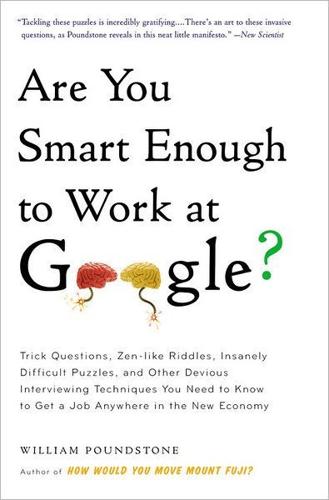
Are You Smart Enough to Work at Google?: Trick Questions, Zen-Like Riddles, Insanely Difficult Puzzles, and Other Devious Interviewing Techniques You ... Know to Get a Job Anywhere in the New Economy
by
William Poundstone
Published 4 Jan 2012
The only way to get rid of a questionable hire is to fire him. That’s a fraught process. “There’s been gradual erosion over the past 30 years of pure employment-at-will as more and more people have come under employment protection laws” explains Levenson. “It’s become more and more difficult for companies to… hire and fire. Even if 100 people are eligible to sue, only one or two might, but that’s all it takes.” Hiring today is like marriage used to be: for the duration. Despite the concern with false positives, “you can totally bomb an interview,” Carlisle insists, “and that’s not the end of your candidacy.” Google is aware that interviews are a noisy signal.
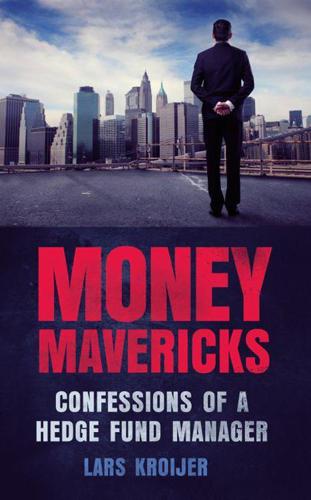
Money Mavericks: Confessions of a Hedge Fund Manager
by
Lars Kroijer
Published 26 Jul 2010
Nonetheless, to Lennart and many others with an industrial background, there was something odd about a system that allowed someone like me with no industry experience to find himself in effective control of a company like Bure that employs thousands of people with families and mortgages. And there I was, a guy in his early thirties telling experienced company management what to buy and sell, who to hire and fire, and having the power to back up those demands with action. What we wanted was simple. The company needed to reduce its overheads as much as possible. It was bloated, and future investment was unlikely as long as Bure’s shares were so cheap. The company should then look to reduce or sell its stakes to raise more cash, although with the new financing this was less urgent.
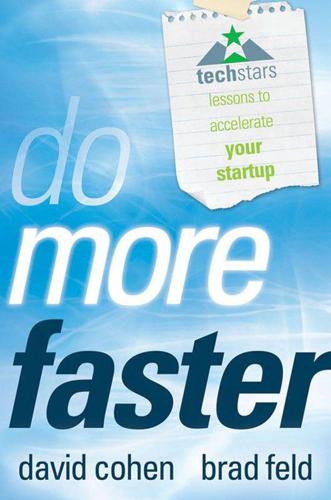
Do More Faster: TechStars Lessons to Accelerate Your Startup
by
Brad Feld
and
David Cohen
Published 18 Oct 2010
How will decisions get made? This is often tied to the number of shares, but not necessarily. You can have voting and non-voting shares. You can set up a board. You'll need to decide what kinds of decisions the board makes, and which ones it won’t. Common areas to address are decisions around capitalization, executive hiring and firing, share issuance (dilution), and acquisitions. What happens if one of us leaves the company? Although it may seem like a bad idea to be talking about this when you're starting the company—it's not. In the evolution of any startup, there will be good times and bad times and there will likely be times when one or more co-founders are simply not happy and not committed.

Just Listen: Discover the Secret to Getting Through to Absolutely Anyone
by
Mark Goulston M. D.
and
Keith Ferrazzi
Published 31 Aug 2009
The lesson is simple: Bullies come after you because they think you’re easy prey. Refuse to follow their script, and they’ll usually give up and seek an easier target. Sometimes, of course, there’s no good way to stand up to a bully. For instance, if you desperately need your current job and your boss has the power to hire and fire on a whim, your only real options may be to lay low, minimize contact with the person, and look for a less toxic work environment. Even in this case, however, you’ll be a less desirable target if you stop looking vulnerable. When a bully tries to intimidate you by verbally attacking you, do this.
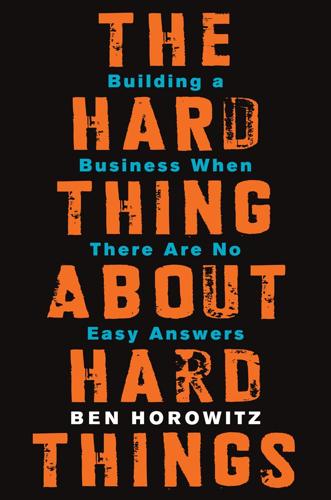
The Hard Thing About Hard Things: Building a Business When There Are No Easy Answers
by
Ben Horowitz
Published 4 Mar 2014
This section encapsulates the various parts of those lessons and provides guidance on how to get the important things right. THE MOST DIFFICULT CEO SKILL By far the most difficult skill I learned as CEO was the ability to manage my own psychology. Organizational design, process design, metrics, hiring, and firing were all relatively straightforward skills to master compared with keeping my mind in check. I thought I was tough going into it, but I wasn’t tough. I was soft. Over the years, I’ve spoken to hundreds of CEOs, all with the same experience. Nonetheless, very few people talk about it and I have never read anything on the topic.
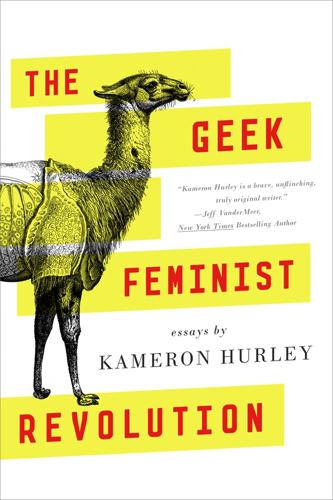
The Geek Feminist Revolution
by
Kameron Hurley
Published 1 Jan 2016
You can fight all you want for individual wins, and fight to be the “exceptional” woman, but so long as there’s institutionalized oppression, bias, and unregulated, out-of-control capitalism that treats people as disposable objects, you’re an exception, not a rule. So long as the people with the power—to hire and fire you, approve or deny your loan, or write up your speeding ticket—look at you through the lens of institutionalized racism, sexism, homophobia, or any other -ism they’ve learned from stories, videos, media, and other biased individuals, a single win means nothing. We cannot effect true change alone

For the Love of Money: A Memoir
by
Sam Polk
Published 18 Jul 2016
It was widely believed he could have cured cancer, or fixed the situation in the Middle East, if only he’d focused on it. But he didn’t—he focused on investing, and he was a legend. His job was to know everything about everything, and he did. Peter was the CEO of the firm and handled the hiring and firing. He was trim and tan, and his hair looked as if it had been clipped that morning, every day. His ties were worth more than I’d paid in monthly rent down in Charlotte. And then there was Sean. He was ten years younger than the two managing partners, and not yet a billionaire. But with his talent, intensity, and instincts, he would likely ascend to that esteemed rank.
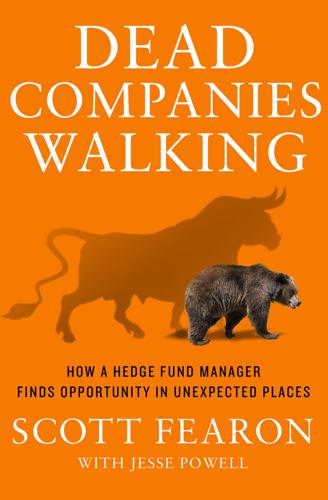
Dead Companies Walking
by
Scott Fearon
Published 10 Nov 2014
Or how I guaranteed a credit card for my first chef and wound up on the hook for $10,000 for what I later learned were hair plugs (even though, as far as I could remember, he had a healthy mane of hair!). Then there was the time another of the five different chefs I went through decided to get into a good old-fashioned fistfight with one of the five different general managers I hired and fired in the place’s three years of existence. Thankfully, the altercation took place after closing, but it didn’t do much for the staff’s already low morale or mine. Neither did the time the overnight cleaning crew set off the building’s sprinkler system. After being called by the fire department at 3 a.m., I watched the sun come up while standing in ankle-deep water in the middle of our dining room.

The Last President of Europe: Emmanuel Macron's Race to Revive France and Save the World
by
William Drozdiak
Published 27 Apr 2020
Macron was coming under rising pressure at home, even from his political allies, for investing so much time and effort in trying to convince Germany to support his European reform proposals. The grand bargain that he had pursued so assiduously since coming to power seemed to be slipping away. The handshake deal he had struck with Merkel called for France to show greater discipline over its finances, shrink its bloated public sector, and make it easier to hire and fire workers. In return, Germany would back Macron’s plans to integrate Europe with a Eurozone budget, an EU finance ministry, and more cohesive foreign and defense policies. Within his first year as president, Macron had managed to push through a series of unpopular measures that cut social benefits significantly and reined in France’s finances, yet Germany had responded by giving him next to nothing.

Start With Why: How Great Leaders Inspire Everyone to Take Action
by
Simon Sinek
Published 29 Oct 2009
The reason the change happened is simple—they suffered a split and their WHY went fuzzy. The single greatest challenge any organization will face is . . . success. When the company is small, the founder will rely on his gut to make all the major decisions. From marketing to product, from strategy to tactics, hiring and firing, the decisions the founder makes will, if he trusts his gut, feel right. But as the organization grows, as it becomes more successful, it becomes physically impossible for one person to make every major decision. Not only must others be trusted and relied upon to make big decisions, but those people will also start making hiring choices.
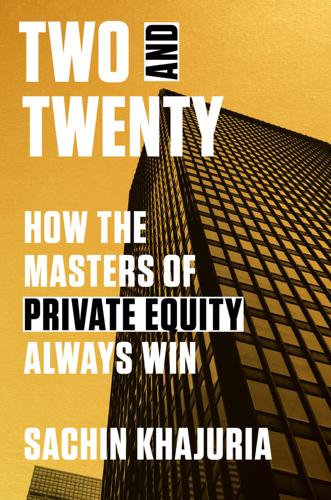
Two and Twenty: How the Masters of Private Equity Always Win
by
Sachin Khajuria
Published 13 Jun 2022
The deal team refines this lens several times during the life of an investment, primarily to sharpen the view of the outcome that can be achieved, as it digs further into the operations of the target and generates ideas for how to improve the financials. There are status updates for the investment committee or some subset thereof at least twice a year, and if the investment is challenged or is about to undergo a material event such as disposal of a business unit or the IPO of the company, or the hiring and firing of senior management, these debriefings are likely to be more frequent and conducted in greater depth. Of course, the input from colleagues will help the deal team refocus its lens on the investment and ideally lead to a better outcome for the investors and therefore for the private equity firm as well.
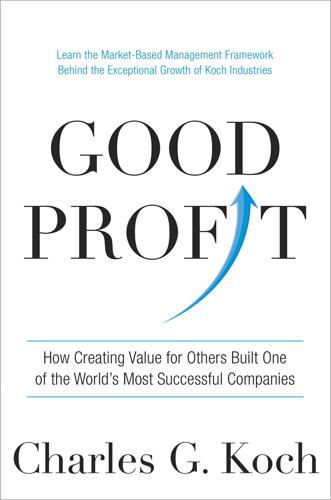
Good Profit: How Creating Value for Others Built One of the World's Most Successful Companies
by
Charles de Ganahl Koch
Published 14 Sep 2015
So I called in the leader of that group to determine how this had happened and how it could be prevented in the future. This leader contended he couldn’t have prevented it since he didn’t even know the manager in question. I asked, “If we can’t hold you accountable, who can we? You control and are responsible for who is hired and fired, and the systems and culture of your group.” Following that exchange we made clear, by cutting—or eliminating—leaders’ bonuses according to their degree of responsibility, that all of them were fully responsible for any compliance, safety, or environmental problem in their organization, and that any such event would—at the very least—result in a major reduction in their incentive compensation.
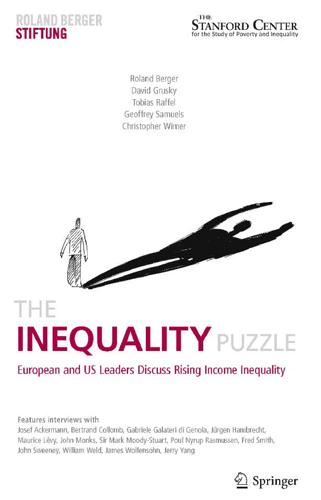
The Inequality Puzzle: European and US Leaders Discuss Rising Income Inequality
by
Roland Berger
,
David Grusky
,
Tobias Raffel
,
Geoffrey Samuels
and
Chris Wimer
Published 29 Oct 2010
(Josef Ackermann) Government controls over how businesses compensate management and employees should be limited to preventing discrimination, tax evasion, and other irregularities. Governments already participate extensively in private contracts between corporations and their employees, for example through such measures as setting minimum wages, hiring and firing regulations, and pension plan obligations. Pay scales, which closely reflect market movements, corporate strategy, and priorities, are not a market economy government’s responsibility. Another aspect of compensation, however, deserves much more attention, which is the artificial divide between senior management and the rest of the company with respect to company share ownership and long-term performance incentives.
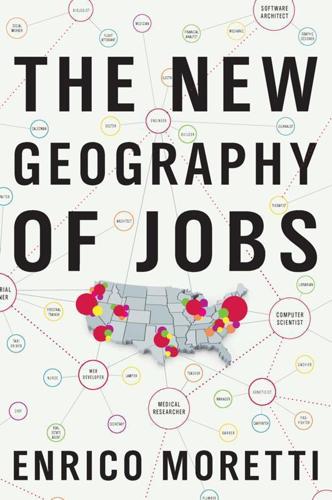
The New Geography of Jobs
by
Enrico Moretti
Published 21 May 2012
New ideas arise in mysterious and unpredictable ways from free and unstructured interactions. It would be ridiculous to schedule a phone call with a distant colleague to come up with a new idea. My guess is that most researchers share this view. After all, the reason we spend so much time in academia discussing whom to hire and fire is that our colleagues affect our own productivity. Being around smart people tends to make us smarter, more creative, and ultimately more productive. And the smarter the people, the stronger the effect. Pierre Azoulay, Joshua Graff Zivin, and Jialan Wang quantified this by focusing on what happens to medical researchers when they work with an academic superstar.

A World in Disarray: American Foreign Policy and the Crisis of the Old Order
by
Richard Haass
Published 10 Jan 2017
Dealing with this gap between political and economic realities may require a future EU that offers several levels of membership, possibly a version of what already exists in terms of an inner core of countries participating in the Eurozone. Such flexibility could prove essential if the EU is to remain intact. There is a limit to what the EU can do if it is forced to operate in a context of low economic growth. Reforms that promote growth, including increased flexibility for employers when it comes to hiring and firing workers, targeted tax and entitlement reductions, and increased infrastructure spending, are worth exploring and arguably adopting. Politics permitting, one initiative the United States could advance that would help Europe and bolster U.S.-European ties is a transatlantic trade pact. More broadly, there is a compelling case for close U.S.

What's the Matter with White People
by
Joan Walsh
Published 19 Jul 2012
Newsweek declared that on Election Day 1966 “the thousand-day reign of Lyndon I came to an end.” In New York, we watched all of those issues explode the next year in the devastating Ocean Hill/Brownsville conflict, when black parents in that poverty-stricken, heavily black Brooklyn neighborhood demanded community control over their low-achieving schools, including the right to hire and fire teachers. The Jewish-dominated United Federation of Teachers (UFT) fought them, while Lindsay backed the parents, and the battle raged under a national spotlight, through multiple teachers’ strikes, for nearly two years. The teachers believed they were fighting for old liberal values: hiring teachers by seniority and testing, not cronyism, and standing up for the free expression of ideas.
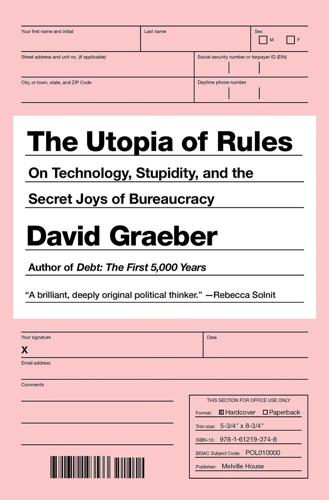
Bureaucracy
by
David Graeber
Published 3 Feb 2015
He is much more likely to tell them all to shut up and arbitrarily impose a story that allows instant judgment: i.e., “you, Joe, you wouldn’t have made a mistake like that; you, Mark, you’re the new guy, you must have screwed up—if you do it again, you’re fired.” It’s those who do not have the power to hire and fire who are left with the work of figuring out what actually did go wrong so as to make sure it doesn’t happen again. The same thing usually happens with ongoing relations: everyone knows that servants tend to know a great deal about their employers’ families, but the opposite almost never occurs.
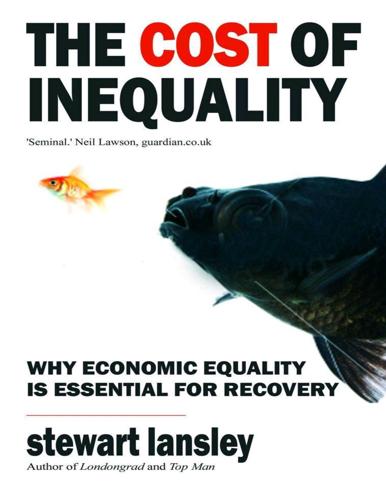
The Cost of Inequality: Why Economic Equality Is Essential for Recovery
by
Stewart Lansley
Published 19 Jan 2012
‘It was clear that the quickest way to add 5 points to your stock price was to lay off 50,000 workers.’177 There is little doubt that the sustained bull run of the 1990s—the Dow Jones index of leading American shares rose from 3000 in April 1991 to 9000 in May 1999—was in part the product of a decade of lay-offs. Under the mantra of shareholder value, labour, instead of being seen as an invaluable asset, became a mere cost of production, an essentially expendable commodity, to be hired and fired according the needs of the companies and the whims of their executives. Business had no intrinsic social dimension. The key to success lay in keeping wages low and workforces small. The weakening of the unions had paved the way for a revolution in workforce size and pay. The policy continued after the millennium and during the 2008-2009 recession.

Kill Your Friends
by
John Niven
Published 7 Feb 2008
I take a seat by the open window, the chill September breeze filling the room as Trellick strides around, simultaneously talking on his mobile, smoking a cigarette and putting on his suit. I’m wearing a suit too, by the way. I flip through Trellick’s copy of Music Week. As has been known for a couple of weeks now, Neil Ferris, recently installed as MD over at EMI, has been hiring and firing people like a madman. He’s made Tris Penna Head of A&R. Incredibly Nick Robinson, the previous Head of A&R, has not been fired. He’s been demoted. He’s going to work under Penna. I mean, where’s your fucking self-respect? Wouldn’t you just top yourself? “What’s your problem, loser?” Trellick asks, hanging up.

Losing Control: The Emerging Threats to Western Prosperity
by
Stephen D. King
Published 14 Jun 2010
A shortage of workers will push up real wages. Potential retirees may, as a result, choose to delay their retirement. Other workers may choose to work longer hours. Perhaps policymakers will deliver more flexible labour markets by encouraging more part-time work, increasing the provision of crèches and by adopting a more explicit ‘hire and fire’ mentality (the risk to a company of hiring a worker is reduced if workers can more easily be fired, thereby increasing the demand for workers and, hence, lowering the structural rate of unemployment). Workers in company pension schemes may find themselves having to take on board greater pension risk as defined-benefit pension schemes are shut down.

Twilight of the Elites: America After Meritocracy
by
Chris Hayes
Published 11 Jun 2012
To understand the steroids era, you first need to understand Marvin Miller, the man who turned the Major League Baseball Players Association into one of the country’s most effective unions. For the majority of baseball’s history, the players union was a toothless beast. Owners more or less owned players outright; they were able to trade, hire, and fire at will. There was no free agency, and though the league was quite profitable (the only legal monopoly in the country), most players merely scraped by, working odd jobs in the off-season to make ends meet. It was a classic system of exploitation, one the owners were single-mindedly committed to maintaining.

Exponential Organizations: Why New Organizations Are Ten Times Better, Faster, and Cheaper Than Yours (And What to Do About It)
by
Salim Ismail
and
Yuri van Geest
Published 17 Oct 2014
Individual “temps” are nothing new, of course, but the concept now includes groups of temporary workers. Organizations can rent staff on demand from Gigwalk and other companies when a large amount of work needs to be done quickly, relieving them of the traditional, nightmarish practice of serial hiring and firing. In this instance, there is no distinction between “rented” staff and the ExO attribute, Staff on Demand. Be it facilities, equipment, computing or people, the concept of renting rather than owning is a major factor contributing to an ExO’s agility and flexibility, and thus its success. This too can be seen as the culmination of a long-term trend.
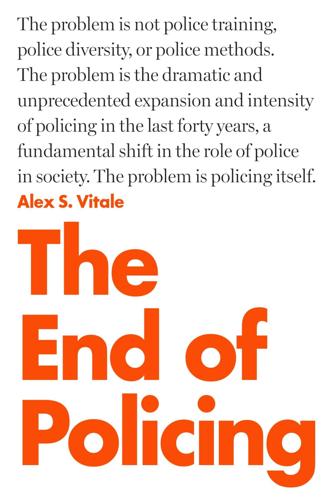
The End of Policing
by
Alex S. Vitale
Published 9 Oct 2017
By the 1930s the Pinkerton agency had over 1,300 spies embedded in various unions in an effort to disrupt their activities on behalf of employers. In most places, local police played a major role in suppressing strikes. Often this was done through a process of political corruption in which police were beholden to local elected officials who did much of the hiring and firing of police, especially at the top ranks. In many places in the nineteenth and early twentieth centuries, police were directly appointed by local politicians on the basis of political services and substantial bribes. These local officials were often beholden to large employers through bribery and political favors.
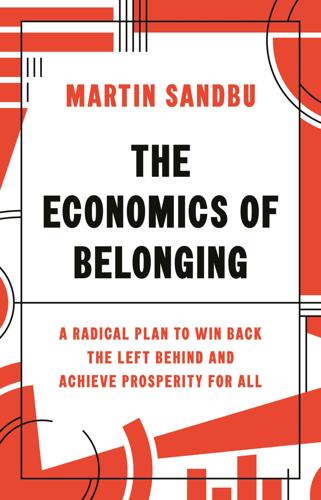
The Economics of Belonging: A Radical Plan to Win Back the Left Behind and Achieve Prosperity for All
by
Martin Sandbu
Published 15 Jun 2020
The Danish and Norwegian governments both spend more than 6 per cent of gross domestic product on education; all the others come in above 5 per cent.20 These countries have a broadly skilled population because they pay for it (Figure 6.2). The same can be said for job-to-job mobility. The Nordic economies are characterised by what Denmark calls “flexicurity”—flexible rules for hiring and firing, but with policies and institutions in place to improve the chances of getting a new job. In Sweden, for example, employers’ organisations are held responsible for worker reallocation schemes to find new jobs for workers who are let go. But above all, governments put significant resources into helping people into work.

This Chair Rocks: A Manifiesto Against Ageism
by
Ashton Applewhite
Published 10 Feb 2016
A further, marvelous paradox is that asking empowers. Sociologist Meika Loe describes this process many times over in Aging Our Way, her five-year study of how thirty of the “oldest old” (ages 85–102, in this case) meet the ever-increasing challenges of living as independently as possible. Many manage their own care, hiring and firing paid assistants as necessary, and also provide important assistance to friends and neighbors. Most spend the majority of their time alone, but also reach out to a network of friends, relatives, and assistants for help with shopping, transportation, and caring for their homes and themselves, and for company.

The Authoritarian Moment: How the Left Weaponized America's Institutions Against Dissent
by
Ben Shapiro
Published 26 Jul 2021
If you’re a leftist caterer who doesn’t want to violate his political precepts by serving a Republican dinner meeting, you’re off the hook. Perhaps that should change. This is an ugly option, particularly for those of us who still believe in core freedoms like freedom of association. I happen to believe that people should be able to hire and fire whomever they want to. But the authoritarian Left disagrees. And not only do they disagree, they’ve captured the legal system to the extent that you can only be targeted for having the wrong politics today. All of this raises a broader strategic possibility: the possibility of mutually assured destruction.
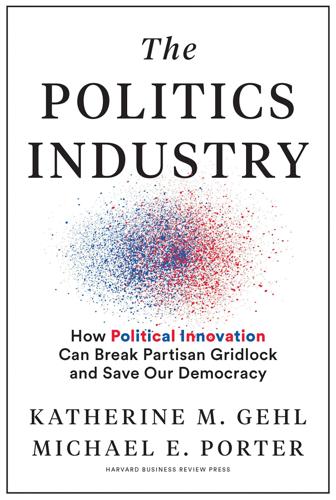
The Politics Industry: How Political Innovation Can Break Partisan Gridlock and Save Our Democracy
by
Katherine M. Gehl
and
Michael E. Porter
Published 14 Sep 2020
After the Americans defeated Great Britain, the Founders rightly feared the kind of monarchical rule they had recently rejected. But they also feared direct democracy, or a “tyranny of the majority,” where the people would directly decide policies. Their solution was to devise a system of intermediaries—of legislators and government leaders whom we hire and fire to do the work of governing. Electing our representatives may seem intuitive and obvious now, but it certainly wasn’t always the case. The list of innovative elements in our heritage goes on. The US Constitution provided the first formal blueprint for democracy. It codified a system of government that was nothing short of an outlier among nations, enshrining an elaborate structure of checks and balances that limited the power of any particular branch and prioritized the role of citizens in the revolutionary concept of self-government.

Cities: The First 6,000 Years
by
Monica L. Smith
Published 31 Mar 2019
Hiring people can be a fraught and tense process in which employees’ shortcomings may not appear until after they have signed on the dotted line, whereupon their problems become your problems, too. Sometimes people are hired onto your team without your knowledge, and you have to figure out how to integrate them. When the hiring doesn’t go well, and sometimes when it does, you might have to fire the employee, which provides another kind of stress. In between hiring and firing, there are all of the other challenges of management, from absenteeism and slacking to subterfuge and pilfering to abrupt changes of company policy, that you have to defend and implement to those working under your supervision. Yet none of these challenges are new. Compare your experiences of middle management with those of your counterpart four thousand years ago in Mesopotamia, a person named Kibri-Dagan who sent this message to the boss: My lord has sent me an order to get to Mari to appear before the junior ugbabtum-priestess.

Lab Rats: How Silicon Valley Made Work Miserable for the Rest of Us
by
Dan Lyons
Published 22 Oct 2018
In 2014, when Hoffman was touting his book The Alliance: Managing Talent in the Networked Age, he even borrowed McCord’s language when he published an article in the Harvard Business Review titled “Your Company Is Not a Family.” Like McCord, Hoffman has positioned himself as a management oracle who can teach non-techies how to mimic the success of Silicon Valley. He takes the Netflix code and pushes it further, imagining a new compact in which companies can hire and fire at will, and where there are no “careers,” only short-term gigs. Some tech start-ups use job insecurity and the fear of being fired as a management tool. In this effort they have enlisted a powerful weapon: stock options. Most workers forgo part of their salaries in order to get stock options.

The Globotics Upheaval: Globalisation, Robotics and the Future of Work
by
Richard Baldwin
Published 10 Jan 2019
While tax-and-redistribute policies undoubtedly have to be part of this package, they cannot be the only thing, or even the main thing. People’s lives are too tied up with their jobs to allow it. The challenge is ensuring labor flexibility doesn’t mean economic insecurity for workers. What is needed are policies like those in Denmark. The government allows firms to hire and fire freely but then commits to doing whatever it takes to help the displaced workers find new jobs. The good news is that once we make it past the upheaval, the world will be a much nicer place. A MORE HUMAN, MORE LOCAL FUTURE Automation and globalization displaced jobs in the nineteenth and twentieth centuries.

Brave New Work: Are You Ready to Reinvent Your Organization?
by
Aaron Dignan
Published 1 Feb 2019
HOW I GOT HERE In 2007 I was part of the founding team of a company that created digital strategies for some of the biggest brands in the world. A few years later I became the CEO. While I thought of myself as progressive, in truth I managed the company in a somewhat traditional way. I weighed in on all the hiring and firing decisions. I gave annual performance reviews and set compensation. I kept the firm’s finances and salaries under lock and key. I told people what to work on, and how to do it well. I designed the organization as I thought it should be. Now, to be fair, our culture was more permissive and flexible than most.

DIY Investor: How to Take Control of Your Investments & Plan for a Financially Secure Future
by
Andy Bell
Published 12 Sep 2013
But there are still several quality funds open to emerging market investors. Multi-manager funds If you like the idea of fund investing but do not want to have to work out which fund managers to go for, you can always choose a fund that does all of that for you. Multi-manager funds source what they believe are the very best managers in the market, hiring and firing them whenever they believe their performance merits it. But while multi-manager funds sound a great idea in theory, they introduce a whole new layer of charges into your fund management costs. You end up having to pay the multi-managers’ charges as well as the charges on the funds they select, which in turn can damage your returns.

Ten Lessons for a Post-Pandemic World
by
Fareed Zakaria
Published 5 Oct 2020
In some ways it better incentivizes the accumulation of capital than America does, with lower taxes on capital gains and inheritance (the estate tax is 15% in Denmark and zero in Sweden and Norway). Years ago, I met Poul Nyrup Rasmussen, who enacted many reforms in Denmark as the country’s prime minister in the 1990s, creating what is now called the “flexicurity” model. He emphasized that the first half of the term was key: ensuring employers had the flexibility to hire and fire workers easily, without excessive regulation or litigation, in an economy that’s open to the world and competitive—but all within a system that provides the security of a generous safety net. What distinguishes Northern European countries from the United States are their high levels of general taxation and redistribution.
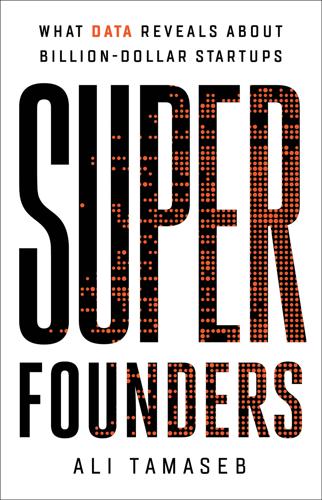
Super Founders: What Data Reveals About Billion-Dollar Startups
by
Ali Tamaseb
Published 14 Sep 2021
It simply means that the stereotypes about an “ideal” team—where one founder must be from the industry and the other co-founder must be a tech-savvy innovator—are not necessarily correct. More than domain expertise, what mattered was having work experience at all. It’s the soft skills like managing a team, hiring and firing, raising money, and working the Rolodex of connections that made a difference. Founders who had such capabilities and were able to quickly learn about a new space with a fresh, unbiased mind were able to perform better. FOUNDERS WHO BUILT A $2 BILLION CANCER COMPANY WITHOUT ANY MEDICAL BACKGROUND INTERVIEW WITH NAT TURNER OF FLATIRON HEALTH Nat Turner and Zach Weinberg didn’t have a background in oncology when they founded Flatiron Health, another company working on curing cancer.
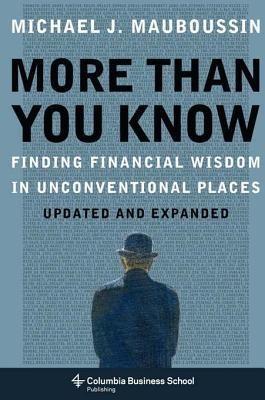
More Than You Know: Finding Financial Wisdom in Unconventional Places (Updated and Expanded)
by
Michael J. Mauboussin
Published 1 Jan 2006
But closet indexing is not ideal for shareholders. The concern about a flightier investor base is well founded. In the 1950s, the average holding period for a mutual fund was over fifteen years. By 2006 the holding period had shrunk to about four years.6 Pension fund administrators, too, are becoming more active in hiring and firing fund managers. For example, in 2001 the state of Florida sacked Alliance Capital in part because of losses in Enron and despite Alliance’s good long-term performance.7 I believe the perceived loss of predictability and control is causing many money managers chronic stress. And the predictable reaction to stress can lead to suboptimal portfolio-management decisions.
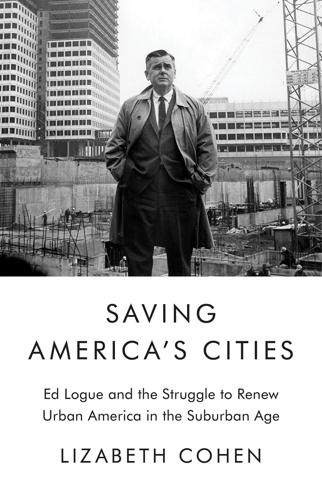
Saving America's Cities: Ed Logue and the Struggle to Renew Urban America in the Suburban Age
by
Lizabeth Cohen
Published 30 Sep 2019
Instead, the guy would come back to me complaining, ‘What the hell is this city coming to? That damned Logue just about threw me out of his office.’”56 Once qualified staff were recruited, Logue determined to keep them outside of civil service, which further aggravated local politicians. He wanted the freedom to set salaries competitive nationally, not locally, and to hire and fire at will. By origin, civil service had aimed at insulating public employees from the old patronage politics of party machines. But in most American cities by the post–World War II era, the job security offered through civil service employment had become integral to the reward structure of entrenched local politicians.57 By separating urban renewal staffing from the city’s business as usual, Logue was able to bring top talent into city employment.
…
Lewis, October 21, 1942, YULocal35, Box 1, Folder 3: “It is my belief that the labor movement in general can gain nothing by a policy of redbaiting. I don’t like Communists, but there are other ways of getting them out of their positions of power than crying ‘Bolsheviks’ to the general public.” For his efforts to expose Yale’s discriminatory quotas against blacks, Jews, Catholics, and other minorities, as well as politically motivated hiring and firing, see EJL, Series 1, Box 6, Folder 101; Logue to Margaret DeVane, April 23, 1946, EJL, Series 1, Box 3, Folder 31; also Ellen W. Schrecker, No Ivory Tower: McCarthyism and the Universities (New York: Oxford University Press, 1986), 67–68, 250–53; and Seymour quote, Crimson, June 4, 1949, 111. 26.

Cuba: An American History
by
Ada Ferrer
Published 6 Sep 2021
In 1992, the socialist constitution was revised, and three years later, the government enacted the Foreign Investment Act. Together, these changes made it easier and more appealing for foreign companies to do business in Cuba. They could own a majority of shares in their investments; they could repatriate all their profits; they received a moratorium on tax payments; they could hire and fire workers on their own, without approval from any Cuban ministry. By 1992, Cuban officials reported that thirty new joint ventures were already operational, another twenty imminently so, and another hundred then being negotiated. Many of the new joint ventures were in tourism, as foreign (mostly Spanish) companies built new hotels across the country.
…
It continues with a long list of things he could now do and ends with a line that is difficult to translate into English as beautifully as it reads in Spanish. “Tengo lo que tenía que tener.” I have what I had to have.27 The Special Period threatened to reverse, or at least undo, that promise. Overtures to foreign investors diminished government oversight of hiring and firing practices, so nothing prevented foreign hotel owners from discriminating. Because hotel and other tourist jobs were now among the most lucrative and coveted, bribes were sometimes required to get one’s foot in the door. Because Cubans with family abroad had the greatest opportunities to accumulate cash, and because those Cubans were still overwhelmingly white, Black Cubans found themselves once more at a disadvantage.
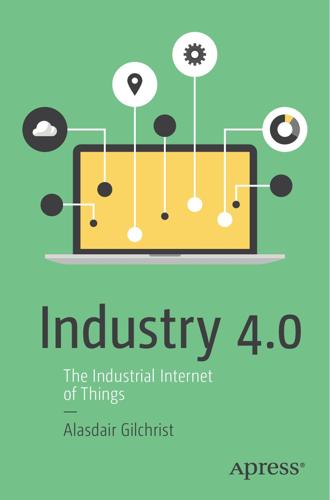
Industry 4.0: The Industrial Internet of Things
by
Alasdair Gilchrist
Published 27 Jun 2016
The other value chain component that must not be overlooked is the support function, and it comprises these reputational features: • Company infrastructure—This relates to how stable the company is and how reputable are its products, the quality of goods, and their serviceability. • Human resources—HR relates to how the company manages their workforce. Reputation is built on many factors such as how a company treats their employees. This is a major factor that should never be overlooked. For example, if the company gets a reputation for hiring and firing, the word will soon get around. • Technology development—This factor relates to the innovation and quality of the technology and engineering teams and their subsequent reputation for producing good, fit for purposeful products. • Procurement—This is the ability to source and access at reasonable costs a reliable source of raw material or component parts, and this requires good vendor reputations within the business.

Ground Control: Fear and Happiness in the Twenty First Century City
by
Anna Minton
Published 24 Jun 2009
British research also cited evidence from the US, drawing on a comparative study in California looking at gated communities and non-gated areas which found no difference in crime rates between the gated and non-gated places.30 In Dallas a police captain went further, claiming that gates actively hinder law enforcement because walls mean criminals are hidden from passers-by and police patrol cars.31 Paradoxically, Simon Ashwell feels that despite the obsession with security, fear of crime is not the main reason why his wealthy City buyers want to live behind gates, in what is in any case a very low-crime area. But he does think security is an issue, although not so much as far as crime is concerned. From what his buyers tell him, the appeal is that living behind gates promises a more abstract sense of psychological security, which contrasts favourably with an unstable work environment in the hiring-and-firing culture of the City. ‘There’s not a great fear of crime, but you do get a sense of security. You drive in and the gates shut behind you and you’re in your own little environment,’ he said, making me think of how I felt when I drove into a gated community for the first time and heard the gates click satisfyingly shut behind me.

The Manager’s Path
by
Camille Fournier
Published 7 Mar 2017
We become better leaders by pushing ourselves and our management teams to really get to the bottom of organizational issues, searching for why so that we can more quickly resolve such issues in the future. Without the drive to understand why, we rely on charm and luck to see us through our management careers and to make our hiring and firing decisions. As a result, we have a huge blindspot when it comes to truly learning from our mistakes. MANAGING MANAGERS | 149 Setting Expectations and Delivering on Schedule One of the most frustrating questions that engineering managers get asked regularly is why something is taking so long.
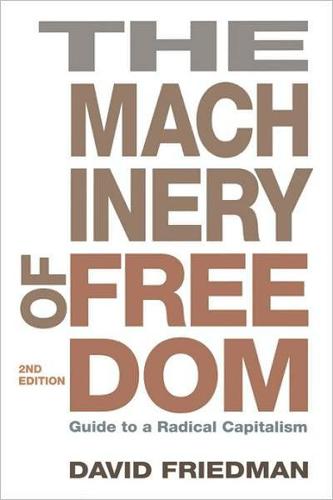
Machinery of Freedom: A Guide to Radical Capitalism
by
David Friedman
Published 2 Jan 1978
The essential characteristic of this scheme is that, like any market system, it produces what the consumer wants. To the extent that the students, even with the assistance of professional counselors and written evaluations of courses, are less competent to judge what they are getting than are the people who now hire and fire teachers, that may be a disadvantage. But it does guarantee that it is the students' interest, not the interest of the university as judged by the university, that determines what teachers are employed. Under the sort of market system I have described, a majority of students, even a large majority, can have only a positive, not a negative, effect on what is taught.

The Precariat: The New Dangerous Class
by
Guy Standing
Published 27 Feb 2011
For our purposes, the precariat consists of people who lack the seven forms of labour-related security, summarised in the Box, that social democrats, labour Forms of labour security under industrial citizenship Labour market security – Adequate income-earning opportunities; at the macro-level, this is epitomised by a government commitment to ‘full employment’. Employment security – Protection against arbitrary dismissal, regulations on hiring and firing, imposition of costs on employers for failing to adhere to rules and so on. Job security – Ability and opportunity to retain a niche in employment, plus barriers to skill dilution, and opportunities for ‘upward’ mobility in terms of status and income. Work security – Protection against accidents and illness at work, through, for example, safety and health regulations, limits on working time, unsociable hours, night work for women, as well as compensation for mishaps.

Here Comes Everybody: The Power of Organizing Without Organizations
by
Clay Shirky
Published 28 Feb 2008
Now imagine you and those five friends go off and form a company, and then return to that bank saying, “We’ve incorporated. Please give us a bank account.” The bank would say, “Sign here.” An incorporated group can do a number of things an unincorporated group can’t, like drafting contracts and bylaws that have legal standing, raising and spending money, hiring and firing employees, and so on. These things are possible in part because incorporation creates both social density and continuity. The act of incorporation, literally “embodiment,” is the way the government recognizes the work of groups, analogous to copyright being the way it recognizes creators. So why don’t more groups using social media for long-term goals incorporate?
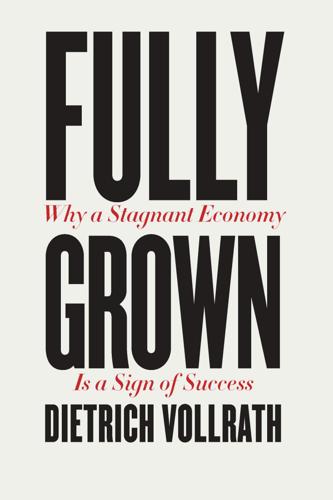
Fully Grown: Why a Stagnant Economy Is a Sign of Success
by
Dietrich Vollrath
Published 6 Jan 2020
I’ll review the evidence that economic profits—the extra income that is earned from selling goods and services over and above the cost of producing them—have risen steadily since at least the early 1990s. Those economic profits are the outward sign of increased market power. It’s possible that market power could explain the slowdown in turnover. With market power, firms react less to shocks that occur to the costs of, or the demand for, their products. They won’t hire and fire workers, or shutter and open new locations, as quickly as firms in more competitive markets. And there is some evidence to back this up. But that isn’t the whole story with market power. Some of the rise in market power comes from a shift in our spending away from firms and industries with little market power, and toward firms and industries with a lot of market power.

Alpha Girls: The Women Upstarts Who Took on Silicon Valley's Male Culture and Made the Deals of a Lifetime
by
Julian Guthrie
Published 15 Nov 2019
He’d had a similar come-to-Jesus talk with Benchmark VC Bob Kagle, who told him, “The people who are saying that this is just a blip are wrong. This is not a blip. This is a permanent shift. Just assume you can never raise more money.” Theresia and Rosenzweig strategized over how to keep PeopleSupport alive. It helped that she was a board observer, not a board member. A board member had the authority to hire and fire, while a board observer was more ally than boss. In Theresia’s experience, entrepreneurs were often more candid with board observers. Fortuitously, in the weeks before the downturn began, Theresia and Rosenzweig had been working on securing a new round of funding with Paul Madera, of the late-stage VC firm Meritech.
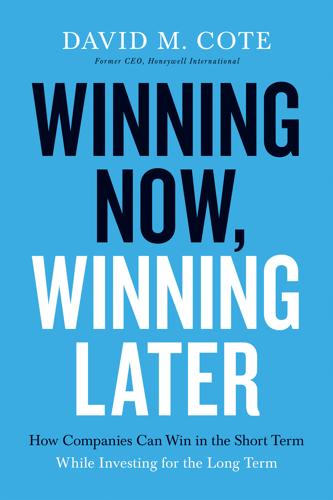
Winning Now, Winning Later
by
David M. Cote
Published 17 Apr 2020
HR IS TOO IMPORTANT TO BE LEFT TO HR PEOPLE If you haven’t thought much about leadership quality, you should—whether you lead a team of ten or an organization of one hundred thousand. In larger organizations, you might be tempted to nod your head at the tactics described in this chapter and then task HR with executing on them. That would be a huge mistake. As the decision-maker in your organization, you must become intimately engaged with leadership development, hiring, and firing. I’ve mentioned that my global HR leader and I personally interviewed final candidates for our two hundred senior-most leadership positions. But that was only the beginning. I personally reviewed the compensation plans for our top six hundred leaders to confirm that it was fair and that it corresponded with what we had heard during our annual, cross-functional MRR review, which I also led.

No Such Thing as a Free Gift: The Gates Foundation and the Price of Philanthropy
by
Linsey McGoey
Published 14 Apr 2015
The system bears a strong resemblance to the Gates Foundation’s Thomas Kane’s suggestion for teachers: any teachers ranking in the bottom quarter of a pre-established cohort after their first two years teaching should be let go. Most teachers, parents, and policy-makers agree that teacher performance needs to be monitored, with persistently poor performers subject to penalty or dismissal. But are policies grounded in Microsoft-style hiring and firing practices – practices widely denigrated by many CEOs outside Microsoft – the best model for school districts to emulate? Barkan has described the proactive steps that school districts in Toledo (since 1981), Cincinnati (since 1985), and Montgomery County (since 2001) – to name just a few districts – have taken towards identifying teacher effectiveness.

Please Don't Sit on My Bed in Your Outside Clothes: Essays
by
Phoebe Robinson
Published 14 Oct 2021
And as I was jumping between reading book proposals, writing my own book, and developing and pitching TV shows while Hollywood slowly started to return to form, as well as leading team meetings and checking in on how my employees were doing mentally in the wake of quarantining indefinitely and the mental anguish that summer 2020 brought, it dawned on me: I’m a boss. I mean, yes, I knew I was the one in charge, who did the hiring and firing and set the tone for the company, blah, blah, blah. But all the nuances as well as the micro and macro facets of what being a boss entails: being a leader, having to manage people and their expectations, observing dynamics between coworkers, being an example of how to execute conflict resolution, understanding that weekly, I would be making hundreds of decisions regarding the big and little things, maintaining my own mental health, etc., and everything else in between?

What Algorithms Want: Imagination in the Age of Computing
by
Ed Finn
Published 10 Mar 2017
The computational turn means that many algorithms now reconstruct and efface legal, ethical, and perceived reality according to mathematical rules and implicit assumptions that are shielded from public view. As legal ethicist Frank Pasquale writes about algorithms for evaluating job candidates: Automated systems claim to rate all individuals the same way, thus averting discrimination. They may ensure some bosses no longer base hiring and firing decisions on hunches, impressions, or prejudices. But software engineers construct the datasets mined by scoring systems; they define the parameters of data-mining analyses; they create the clusters, links, and decision trees applied; they generate the predictive models applied. Human biases and values are embedded into each and every step of development.

The Weightless World: Strategies for Managing the Digital Economy
by
Diane Coyle
Published 29 Oct 1998
He writes: ‘The destruction of good jobs by American corporations is just not an important part of what is happening to the American worker ... The people who are doing really badly are those who do not have good jobs and never did’.4 Creative destruction? Turning to fact rather than anecdote, large-scale hiring and firing is simply what happens in Western capitalism (at least outside Japan, although increasingly there too). But we are clearly a lot more worried about it now. One detailed study of job turnover patterns in American manufacturing5 finds that recessions are marked by a sharp increase in average job destruction rates and little change in job creation rates, meaning that job turnover rises during recessions too.

Duped: Double Lives, False Identities, and the Con Man I Almost Married
by
Abby Ellin
Published 15 Jan 2019
Ronald Kessler, “Spies, Lies, Averted Eyes,” New York Times, March 8, 1994, https://www.nytimes.com/1994/03/08/opinion/spies-lies-averted-eyes”.html. 39. Sean Robinson, “What Made Ridgway Kill Still a Riddle,” News Tribune, November 9, 2003, http://archive.is/FWnyS. 40. “Polygraphs in the Workplace: The Use of ‘Lie Detectors’ in Hiring and Firing,” Hearings Before the Subcommittee on Employment Opportunities of the Committee on Education and Labor, House of Representatives, 99th Cong., 1st sess., on H.R. 1524 [and] H.R. 1924, July 30 and September 18, 1985, https://babel.hathitrust.org/cgi/pt?id=pst.000019083421, 279. 41. There is video footage of all of this on Polygraph.com. 42.

Late Bloomers: The Power of Patience in a World Obsessed With Early Achievement
by
Rich Karlgaard
Published 15 Apr 2019
Lincoln Riley became head football coach of the Oklahoma Sooners—a perennial top-twenty team—at thirty-three, with an annual paycheck of $3.1 million. And at thirty, Sean McVay of the Los Angeles Rams became the youngest head coach in modern NFL history. What about general managers, those cigar-chomping, backroom dealmakers who control rosters and hire (and fire) coaches? As I write, no fewer than ten Major League Baseball general managers are under forty, with David Stearns, of the Milwaukee Brewers, the youngest at thirty-one. Stearns is downright old, though, compared to twenty-six-year-old John Chayka, the general manager of the National Hockey League’s Phoenix Coyotes.

Hiding in Plain Sight: The Invention of Donald Trump and the Erosion of America
by
Sarah Kendzior
Published 6 Apr 2020
The Trump administration is, in fact, very competent in achieving its main goal: stripping America down for parts and selling those parts to the highest bidders. That is not kakistocracy but kleptocracy, with elements of burgeoning authoritarianism. Like most kleptocracies, the Trump administration has carried out an enormous number of hirings and firings. Kleptocracies like to move players around to create the illusion of debate and dissent. Changes in personnel give the impression that power is distributed equitably rather than consolidated around a dictator, while also distracting the press from the regime’s more substantive flaws. As during his reality television days, Trump shakes up the status of players, and positions are cast more than filled.

Power, for All: How It Really Works and Why It's Everyone's Business
by
Julie Battilana
and
Tiziana Casciaro
Published 30 Aug 2021
Hierarchical positions seem, at first, like a useful proxy for power; and organization charts are indeed a good first step in identifying powerful individuals. In the military, orders flow down the chain of command. In politics, only presidents and prime ministers can issue executive orders. In business, managers can hire and fire subordinates. In these examples, title describes a person’s authority, that is, their formal right to give orders and commands, and to make decisions. Plenty of evidence exists, however, that authority does not always equal power. In a study we conducted in the United Kingdom’s National Health Service, we saw how misleading it can be to rely solely on formal rank as a source of power.

The Chip: How Two Americans Invented the Microchip and Launched a Revolution
by
T. R. Reid
Published 18 Dec 2007
Noyce, Moore, and their colleagues knew more about the semiconductor industry, both the technical and the marketing side, than any of the Fairchild directors, but they were constantly forced to follow corporate decrees that seemed downright foolish. During 1967, moreover, the parent company went through a period of turmoil that saw two CEOs hired and fired within six months. To the “Fairchildren” out in California, it seemed obvious that the right man to lead the corporation was their own leader, Bob Noyce. But when this suggestion was passed to the corporate board, the directors could not bring themselves to entrust their established and traditional corporation to a California cowboy.

Iron Curtain: The Crushing of Eastern Europe, 1945-1956
by
Anne Applebaum
Published 30 Oct 2012
Among them was Gyula Schöpflin, a communist party member since the 1930s, who became the first program director. In his memoirs—he defected from Hungary in 1949—Schöpflin remembered that although Hungary was still in theory a multiparty democracy in 1945, Ortutay’s personnel decisions were already influenced by his secret communist party membership: “The hiring and firing of people had an entirely political character.” Ortutay also set political guidelines for programming: “Avoid anything that could disturb the harmony and agreement between the great powers; beware of party politics; publicize, promote anti-Fascist international politics; promote the program of the democratic government, reconstruction, land reform; always emphasize the Hungarian and international progressive traditions …” Schöpflin himself visited the Hungarian party headquarters “at least once a week,” asking for “guidelines, detailed party lines” for his broadcasts.
…
As John Connelly points out in his definitive study of High Stalinist Eastern European universities, the culture of Polish academic life was also different. Many academics who survived had worked in the “flying universities” during the war, teaching students in secret, and the habits of patriotism were strong. It was quite common for academic administrators to pay lip service to the regime, but to teach, lecture, hire, and fire without any regard to politics. Even in the late 1940s and early 1950s, older professors habitually protected younger students and colleagues from police investigation.31 Ties of family, loyalty, and academic influence often proved stronger, at least behind the scenes, than fear of the party or the secret police.

Pump Six and Other Stories
by
Paolo Bacigalupi
Published 15 Sep 2010
I wouldn't have minded throwing Suze to the trogs, though. She was about as dumb as one. Christ, I was surrounded by dummies. I needed a new job. Someplace that attracted better talent than sewage work did. I wondered how serious Suze had been about trying to fire me. If there really was something in the manuals that we'd all missed about hiring and firing. And then I wondered how serious I was about quitting. I sure hated Suze. But how did you get a better job when you hadn't finished high school, let alone college? I stopped short. Sudden enlightenment: College. Columbia. They could help. They'd have some sharpie who could understand all the PressureDyne information.

Top Secret America: The Rise of the New American Security State
by
Dana Priest
and
William M. Arkin
Published 5 Sep 2011
Still, the week before Christmas 2004, Bush signed into law the most sweeping changes in the intelligence world since the National Security Act of 1947. The law was so obviously problematic that the president of Texas A&M University, Robert Gates, turned down the position of director, in part because the job description didn’t even include the power to hire and fire. Ambassador John D. Negroponte, a respected diplomat but not an expert in the more contentious field of intelligence, was the backup choice. Even before Negroponte reported for work, turf battles began. The Defense Department shifted billions of dollars out of one budget (the national intelligence budget) and into another (the military intelligence program) so that the Office of the Director of National Intelligence would have only advisory status, according to two senior officials who watched the process.
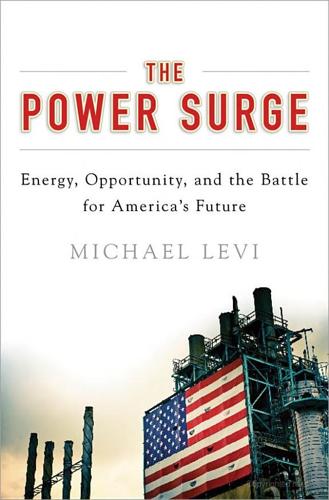
The Power Surge: Energy, Opportunity, and the Battle for America's Future
by
Michael Levi
Published 28 Apr 2013
It’s plausible that many of the people newly employed in the oil sector would otherwise have been unemployed. But a healthier economy doesn’t work that way. Jobs gained from strength in one sector are usually offset by jobs lost in others.44 Economists have long agreed that the unemployment rate is determined by more fundamental factors such as how easy it is to hire and fire people, how well the education system works, and whether workers can easily move to jobs in new places. Booming oil production won’t change any of that. It can, however, make Americans richer. Think about a barrel of oil as if it’s a hundred dollars that’s buried deep underground. Now imagine you suddenly discover a massive deposit of a billion barrels that can be dug up at a cost of sixty dollars each.
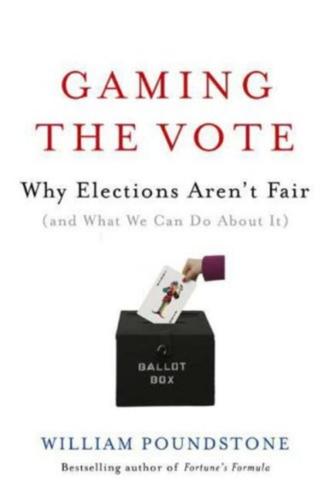
Gaming the Vote: Why Elections Aren't Fair (And What We Can Do About It)
by
William Poundstone
Published 5 Feb 2008
"'We can't afford to alienate white voters,' I was told by many in my party and my campaign; whites might be put off if we 'whine' about racism." One difference between the Bush and Dukakis campaigns was the tenure of their consultants. Atwater and Ailes remained firmly in charge of Bush's campaign. Dukakis hired and fired a whole stable of consultants. In fact, he hired Estrich twice and fired her once. (He hired her the second time after deciding he couldn't fire his campaign's highestranking woman.) The number of people giving Dukakis advice kept increasing. Dukakis called Mario Cuomo, a mentor, to ask him what to do about Atwater's attacks.
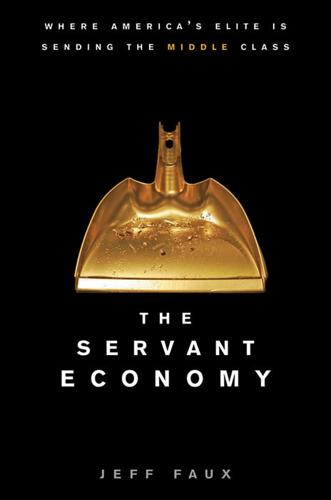
Servant Economy: Where America's Elite Is Sending the Middle Class
by
Jeff Faux
Published 16 May 2012
The notion that low-income parents who are struggling to survive economically have the time and capacity to adequately oversee the complicated task of educating children and managing a school was itself problematic. Predictably, it has been largely abandoned in favor of turning the schools over to “professional” school managers, some of whom are sponsored by foundation-supported nonprofits and some by private for-profit corporations. Not only can the managers of charter schools hire and fire teachers as they see fit, they can rent, buy, and sell buildings; lease contracts for management consulting, accounting and legal services, food concessions, and transportation; and pay their managers far more than public school principals are paid. Moreover, they can do it all with public money.
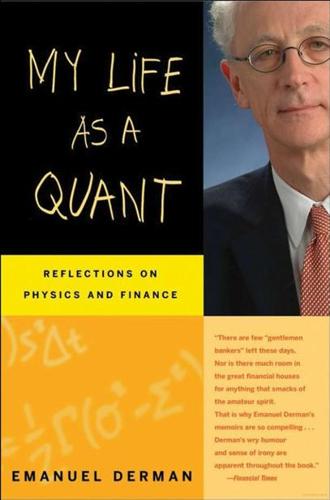
My Life as a Quant: Reflections on Physics and Finance
by
Emanuel Derman
Published 1 Jan 2004
Ten years later during the dot-com boom of 2000, when casual clothing ruled, free snacks made a temporary come back and every day each floor received Snapples, bottled water, and very fancy, presliced, Harry-and-David-style fruit. This, too, disappeared when the technology IPO market collapsed.You could see Will Street's behavior-its manic depressive, feast-or-famine style of hiring and firing, expanding and contracting, large raises followed by large cuts-all mirrored in the waxing and waning of the food supply. My boss was Dexter Earle, a partner at Goldman and a salesperson. This was the time in my life when I began quite unselfconsciously to refer to the person I worked for as "my boss" My wife didn't like to hear me use the phrase; she was still in academic life and thought it a dysphemism, but I had learned over the years to regard it as merely realistic.

The Education of Millionaires: It's Not What You Think and It's Not Too Late
by
Michael Ellsberg
Published 15 Jan 2011
They don’t shield themselves from responsibility; they take responsibility for seeking out roles of greater responsibility. Brian kept making mistakes in his business and learning from them, kept growing as a businessperson and a leader, growing step-by-step. “I was dealing with the responsibility of having a business to run and customers to serve. I was learning how to hire and fire people when I made mistakes and brought the wrong people on board. I was learning the logistics of managing a business, of making phone calls, doing jobs, and learning about customer service. I was learning how to market the business and take responsibility for my own actions, saying, ‘Okay, I’ve got a business to grow here and there are no phone calls coming in.
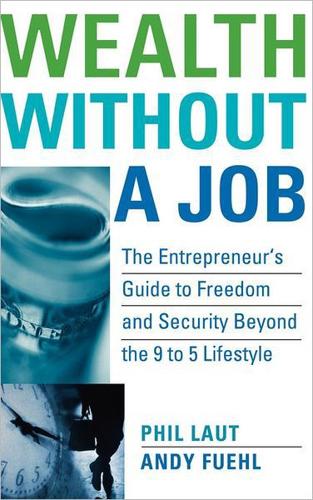
Wealth Without a Job: The Entrepreneur's Guide to Freedom and Security Beyond the 9 to 5 Lifestyle
by
Phil Laut
and
Andy Fuehl
Published 12 Sep 2004
These are both examples of misperceptions of risk. Owning your own business transforms you into a capitalist. If you have always had a job in the past, then your participation in the capitalist system has been as a provider of labor. As a business owner, you negotiate for yourself on a frequent basis; you decide which people to hire and fire; and you invest your capital, your time, and your energy. Most important, you must sell to your customers the products and services you provide. In today’s world of downsizing, temporary jobs, and part-time employment, even people who stay in the job market are pretty close to entrepreneurship anyway.
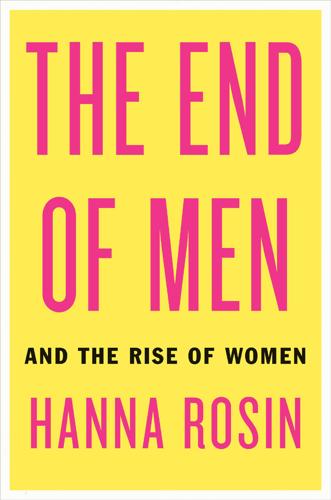
The End of Men: And the Rise of Women
by
Hanna Rosin
Published 31 Aug 2012
During the intervening years, the real-life Lucys and Rickys sat down at the American kitchen table and Lucy laid down the new rules. At this point Lucy was working, perhaps as a headhunter or a publicist or a Hollywood agent. Ricky meanwhile was still nurturing his “creative pursuits.” Lucy was bringing home at least as much money as Ricky, and some years more. Lucy was a woman reborn, hiring and firing, getting promotions, then coming home to put little Ricky to bed. Big Ricky was helping out, too, picking up from day care every once in a while or making a playground run on a Saturday morning so Lucy could go to a spin class. And by now he’d learned to roast a chicken. Wasn’t that something?
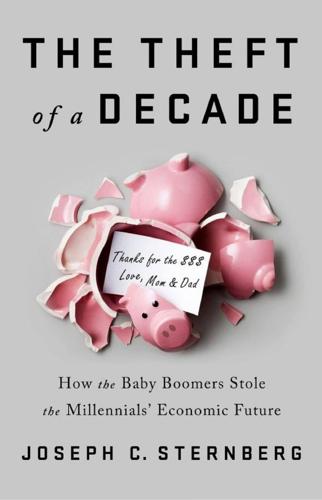
The Theft of a Decade: How the Baby Boomers Stole the Millennials' Economic Future
by
Joseph C. Sternberg
Published 13 May 2019
Some of this was enforced by law—especially Japanese laws making it harder than in many other developed countries to fire workers, and courts that are especially likely to force companies to rehire workers deemed to have been unfairly dismissed. But a lot of it was cultural. Workers and companies alike faced significant social stigma for breaking the deal. The economic crisis of the early 1990s changed things. Companies realized they could no longer afford not to have the flexibility their foreign competitors did—to hire and fire as needed to reconfigure the business in light of changing market conditions. And the government realized it needed to loosen the laws that had helped to cement the old lifetime employment system. So Tokyo created new types of employment, making is possible for more employers in more industries to hire nonregular workers.
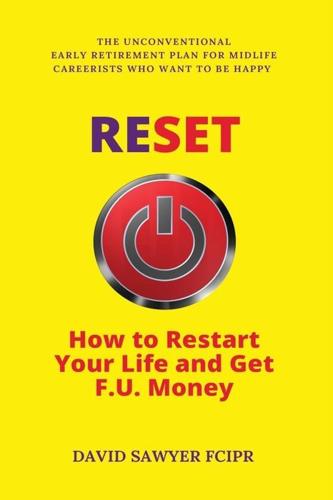
Reset: How to Restart Your Life and Get F.U. Money: The Unconventional Early Retirement Plan for Midlife Careerists Who Want to Be Happy
by
David Sawyer
Published 17 Aug 2018
However, for the midlife careerist, who’s already busy, such innovation is seen more as a threat than an exciting opportunity: the last thing they have time to do is “get with the digital programme”. Whether you’re a lawyer, accountant, PR, chief executive, engineer or scientist, the fundamentals of your job haven’t changed. You still have to hire and fire people, motivate your staff, hit targets, be good at maths, be able to state your case, be able to lead. But digital has given those who have grasped them, opportunities to do many tasks quicker and better. Yet it’s in the field of personal reputation and profile that digital change has had most impact.
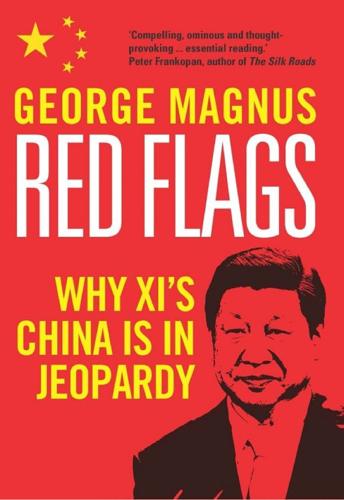
Red Flags: Why Xi's China Is in Jeopardy
by
George Magnus
Published 10 Sep 2018
State enterprises learned to operate a ‘dual-track’ system under which they had price and production obligations under the planning system, but also an opportunity to learn about market operations, and sell surplus production at a price above that decreed by the state. Surplus production transactions became a steadily more important part of their operations, subject to contracts set by China’s state planners. Entry barriers were lowered, allowing greater competition, and managers were given more leeway to hire and fire middle-level staff, pay bonuses and establish direct links with suppliers. New ownership The first change of ownership of a state-owned enterprise (SOE) occurred in 1986, when three individuals put up 34,000 yuan as collateral to lease the Wuhan Motor Engine factory. In the same year, three Guangzhou-based SOEs introduced private shareholding by allowing employees to purchase 30 per cent of their companies’ shares.
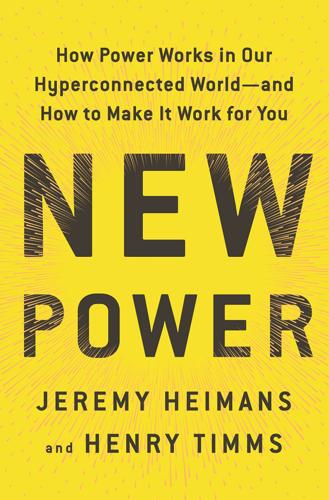
New Power: How Power Works in Our Hyperconnected World--And How to Make It Work for You
by
Jeremy Heimans
and
Henry Timms
Published 2 Apr 2018
It is part of building a culture that feeds individual agency, and builds collective bonds among the nurses. This culture continues in their daily operation. Like start-up founders, the nurses on Madelon’s team find themselves doing a bit of everything, juggling nursing, making care plans, managing the office, hiring and firing, budgeting and connecting with the local doctors and hospitals: “Sometimes you find out about new talents of your colleagues or about yourself. Someone might say, ‘Oh, no, I don’t want to do the planning. I’m no good at it.’ We’ll say, ‘Just try it,’ and then maybe she’ll find out that she really likes it and she’s really good at it.”

Ghost Work: How to Stop Silicon Valley From Building a New Global Underclass
by
Mary L. Gray
and
Siddharth Suri
Published 6 May 2019
By doing so, they shed the obligations, costs, and worker safety nets that accompany traditional employment classifications. Nation-states like India sweetened the deal for conglomerates with state-funded expansion of global satellite systems and tax-free IT industrial parks. These new links in the global supply chain hired and fired locals at will to process everything from airline schedules and insurance audits to full-time employees’ paychecks. India’s economic liberalization, in 1991, included the development of the Software Technology Parks of India (STPI) in every major city in the country.38 Finance minister Manmohan Singh, a Cambridge- and Oxford-trained economist who would later be prime minister, argued that India’s socialist economy, long propped up by its trading partner the Soviet Union, would need to liberalize and to deregulate its markets to survive the fall of the Iron Curtain.
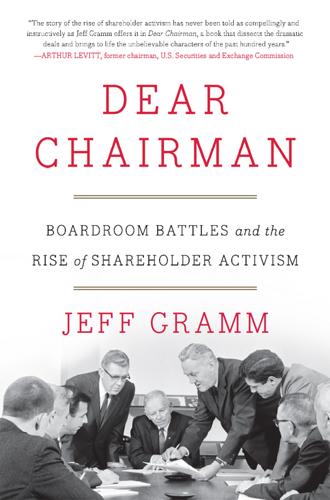
Dear Chairman: Boardroom Battles and the Rise of Shareholder Activism
by
Jeff Gramm
Published 23 Feb 2016
By studying shareholder activism through history, we’ll see the tremendous influence investors now have over public companies, and what issues this raises for the future. We’ll also learn about how boards of directors work, what drives management teams to perform, and why corporate oversight can be so terrible. More than anyone cares to think about, today’s corporatized world leaves a lot of responsibility with our business leaders, and the shareholders who hire and fire them. The limited liability corporation transformed the world over the past few centuries. What things will look like in the future will depend on how we manage our large institutions. As Ross Perot said in a speech to his fellow directors at General Motors, “Corporate America has a peculiar process that we must recognize.

Higher: A Historic Race to the Sky and the Making of a City
by
Neal Bascomb
Published 2 Jan 2003
Chrysler scoffed off the suggestion, but after stepping away from the scene with a colleague, he remarked, “Actually, I had two.” Over the past month Chrysler had wavered on whether to use the plans as Van Alen had drawn them. As the meeting continued, Chrysler must have sensed in Van Alen the kindred spirit of a maverick. Obviously he knew his craft and liked to push the envelope. Chrysler had hired and fired legions of people, many times on projects that cost millions and whose success depended on such decisions. Once asked how he picked his people, he responded, “I don’t know. You just do it.” In that way, Chrysler decided Van Alen was the architect for him. Yet although he hired Van Alen, Chrysler didn’t intend to use the skyscraper designs presented to him.
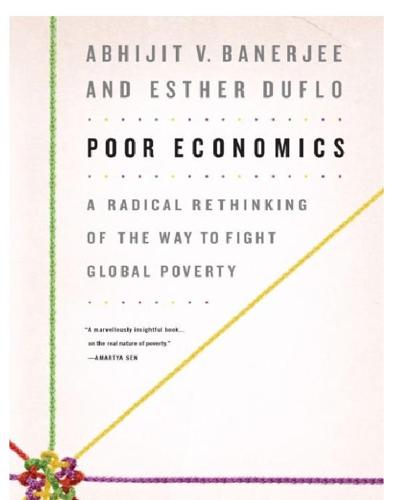
Poor Economics: A Radical Rethinking of the Way to Fight Global Poverty
by
Abhijit Banerjee
and
Esther Duflo
Published 25 Apr 2011
The beneficiaries are directly hurt by bad services, and they should therefore care the most; moreover, they have better information, both on what they want and on what is happening on the ground. Giving them the power to control the service providers (teachers, doctors, engineers)—either the ability to hire and fire them or, at least, the power to complain about them—ensures that those who have the right incentives and the right information are the ones making the decisions. “If the stakes are high enough,” the World Bank wrote in its 2004 World Development Report, devoted to the delivery of social services, “communities tackle the problem.”26 Moreover, the very act of working together on a collective project may help communities rebuild their social ties after a major civil conflict.

Halting State
by
Charles Stross
Published 9 Jul 2011
The spooks in Guoanbu probably are professional, they wouldn’t mess with the European SCADA infrastructure short of an outright shooting war…but are they likely to realize that they’ve almost certainly been pwn3d by their own pet griefer clan, and all their electronic armoured divisions are in the hands of a dozen Asperger’s cases with attention-deficit disorder and a quantum magic wand? It’s not a risk you can take. And it’s not a risk you can explain to Barry Michaels, because you know his type, and after seventy years of data processing, they still think that coders can be hired and fired; that the engineers who ripped out the muscles and nerves of the modern world and replaced it with something entirely alien under the skin are still little artisans who will put their tools down and go home if you tell them to leave the job half-done. You’re half-worried that Elaine will make a big deal of it, but instead she nods quickly, walks up behind your chair, and pecks you on top of the head.
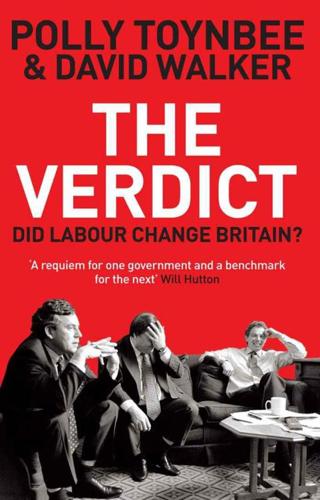
The Verdict: Did Labour Change Britain?
by
Polly Toynbee
and
David Walker
Published 6 Oct 2011
During the Labour years Boston income per head had risen, as everywhere else, but still remained £90 less per week (gross weekly earnings) than the UK average. High employment rates did not produce higher income. Because employment law was flexible – a coy way of saying in the UK it was easier to hire and fire staff – French, German, Spanish and other job-seekers came and often stayed. Brits of course also worked in Paris, Madrid and Frankfurt am Main but on the Paseo del Prado your waiter was not going to be a UK migrant. British plumbers did not fix the blocked drains of Wroclaw. The UK was far from unique; mass migration affected the Netherlands and Sweden and 13 per cent of Germany’s population was foreign-born.
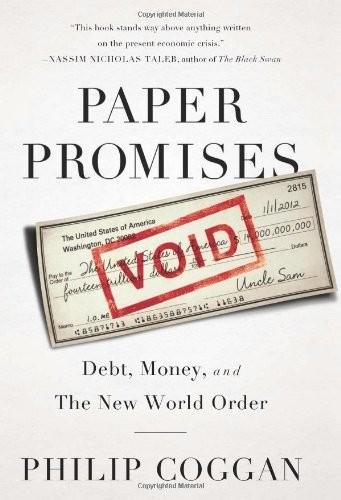
Paper Promises
by
Philip Coggan
Published 1 Dec 2011
‘Inflation is always and everywhere a monetary phenomenon,’ he said.1 Just as the New World discoveries of silver had pushed up prices in the sixteenth century, the printing of paper money did so in the twentieth. Fiscal policy would have no effect on unemployment, according to the monetarists. The answer, instead, was to improve the workings of the economy by making it easier for employers to hire and fire labour. These so-called ‘supply side’ reforms would improve productivity. By the early 1980s, with Margaret Thatcher in power in Britain and Ronald Reagan in America, Friedman’s influence was at its peak. The government role in the economy was to control inflation and to ensure the rule of law and property rights.

How the Post Office Created America: A History
by
Winifred Gallagher
Published 7 Jan 2016
The act ended this long, tarnished tradition by downgrading the department to an agency and removing the postmaster general from the cabinet. The USPS would be run by a board of governors, nominated by the president and confirmed by the Senate (later, with the Senate’s advice and consent), which would appoint a qualified professional to serve as postmaster general and chief executive. Instead of including a legion of appointees hired and fired on the basis of partisan loyalty, the huge workforce would consist of civil service employees selected and retained on the basis of their merit. The spoils system was already on the wane, but few politicians could relish eliminating it altogether when their own party occupied the White House.
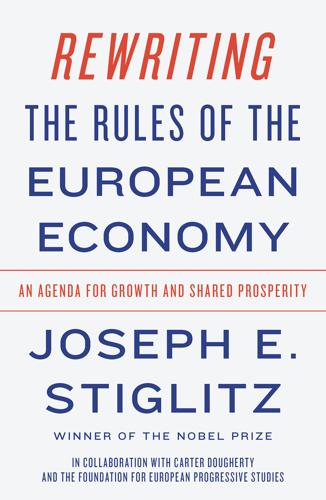
Rewriting the Rules of the European Economy: An Agenda for Growth and Shared Prosperity
by
Joseph E. Stiglitz
Published 28 Jan 2020
Box 9.2: Employment Security: The Danish Model Nordic countries have performed much better in ensuring employment security. The Danish model, for example, has traditionally consisted of four major components: ■ Macroeconomic policies that ensure full employment ■ Flexicurity: The combination of flexibility for companies to hire and fire with income security for workers through robust systems of social protection*** ■ Collective bargaining processes that ensure extensive worker protection while taking into account changing production and market conditions for companies††† ■ Employment subsidies and active labor market programs that help workers in transition and promote full employment A European Unemployment Compensation Program Europe today does not have an EU-level unemployment scheme, but there are strong arguments for creating the program.
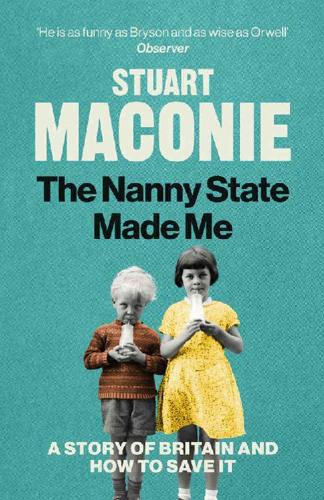
The Nanny State Made Me: A Story of Britain and How to Save It
by
Stuart Maconie
Published 5 Mar 2020
survey grading customer satisfaction for the UK’s top 100 companies found that Npower, BT, EDF Energy, British Gas and E.ON (each one a provider of essential utilities which were publicly owned before Margaret Thatcher’s ‘reforms’) all appear in the Top Ten Worst Companies according to the British people. The capitalist myth of the swashbuckling, risk-taking, dynamic and virile entrepreneur – hiring and firing, living on his wits as an alphamale king of the boardroom jungle – is just that; a myth. These are supposedly virile alpha males very much reliant on the Viagra of the nanny state via grants, subsidy and bailouts. For the most part, outsourcing has been a calamitous, universal failure. It has damaged our social services, eaten into taxpayers’ money, made life generally harder for most of us.
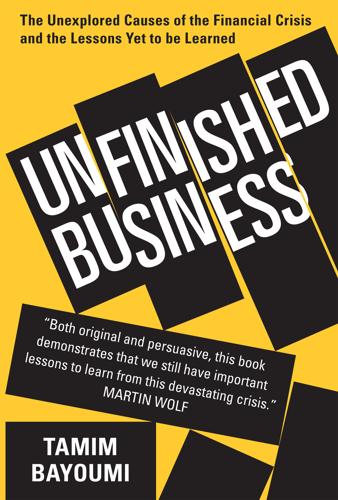
Unfinished Business
by
Tamim Bayoumi
The initial work on optimum currency areas by Robert Mundell in the 1960s focused on the importance of labor mobility in cushioning differing shocks.5 If labor can move easily between Chicago and Los Angeles, then differences in underlying shocks would be solved by workers moving out of slumping Chicago and into booming LA. This is also linked with the ease of firms to move and hire and fire, since labor mobility only works if firms are sufficiently flexible to create new jobs. In addition, fiscal policy can help to cushion the shock. Indeed, a federal fiscal system automatically provides more demand to regions in a downswing and withdraws it from regions in an upswing since federal tax revenues fall and spending rises in a slump while the opposite occurs in a boom.

Capital Ideas Evolving
by
Peter L. Bernstein
Published 3 May 2007
Amit Goyal and Sumil Warhal of Emory University studied some 3,700 corporate pension funds from 1994 through 2003 to determine their skill in selecting external investment managers. The 3,700 funds transferred a total of over $700 billion to external investment managers during the period covered by the study. These pension funds hired new managers showing large positive excess returns up to three years prior to hiring and fired existing managers after they had underperformed. The result was essentially the same as for Odean and Barber’s individual investors: “If plan sponsors had stayed with fired investment managers, their excess returns would be larger than those actually delivered by newly hired managers.” In addition, the funds would have saved all the brokerage costs involved in management changes.10 In short, we are human beings.

Dark Territory: The Secret History of Cyber War
by
Fred Kaplan
Published 1 Mar 2016
The DNI, a cabinet-level post carrying the additional title of special adviser to the president, was envisioned as a sort of supra-director who would coordinate the activities and findings of the entire intelligence community; but many saw it as just another bureaucratic layer. When the position was created, President Bush offered it to Robert Gates, who had been CIA director and deputy national security adviser during his father’s presidency, but Gates turned it down upon learning that he would have no power to set budgets or hire and fire personnel. McConnell had no problem with the job’s bureaucratic limits. He took it with one goal in mind: to put cyber, especially cyber security, on the president’s agenda. Back in the early- to mid-1990s, as NSA director, McConnell had gone through the same roller-coaster ride that many others at Fort Meade had experienced: a thrilled rush at the marvels that the agency’s SIGINT teams could perform—followed by the realization that whatever we can do to our enemies, our enemies could soon do to us: a dread deepened, in the decade since, by America’s growing reliance on vulnerable computer networks.

Custodians of the Internet: Platforms, Content Moderation, and the Hidden Decisions That Shape Social Media
by
Tarleton Gillespie
Published 25 Jun 2018
Users have accepted the notion that their microcontribution, their labor, is the fair price for whatever value and satisfaction they get from the platform. Adding rating and flagging to the user’s already long list of jobs is a small ask. Crowdworkers are a cheap and flexible labor force who can perform the kind of detection and classification that machine-learning techniques can’t quite do, can be flexibly moved (or hired and fired) as different kinds of user behavior wax and wane, and can absorb the psychological toll of wading through the mind-numbingly mundane and occasionally traumatic. The scope and character of that labor force remain hidden from the clean hallways and day-glo cafeterias of Silicon Valley headquarters, and from the legal protections attached to traditional employment.

Stakeholder Capitalism: A Global Economy That Works for Progress, People and Planet
by
Klaus Schwab
Published 7 Jan 2021
It's been achieved by a triad of stakeholders: government, companies, and unions. Since 1965, this trifecta has had a heavy hand in all labor market and industrial policy decision-making. And it did so without major disruptions in economic activity. Strikes in Singapore are extremely rare, yet the labor market is dynamic (it is relatively easy to hire and fire), and the economy has successfully transformed itself at least twice—once in the 1960s and 1970s toward manufacturing and again in the 1980s and 1990s toward services. Such a constructive and dynamic attitude will remain important going forward, Nikkei Asian Review reported recently, because “Singapore will face the highest rate of job displacement resulting from technological disruption in Southeast Asia.”29 But in a sign that this coming technological disruption will not devastate Singapore's society and economy, a survey by accounting firm PwC found that “over 90% of the Singaporean respondents said, they will take any opportunity given by their employers to better understand or use technology.”30 It shows the triple challenge for economies like the US and Western Europe.
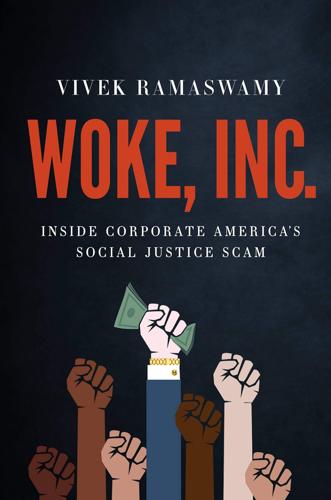
Woke, Inc: Inside Corporate America's Social Justice Scam
by
Vivek Ramaswamy
Published 16 Aug 2021
This libertarian perspective is as valid as it is irrelevant. It’s not even clear that the free market would correct for political discrimination—after all, it didn’t fully correct for racial discrimination in the Jim Crow era. But this is a moot point anyway. As a society we’ve already accepted government intervention in ordinary course hiring-and-firing decisions over the last five decades. The Civil Rights Act of 1964 prohibits discrimination on the basis of race, color, religion, sex, or national origin. It was the signature achievement of the nonviolent civil rights movement led by Martin Luther King, Jr. One of its biggest components was Title VII’s ban on employment discrimination.

Stakeholder Capitalism: A Global Economy That Works for Progress, People and Planet
by
Klaus Schwab
and
Peter Vanham
Published 27 Jan 2021
It's been achieved by a triad of stakeholders: government, companies, and unions. Since 1965, this trifecta has had a heavy hand in all labor market and industrial policy decision-making. And it did so without major disruptions in economic activity. Strikes in Singapore are extremely rare, yet the labor market is dynamic (it is relatively easy to hire and fire), and the economy has successfully transformed itself at least twice—once in the 1960s and 1970s toward manufacturing and again in the 1980s and 1990s toward services. Such a constructive and dynamic attitude will remain important going forward, Nikkei Asian Review reported recently, because “Singapore will face the highest rate of job displacement resulting from technological disruption in Southeast Asia.”29 But in a sign that this coming technological disruption will not devastate Singapore's society and economy, a survey by accounting firm PwC found that “over 90% of the Singaporean respondents said, they will take any opportunity given by their employers to better understand or use technology.”30 It shows the triple challenge for economies like the US and Western Europe.
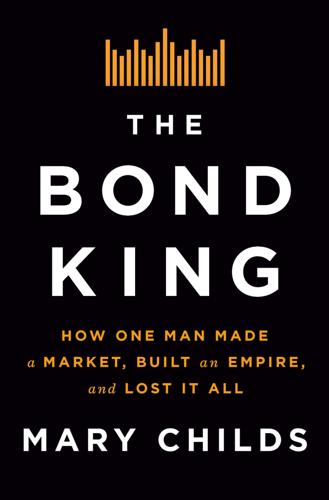
The Bond King: How One Man Made a Market, Built an Empire, and Lost It All
by
Mary Childs
Published 15 Mar 2022
Powers remembers notes saying, “I want this person fired,” or “The end of the year is not gonna be pretty,” which people took as a threat to their year-end bonuses. El-Erian’s lawyer says he “did not make a practice of sending ‘flame emails’ and ‘scorching emails’ … [and] did not operate in a ‘Machiavellian way’ (or in any of the other [sic] pejorative manner).” Of course, hiring and firing and visiting far-flung offices are normal parts of the CEO job. And Powers’s analysis, while widespread, was not universal. One former employee recalls that, when he arrived in California to visit Pimco as a prospective hire, El-Erian picked him up at the airport personally. He was touched. And when El-Erian told a colleague at HMC he was leaving to join Pimco, at the end of the conversation El-Erian hugged the guy.

Casino
by
Nicholas Pileggi
Published 13 Aug 2015
It was one of his pet topics when we had dinner together. He and Rosenthal did not get along. We did not discuss skimming. He didn’t exercise any control as far as skimming went. He never discussed it with me, and I wouldn’t discuss it with him if he asked me. “After a while I tried to discuss hiring and firing with him because I couldn’t get anything done, I couldn’t move anybody. His reaction went from confusion to a shrug; he just didn’t do anything about it. By that time I started to realize that Rosenthal was in the picture. “After about a month or six weeks of banging on doors, I got a phone call one night, and it was from Frank Rosenthal.
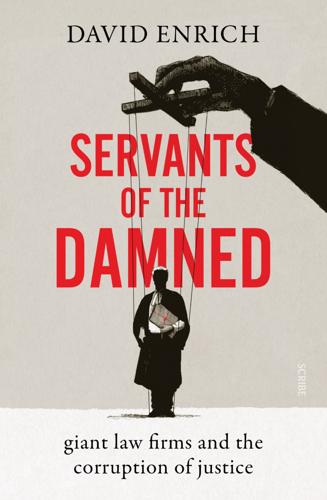
Servants of the Damned: Giant Law Firms and the Corruption of Justice
by
David Enrich
Published 5 Oct 2022
At the time, the firm, like its peers, was little more than a collection of isolated lawyers, “each practicing his own individual law business, just as local as a country doctor,” as Jack Reavis, who joined the firm a decade after Jones, put it. Ginn was a stern, autocratic fellow who chopped wood for exercise and attended classical music concerts in a cape and top hat. With the title of managing partner, he could hire and fire unilaterally. (He refused to hire anyone who was engaged. “A young lawyer had to be married to the law before he took on a wife,” Ginn’s son explained.) He set employees’ compensation. He was the arbiter of disputes. He could pick his successor. “He completely dominated the law firm and ran it with an iron hand,” a colleague recalled.

Markets, State, and People: Economics for Public Policy
by
Diane Coyle
Published 14 Jan 2020
A study of the link between the regulatory burden and entrepreneurial activity in nine member countries by the OECD found a negative impact of regulation on new entry into manufacturing and service sector markets.* The study found that administrative burdens, regulation of products or services especially in technological sectors, and restrictions on hiring and firing employees all contributed particularly strongly to the adverse effects on productivity and industry growth. In countries where it is costly to lay off employees, there is a corresponding reluctance by firms to hire workers in the first place. Such countries, including France and Spain, tend to have high rates of youth unemployment in particular, as young people are untested in the labor market and employers do not want to risk taking on someone inexperienced whom they would find hard to dismiss.

Austerity Britain: 1945-51
by
David Kynaston
Published 12 May 2008
It was a harmony that may have owed something to Luton’s location – well away from other major car plants or indeed any local engineering tradition – but undoubtedly there was a key individual involved. This was Sir Charles Bartlett, managing director from 1929 to 1953, a highly intelligent paternalist who liked his workforce to call him ‘The Skipper’. Given considerable autonomy by his American masters, and inheriting a fairly brutal, hire-and-fire regime, he presided through the 1930s and 1940s over a gradual, quiet and almost entirely successful revolution – in which, crucially, workers were treated as human beings rather than Stakhanovite extras in a remake of Metropolis. Bartlett’s approach to industrial relations had several main features: avoiding lay-offs wherever possible, so that the workforce became more stable; paying good wages; using what was known as the Group Bonus System in order to enhance motivation and give the workforce at least a limited sense of control; introducing a profit-sharing scheme; developing an impressive range of social and welfare amenities; and, at the very core of Bartlett’s strategy from 1941, promoting the Management Advisory Committee (to which each area of the factory sent a representative elected by secret ballot) as a forum for meaningful rather than fig-leaf consultation.
…
Soon afterwards, amid a sharp, pervasive divide between those who had left to fight and those who had stayed, he became a shop steward in the erecting-and-wiring shop: Most if not all charge hands, foremen, superintendents, managers and company directors had worked in the factory throughout the whole war. Morris men through and through, whatever Lord Nuffield said or did it was OK by them. They were now dealing with mainly young ex-Servicemen [about 75 per cent of the workforce in Gurl’s shop] who were looking for improvements in the factory way of life away from the hire and fire and the charge hands’ pets, the men who came in regularly with the bag of garden products which they left by the charge hands’ desks. Of course we had to be wide awake to the fact that if these old hands would bring in vegetables to get in with the bosses, then they would also run to them with any tales about the union or steward.

Why the West Rules--For Now: The Patterns of History, and What They Reveal About the Future
by
Ian Morris
Published 11 Oct 2010
“We no longer [even] call each other names,” one prominent anthropologist lamented in 1984. In the extreme case—at Stanford, my own university—the anthropologists divorced in 1998, formally splitting into the Department of Anthropological Sciences, which liked evolution, and the Department of Cultural and Social Anthropology, which did not. Each did its own hiring and firing and admitted and trained its own students; members of one group had no need to acknowledge members of the other. They even gave rise to a new verb, to “stanfordize” a department. The woes—or joys, depending on who was talking—of stanfordization kept anthropologists entertained in bars at professional conferences for several years, but stanfordizing is not much of a solution to one of the biggest intellectual problems in the social sciences.* If we are going to explain why the West rules we need to confront the arguments on both sides of this issue.
…
KINGSHIP ON THE CHEAP In a nutshell, the Eastern and Western cores avoided collapse in the first millennium BCE by restructuring themselves, inventing new institutions that kept them one step ahead of the disruptions that their continuing expansion itself generated. There are basically two ways to run a state, what we might call high-end and low-end strategies. The high end, as its name suggests, is expensive. It involves leaders who centralize power, hiring and firing underlings who serve them in return for salaries in a bureaucracy or army. Paying salaries requires a big income, but the bureaucrats’ main job is to generate that income through taxes, and the army’s job is to enforce its collection. The goal is a balance: a lot of revenue goes out but even more comes in, and the rulers and their employees live off the difference.

Cuckoo's Egg
by
Clifford Stoll
Published 2 Jan 1989
Unless he owned a Cray supercomputer, he couldn’t invert the trapdoor function, and our passwords remained safe. Wayne was still worried. “Maybe this guy’s stumbled on some brilliant way to reverse the trapdoor function. Let’s be a tad careful and change our important passwords.” I could hardly object. The system password hadn’t been changed for a couple years, and outlasted people who had been hired and fired. I didn’t mind changing my password; to make sure, I used a different password on each computer. If the hacker managed to figure out my password from the Unix-4 computer, he’d still have no way to guess it on the others. Before pedaling home, I again studied the printout of the previous day’s session.
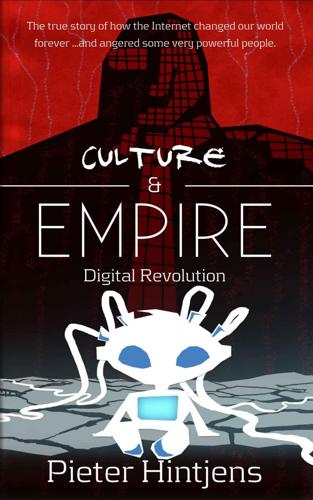
Culture & Empire: Digital Revolution
by
Pieter Hintjens
Published 11 Mar 2013
Principally, they need freedom, and they need access to markets. When the bandits want to stop the bakers from taking power, their first tool is to block trade. Freedom can mean many things. My definition in “Freedom in Chains” is, "the ability to do interesting things with other people." And if you're a baker, that means to buy and sell, hire and fire, without undue taxes, tolls, delays, or theft. Extraction Economies When a country doesn't develop a commercial middle class, industrial technologies, a strong military, and strong institutions, it is particularly vulnerable to a certain form of theft that I call "extraction." This is when a bunch of foreigners land on your shores, buy up some local chiefs, chop down your forests, rip the minerals out of your soil, enslave a few generations, and eventually go home, leaving their half-caste bastards in charge.
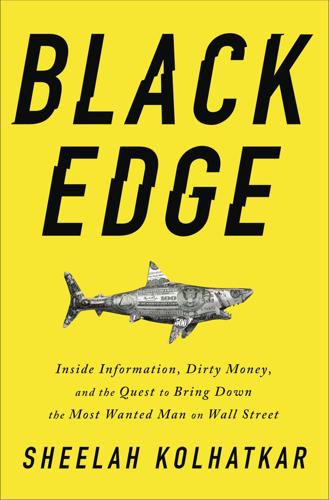
Black Edge: Inside Information, Dirty Money, and the Quest to Bring Down the Most Wanted Man on Wall Street
by
Sheelah Kolhatkar
Published 7 Feb 2017
As his stature on Wall Street grew, Cohen realized that he could make even more money by getting away from Aizer and going out on his own. He saw himself as destined for bigger things than Aizer. In 1985 Cohen negotiated a deal with Gruntal that put him in charge of his own trading group, which gave him authority to hire and fire his own traders and negotiate their compensation directly, excluding Aizer completely. Cohen’s status as Gruntal’s most lucrative trader allowed him to bargain for an unprecedented 60 percent share of his profits, plus a 2 to 4 percent “kicker” at the end of the year, depending on how well he did.

Doughnut Economics: Seven Ways to Think Like a 21st-Century Economist
by
Kate Raworth
Published 22 Mar 2017
The rise of shareholder capitalism entrenched the culture of shareholder primacy, with the belief that a company’s primary obligation is to maximise returns for those who own its shares. There’s a deep irony to this model. Employees who turn up for work day-in, day-out are essentially cast as outsiders: a production cost to be minimised, an input to be hired and fired as profitability requires. Shareholders, meanwhile, who probably never set foot on the company premises, are treated as the ultimate insiders: their narrow interest of maximising profits comes before all. No wonder that, under this set-up, the average worker has been losing out, especially since trade unions in many countries were stripped of their bargaining power from the 1980s onwards.
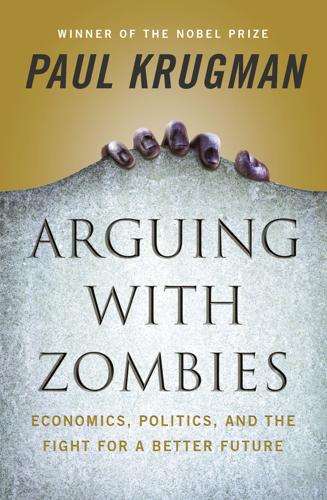
Arguing With Zombies: Economics, Politics, and the Fight for a Better Future
by
Paul Krugman
Published 28 Jan 2020
They also reduce or eliminate your options if you’re mistreated: quit because you have an abusive boss or have problems with company policy, and you may have real trouble getting a new job. But what can be done about it? Corey Robin says “socialism”—but as far as I can tell he really means social democracy: Denmark, not Venezuela. Government-mandated employee protections may restrict the ability of corporations to hire and fire, but they also shield workers from some very real forms of abuse. Unions do somewhat limit workers’ options, but they also offer an important counterweight against corporate monopsony power. Oh, and social safety net programs can do more than limit misery: they can be liberating. I’ve known many people who stuck with jobs they disliked for fear of losing health coverage; Obamacare, flawed as it is, has noticeably reduced that kind of “lock in,” and a full guarantee of health coverage would make our society visibly freer.
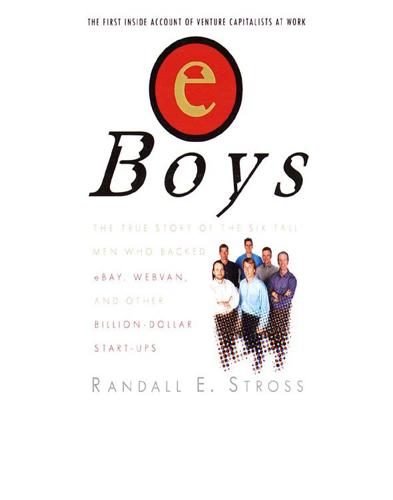
eBoys
by
Randall E. Stross
Published 30 Oct 2008
He first needed one big break. The only college he was aware of that offered full scholarships was a local engineering school, General Motors Institute. Its name was not just a polite nod to an institutional benefactor; the college was literally owned by General Motors. Faculty members were hired and fired by the corporation, received paychecks from the same source, were given the same health benefits—and the same employee discounts on GM cars—as were the assembly-line workers. The students received stipends from the same giant corporation. A GMI education took five years and consisted of alternating six-week stints in the classroom and in the workplace, in actual GM plants.

Exponential: How Accelerating Technology Is Leaving Us Behind and What to Do About It
by
Azeem Azhar
Published 6 Sep 2021
For example, an unemployed Dane can make up to 80 per cent of their previous salary – and more if they have kids – provided they can demonstrate they are looking for work. This would solve one of the great problems of the Exponential Age. Firms don’t necessarily know how fast they will grow, how quickly a business opportunity will emerge, and which blind alleys they will wander down – so flexibility in hiring and firing is valuable. But for workers, of course, agility for corporations doesn’t pay the rent. The Danish model gives firms the adaptability they need, and the workers the security they need. Finally, workers need equity. While labour’s share of the national cake has been declining for decades, new technologies look set to accelerate this process even further.

Siege: Trump Under Fire
by
Michael Wolff
Published 3 Jun 2019
That list was generated inside the campaign and included a largely random group of relative unknowns, notably Carter Page and George Papadopoulos, both of whom would later help ensnare the campaign and the future White House in the Russia mess.) But no matter how solid the Federalist Society’s list or how well the selection of Gorsuch had worked out, Trump yet rebelled. This was a plum job; why couldn’t he give it to a friend? He may not be a lawyer, but he knew more than most lawyers. After all, he had hired and fired lawyers for almost fifty years. And in New York, this was standard operating procedure: you wanted judges who owed you. Trump had pushed to nominate Giuliani (also, as it happened, a Catholic) as his first Supreme Court pick, but he was quietly talked down from this idea—Giuliani was pro-abortion.
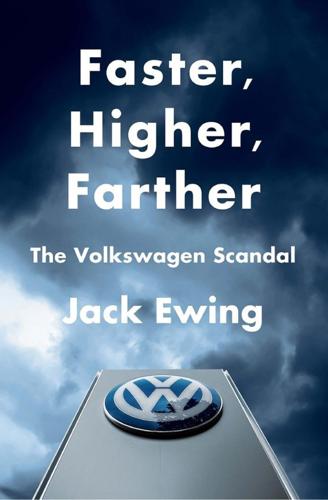
Faster, Higher, Farther: How One of the World's Largest Automakers Committed a Massive and Stunning Fraud
by
Jack Ewing
Published 22 May 2017
A clever politician, Schröder realized that Hartz’s working-class roots and track record dealing with Volkswagen workers made him an ideal person to find a compromise. Schröder’s faith in Hartz proved to be well founded. The program worked out by the Hartz Commission, as it came to be known, loosened some restrictions on hiring and firing and made it easier for companies to hire temporary workers or part-time employees who were exempt from most job protections. The program also set a time limit on unemployment benefits. After a maximum of two years—and as little as six months for younger people—jobless people received a subsistence allowance that came to less than €400 ($540) a month for a single person.

Educated
by
Tara Westover
Published 20 Feb 2018
Before I left the valley, I would set eyes on my home. Over the years I’d heard many rumors about my parents: that they were millionaires, that they were building a fortress on the mountain, that they had hidden away enough food to last decades. The most interesting, by far, were the stories about Dad hiring and firing employees. The valley had never recovered from the recession; people needed work. My parents were one of the largest employers in the county, but from what I could tell Dad’s mental state made it difficult for him to maintain employees long-term: when he had a fit of paranoia, he tended to fire people with little cause.

One Flew Over the Cuckoo's Nest: 50th Anniversary Edition
by
Ken Kesey
Published 19 Jan 2012
Every time she finds he’s made a little slip in the bookwork or in, say, the charting you can just imagine her in there grinding his nose in it.” “That’s right,” Cheswick says, coming up beside McMurphy, “grinds our noses in our mistakes.” “Why don’t he fire her?” “In this hospital,” Harding says, “the doctor doesn’t hold the power of hiring and firing. That power goes to the supervisor, and the supervisor is a woman, a dear old friend of Miss Ratched’s; they were Army nurses together in the thirties. We are victims of a matriarchy here, my friend, and the doctor is just as helpless against it as we are. He knows that all Ratched has to do is pick up that phone you see sitting at her elbow and call the supervisor and mention, oh, say, that the doctor seems to be making a great number of requisitions for Demerol—” “Hold it, Harding, I’m not up on all this shop talk.”

The Road to Unfreedom: Russia, Europe, America
by
Timothy Snyder
Published 2 Apr 2018
In the half year between his nomination as the Republican candidate and his victory in the general election, some 70% of the units sold in his buildings were purchased not by human beings but by limited liability companies. * * * — Russia’s “boy” existed in the American mind thanks to a popular American television program, The Apprentice, where Trump portrayed a mogul capable of hiring and firing at will. The role came naturally to him, perhaps because pretending to be such a person was already his day job. On the show, the world was a ruthless oligarchy, where an individual’s future depended upon the capricious whims of a single man. The climax in each episode came when Trump brought the pain: “You’re fired!”

The Secret Life of Groceries: The Dark Miracle of the American Supermarket
by
Benjamin Lorr
Published 14 Jun 2020
There are professions where we expect people to be “on call”—doctors, first responders—but they are compensated for that both financially and in civic respect. Retail workers are simply not.* The cultural effects of the shift cannot be underestimated. Retail and service sector jobs have always been marked by petty managers and their indiscriminate hiring and firing. And scheduling abuses come part and parcel with low skills and wages in every sector. But just-in-time automates all that; it gives the most callous decisions the imprimatur of technology, offering not just individual deniability but an actual halo of progress, where literal dehumanization (i.e., treating people like parts) can be justified as “valuable for the team.”

The Costs of Connection: How Data Is Colonizing Human Life and Appropriating It for Capitalism
by
Nick Couldry
and
Ulises A. Mejias
Published 19 Aug 2019
An emerging $11 billion industry is developing “enterprise social” platforms such as Microsoft’s Yammer, Salesforce’s Chatter, and (the name says it all) Facebook at Work. These platforms, inspired by social media, function to collect data from a worker’s daily interactions and convert them into metrics that can be used to assess job performance, identify interventions to reward or punish workers, or even make hiring and firing decisions.105 Bodily surveillance. This includes the use of wearable devices and self-tracking technologies (WSTT), which employ Bluetooth, triangulation algorithms, and infrared sensors to measure and track mental and physical manifestations of arousal and performance, allowing for ubiquitous monitoring beyond the workplace and the workday.106 McDonald’s, for example, has introduced “sociometric badges” that monitor everyday behavior and emotion.

Portfolio Design: A Modern Approach to Asset Allocation
by
R. Marston
Published 29 Mar 2011
P1: a/b c14 P2: c/d QC: e/f JWBT412-Marston T1: g December 8, 2010 18:59 302 Printer: Courier Westford P1: a/b c15 P2: c/d QC: e/f JWBT412-Marston T1: g December 20, 2010 17:6 Printer: Courier Westford CHAPTER 15 Investing and Spending in Retirement fter a foundation chooses its asset allocation, it should be able to leave that allocation unchanged for the indefinite future. As the last chapter showed, a foundation can set up a spending plan and choose a long-run strategic asset allocation to support it. Unless there is major distress in the markets, the foundation should be able to carry out its plans without making changes to its allocation. It will hire and fire managers, but the overall investment plan should remain unchanged. Some foundations, of course, will pursue tactical asset allocation in an attempt to take advantage of shortterm opportunities to overweight or underweight specific asset classes. But usually the tactical asset shifts are relative to a strategic (i.e., long-run) asset allocation that remains unchanged.
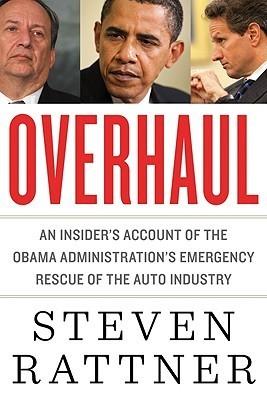
Overhaul: An Insider's Account of the Obama Administration's Emergency Rescue of the Auto Industry
by
Steven Rattner
Published 19 Sep 2010
Bob was a good friend; we had labored together in the political vineyard as ardent Democrats. He was also a terrific lawyer and counselor who conveyed gravitas and judgment. "The board is pretty upset," Bob reported. "They feel that you've taken away their most important responsibility," by which he meant the hiring and firing of the CEO. There was talk of a mass resignation, Bob said. "I think it would mean a lot if you would be willing to get on the phone with them tonight," he suggested. By the time I joined the conference call that evening, the GM board members weren't as enraged as I'd feared. Still, I was glad not to be with them in person.
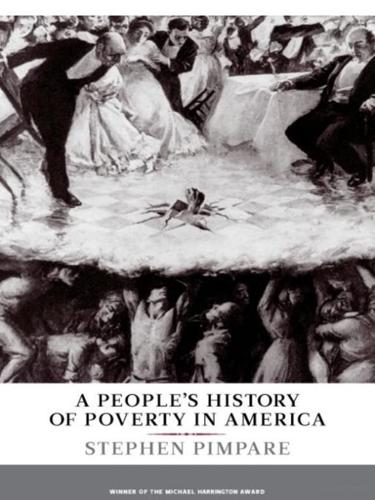
A People's History of Poverty in America
by
Stephen Pimpare
Published 11 Nov 2008
Most of them came periodically. When they got a job they would leave, and when it failed they came back. Between jobs they looked upon the Municipal Lodging House as a home. I heard no dramatic, tragic stories. They accepted without resentment the fact that they were the product of “the system,” a society that hires and fires, of a society in which landlords must have their rent. There were only a few like me who didn’t need the place, just tramps on a little excursion. We slept in double-decked cots with comfortable mattresses, clean sheets, blankets and pillows. I didn’t sleep much. Many of the women were hacking and coughing, many of them groaning and talking in their sleep.19 Some poor women and their children have lived in what we have recently called “welfare hotels,” longer-term residences for those with no access to public housing and no better options.
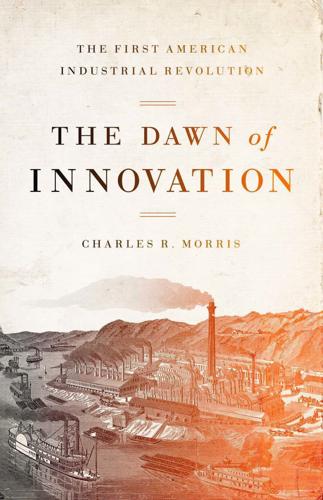
The Dawn of Innovation: The First American Industrial Revolution
by
Charles R. Morris
Published 1 Jan 2012
Baldwin and Hufty would establish a production schedule, set the timelines for each of the shops, and order the required components and raw materials. From that point, the shop foremen were on their own. In effect, they were running sizeable businesses with about fifty workers each, and like Baldwin, they had mastered every detail of their shop work, hired and fired their workers, purchased their own shop supplies, and organized their internal work flow as they saw fit—with the major difference that they had only a single customer. The relation with major suppliers was somewhat similar. Over the years they must have developed high levels of trust, and Baldwin could not have met its schedules without top-priority treatment by all its vendors.

The Innovation Illusion: How So Little Is Created by So Many Working So Hard
by
Fredrik Erixon
and
Bjorn Weigel
Published 3 Oct 2016
As in other European countries, large companies in Italy are more productive than smaller ones.17 If the size distribution of firms in Italy resembled Germany’s, its exports would have been about 25 percent higher.18 When they were surveyed about the most important factors behind financial success, Italian managers did not suggest hard work, education, or innovation as the top factors but ranked “knowledge of influential people” as the surest way to success.19 Far too often small businesses stay small to avoid the crony culture and regulations that apply only to companies of a certain size (such as hiring and firing regulations), but that comes at a heavy cost to the economy. Small companies simply lack the resources to scale up production and turn innovations that can be imported from others into products and production processes. Italy does not have many firms competing to stretch the technological frontier, but a greater problem for its economy is its wrecked diffusion machine, which prevents Italians from adapting to technological and organizational change.

The Black Box Society: The Secret Algorithms That Control Money and Information
by
Frank Pasquale
Published 17 Nov 2014
Thus a new source of tension arises: workers want and need to learn the rules of success at a new workplace, but management worries that if the rules are known, they’ll lose their predictive value. The Fair, the Foul, and the Creepy. Automated systems claim to rate all individuals the same way, thus averting discrimination. They may ensure some bosses no longer base hiring and firing decisions on hunches, impressions, or prejudices.94 But software engineers construct the datasets mined by scoring systems; they define the parameters of data-mining analyses; they create the clusters, links, and decision trees applied; they generate the predictive models applied. Human biases and values are embedded into each and every step of development.
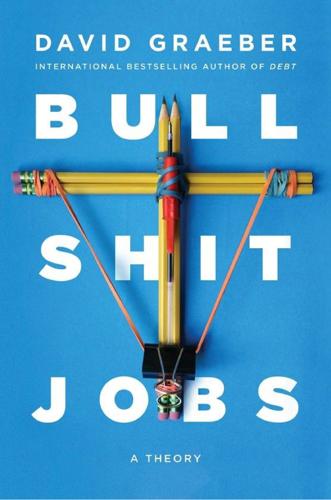
Bullshit Jobs: A Theory
by
David Graeber
Published 14 May 2018
For instance, perhaps fewer of them hang around on Twitter, or maybe the ones that do are more inclined to lie. I should add as a final note there was really only one class of people that not only denied their jobs were pointless but expressed outright hostility to the very idea that our economy is rife with bullshit jobs. These were—predictably enough—business owners, and anyone else in charge of hiring and firing. (Tania appears to be something of an exception in this regard.) In fact, for many years, I have been receiving periodic unsolicited communications from indignant entrepreneurs and executives telling me my entire premise is wrong. No one, they insist, would ever spend company money on an employee who wasn’t needed.

The Job: The Future of Work in the Modern Era
by
Ellen Ruppel Shell
Published 22 Oct 2018
“Just because Apple makes their stuff in Shenzhen doesn’t mean we have to,” Provost told me. Provost said two friends discouraged him from even considering a foreign manufacturer. The friends, both designers, also launched a product on Kickstarter, a stainless-steel writing implement called “Pen Type A.” They then hired—and fired—two different Chinese manufacturers, neither of which met their quality standards. They moved on to a Vermont manufacturer who shared their vision. “Manufacturing is hard,” they wrote in a note to Provost. “There are no shortcuts. No magic, no secrets, and always lots of surprises.” Products crafted in small batches and for a specific purpose tend to be more durable than mass-produced products and are often better suited for the job that needs to get done.

Hedgehogging
by
Barton Biggs
Published 3 Jan 2005
GROUPTHINK = GROUPSTINK AND SOLOTHINK: INVESTOR MEETINGS NEED A LITTLE AGITATION AND CONTENTION Recently as a favor to a friend I attended an investment committee meeting at a big foundation. It is almost always frustrating to observe such a meeting because with the best of intentions they are implementing wrong judgments about equity ratios, the role of alternative asset classes, spending levels, and manager hiring and firing. Groups of highly intelligent, sincere people are reaching bad decisions that reflect the easy, prevailing current consensus of what has worked recently, despite compelling evidence that there is a mean to revert to. The most important investment judgments at most big institutions and for most large portfolios are made by committees, but few realize the negative dynamics of group interaction.
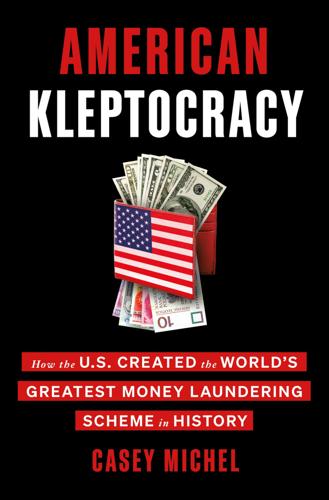
American Kleptocracy: How the U.S. Created the World's Greatest Money Laundering Scheme in History
by
Casey Michel
Published 23 Nov 2021
Raymond Bonner, “Laundering of Money Seen as ‘Easy,’” New York Times, 29 November 2009, nytimes.com/2000/11/29/business/laundering-of-money-seen-as-easy.html%20and%20https://www.nbcnews.com/news/us-news/ike-kaveladze-named-eighth-person-trump-meeting-n784216. 60. Philip Elliott, “How Donald Trump Hired and Fired Paul Manafort,” Time, 30 October 2017, https://time.com/5003298/paul-manafort-indictment-donald-trump/. CHAPTER 15: CORRUPTION IN THE FLESH 1. Eliot Asinof, Eight Men Out (New York: Henry Holt, 1963). 2. https://www.instagram.com/p/BknayFBgcC2/?taken-by=boorossinicte. 3. https://www.instagram.com/p/BkghoSxgpZa/?

Democracy's Data: The Hidden Stories in the U.S. Census and How to Read Them
by
Dan Bouk
Published 22 Aug 2022
African American editors and punchers were among the first workers dismissed when demand slackened, while their white colleagues stayed on or got transfers to other good government jobs. An investigation by the American studies scholar J. D. Schnepf recently uncovered the mechanisms by which the Census Bureau used apparently objective error rates and efficiency ratings to justify these discriminatory hiring and firing patterns; in fact, as Schnepf shows, the bureau engineered a system where workers created data records tracking fellow employees’ errors and productivity “to establish grounds for employee dismissal, a practice that disproportionately affected the bureau’s black women workers” since those workers were the most recently hired and as a result usually less efficient and more prone to beginner errors.29 The unions fought alongside African Americans against these practices that set worker against worker, and the African American press drew attention to the controversy, with some success.
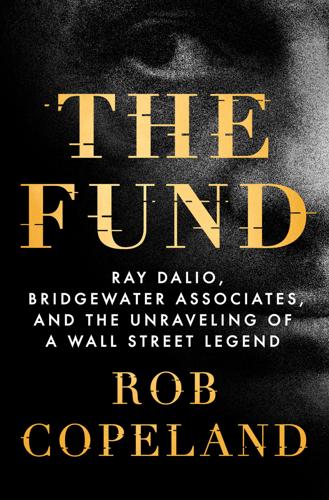
The Fund: Ray Dalio, Bridgewater Associates, and the Unraveling of a Wall Street Legend
by
Rob Copeland
Published 7 Nov 2023
McCormick had good reason to be careful, as it turned out, because by all indications he was soon to become the latest target of the Bridgewater founder’s attention. Unbeknownst to all but a few at the firm, around early 2019 co-CEO Eileen Murray told Dalio that it would be her last year. She was exhausted, she told friends, particularly tired of being overruled by Dalio on whom to hire and fire, and she had more money than she could ever have dreamed. This made McCormick the obvious pick to be sole CEO—not bad for a man who less than a decade earlier had been deputized by Dalio to investigate piss on the bathroom floor. It also, however, came with risks. McCormick had noticed that Dalio demonstrated a pattern of finding reasons to humiliate those closest to him at the hedge fund, and McCormick was well aware that the tide could turn at any time.
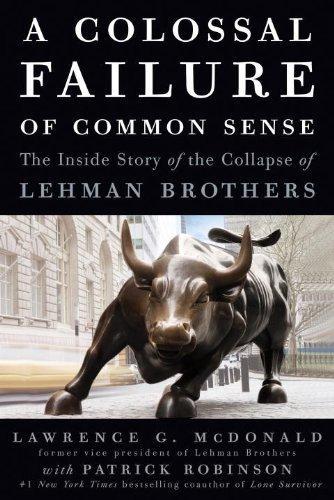
A Colossal Failure of Common Sense: The Inside Story of the Collapse of Lehman Brothers
by
Lawrence G. Mcdonald
and
Patrick Robinson
Published 21 Jul 2009
In the great scheme of things, bondholders matter, with many carefully written covenants to protect them. Stockholders are cannon fodder. If the shares go up, they win. If the shares go down, no one cares. But bonds … ah, those golden-edged bonds. They are just the ticket, because the large corporation that took your money is duty bound to give it back. Bondholders can have people hired and fired. If a few of them get together, they can throw out the board, unload the top executives. They can demand that the assets of the corporation be sold, and they rate real high on the pecking order for repayment if a corporation goes bankrupt. And it’s important to understand that a large corporation going bankrupt is not the same as a person throwing up his hands in the face of a couple of low-flying creditors and declaring personal bankruptcy.
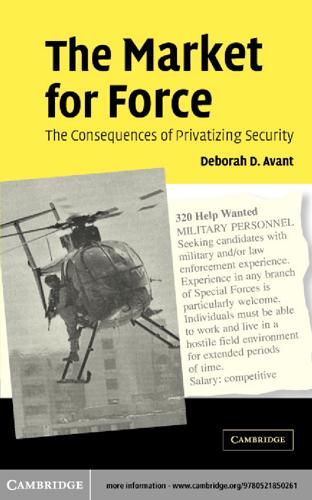
The Market for Force: The Consequences of Privatizing Security
by
Deborah D. Avant
Published 17 Oct 2010
Indeed, the authority of the transnational community over personnel was unclear.130 While one might imagine that the infusion of additional resources would enhance the capacity of forces, there was little improvement. This was primarily due to the unclear legal status of the conservation organizations in Garamba and the effect this had on the chain of command.131 Officially, the government in Kinshasa hired and fired the Park personnel, but they were supervised and paid by the expatriate staff from WWF. What the expatriate staff was authorized to do in this supervisory role was unclear, though. This lack of clarity extended to the qualifications for being a guard, including even basic operating objectives and performance standards.132 Without standards, a good portion of the guard force was unqualified to carry out many tasks – for instance, guards were unable to field strip or clean their weapons.
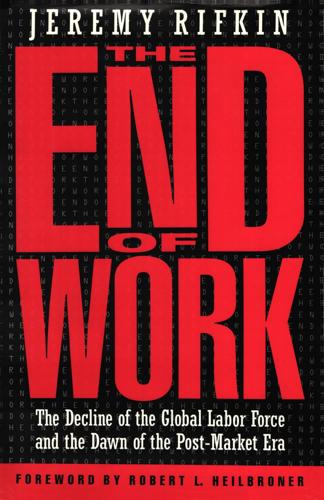
The End of Work
by
Jeremy Rifkin
Published 28 Dec 1994
Between 1945 and 1955, the United States experienced over 43,000 strikes in the most concentrated wave of labor/management confrontations in industrial history.27 Crossing into the High-Tech Frontier 67 Management were growing concerned over what they perceived as organized labors invasion of their traditional terrain. Issues of hiring and firing, promotions, discipline actions, health benefits, and safety concerns were brought into the collective bargaining process in every industry. Business Week warned that "the time has come to take a stand ... against the further encroachment into the province of management."28 Menaced by the increasing intensi ty of labor's demands and determined to maintain its long-standing control over the means of production, America's industrial giants turned to the new technology of automation as much to rid themselves of rebellious workers as to enhance their productivity and profit.
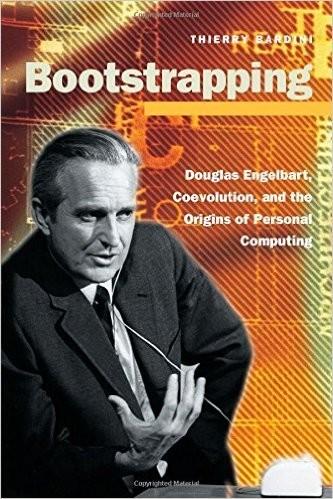
Bootstrapping: Douglas Engelbart, Coevolution, and the Origins of Personal Computing (Writing Science)
by
Thierry Bardini
Published 1 Dec 2000
In spite of their participation In the country's leading experi- ment In networkIng, the staff members at PRL were as vulnerable to this psycho- logical pressure as any other group. . . . The First and Second Waves looked for other victims. They thought the task would be pretty easy because they had be- ARPANET, E-matl, and est 207 come the overwhelming majority. They formed a block around Stanley, who could hire and fire. They expected no organIzed resistance and they found none. Instead, they found individuals who could stand on their two feet and simply tell them to get lost. (Vallee 1982, 10-12) These "individuals who could stand on their two feet," the few who are able to resist the pressure to realize themselves, are those who already have done so, those who are secure in their independent identities.

The Speed of Dark
by
Elizabeth Moon
Published 1 Jan 2002
She tells us her name is Hendricks; she tells us she is heading the research team and that she wants only willing participants. She sits down. A man in a dark suit stands up and tells us his name is Godfrey Arakeen , an attorney from the company’s legal division, and we have nothing to worry about. I am not worried yet. He talks about the regulations that govern hiring and firing of handicapped employees. I did not know that the company got a tax credit for hiring us, dependent on the percentage of disabled workers by division and specialty. He makes it seem that our value to the company is that we are a tax credit, not the work we do. He says that Mr. Crenshaw should have informed us of our right to talk to a company ombudsman.
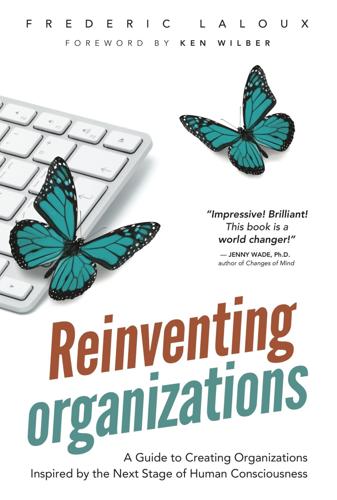
Reinventing Organizations: A Guide to Creating Organizations Inspired by the Next Stage of Human Consciousness
by
Frederic Laloux
and
Ken Wilber
Published 9 Feb 2014
the natural limit, they felt, for colleagues to more or less put names and faces together and enter into a casual discussion with any colleague. Like their counterparts at FAVI and Sun, teams at AES were responsible for decisions relating to all aspects of day-to-day operations: budgets, workload, safety, schedules, maintenance, hiring and firing, working hours, training, evaluations, compensation, capital expenditures, purchasing, and quality control, as well as long-term strategy, charitable giving, and community relations. Let me invite you to pause for a second, as you would be forgiven for having read through that long list of responsibilities too quickly.

Iron Sunrise
by
Stross, Charles
Published 28 Oct 2004
He’d outlined enough work there to keep someone occupied for a week. With passenger churn approaching 40 percent per destination, they’d gone through six or seven thousand embarkations, not to mention the Entertainments staff: they’d shipped an entire chamber orchestra from Rosencrantz to Eiger, never mind the other irregular performers that Ents kept hiring and firing. “I’d better get you sorted out right away. If you don’t mind, I’m going to boot you upstairs to my CO — I’m due off duty in two hours with shore leave tomorrow.” “Well, I won’t keep you — but let’s get started. I’m supposed to report back within twenty-four hours. With results. And then I may have to call on you to help me arrest someone.”

Fire and Steam: A New History of the Railways in Britain
by
Christian Wolmar
Published 1 Mar 2009
Originally most of the workmen’s trains charged the same 2d for a return fare, a real bargain for up to twenty-two miles’ travel, but later there was a differentiation between times, with earlier trains before 6.30 a.m. remaining at tuppence while the later ones, catering for a more affluent clientele who could be in their offices a bit later, cost 3d, 4d or even 5d return. The workmen’s trains may have helped the great cities to expand and their workforces to live in better conditions, but they were not a panacea. The poorest labourers, a significant proportion of the workforce, who were paid meagre rates and were hired and fired by the day, could not take advantage of these services. Even those who could often struggled to pay the tuppence or so for their daily fare, and many people suffered great inconvenience because the cheap trains were timetabled only to run very early in the morning, which meant that many passengers had to hang around near the termini, possibly in the wet and cold, until their places of work opened.
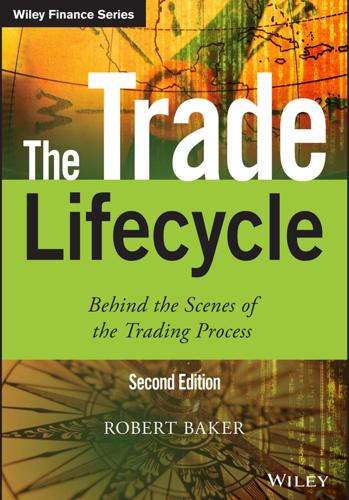
The Trade Lifecycle: Behind the Scenes of the Trading Process (The Wiley Finance Series)
by
Robert P. Baker
Published 4 Oct 2015
One example was Barclays Capital – a very old British bank subjected to a very American-style management takeover that brought sweeping cultural changes to the whole organisation. The old organisation was genteel, English, formal, rewarding loyalty, cautious by nature and slow to change. In a very short space of time it was transformed: competitive, worldwide, informal, rapid hire and fire, opportunist and fast changing. This is not uncommon. Banks are always looking for ways to penetrate new markets by acquiring interests in other parts of the world. It makes business sense for them to join with something different from themselves – the resulting clash of cultures is likely if not inevitable. 17.3 THE EQUALITY OF MONEY The early American pioneers subscribed to a common dream that every person, no matter their background, had the potential to achieve financial success.
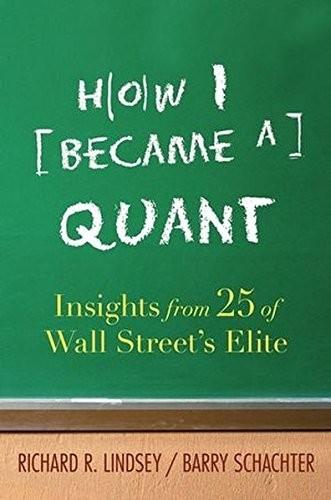
How I Became a Quant: Insights From 25 of Wall Street's Elite
by
Richard R. Lindsey
and
Barry Schachter
Published 30 Jun 2007
The firm’s leaders, Andrew Rudd and Richard Grinold, were academics who fostered a learning environment. The firm was organized around a unifying framework for thinking about investing and applying that framework to all investments from stocks to bonds, domestic and international to activities from portfolio management to trading to hiring and firing portfolio managers. Research at BARRA differed from that at broker/dealers or investment managers in that it was less proprietary, since BARRA sold risk models and not actively managed investment products. The firm ran well-known annual research seminars at JWPR007-Lindsey 36 May 7, 2007 16:30 h ow i b e cam e a quant Pebble Beach, California—part client education, part presentation of new results from quantitative analyses of investment issues.
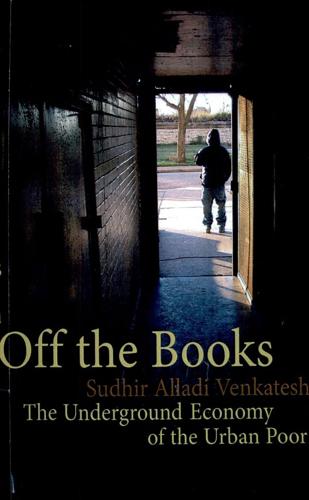
Off the Books
by
Sudhir Alladi Venkatesh
Many basic economic services along Maquis Park's commercial thoroughfares are fulfilled off the books. For example, there is a socially accepted interchange between small (legitimate) businesses and underground entrepreneurs. A small business in Maquis Park might hire quickly and for short tenures to address an opportunity, and all such hiring and firing might be conducted off the books. Verbal agreements among parties familiar with each other will rule. Because the labor relations are informal and secretive, they may go unprotected by OSHA, the EEOC, and other government bodies who set rules for proper and safe working conditions. Similarly, if a small business has a problem, the owner might call the police, but just as often one will find merchants working in backroom negotiations with local leaders to address issues like shoplifters or clients who have not paid their bills on time.

AI 2041: Ten Visions for Our Future
by
Kai-Fu Lee
and
Qiufan Chen
Published 13 Sep 2021
This simple fact is poised to generate tremendous economic value but also to cause unprecedented job displacement—a wave of disruption that will hit blue- and white-collar workers alike. In a lively narrative that imagines the frontlines of AI-related layoffs, “The Job Savior” describes a future in which AI will be doing everything from underwriting our loans to building our homes, and even hiring and firing us. This transformation of how work gets done will not only result in severe unemployment, but potentially ignite a host of social problems, including depression, suicide, substance abuse, widening inequality, and social unrest. So where does that leave us? What can individuals, companies, and government do to mitigate potentially catastrophic consequences?
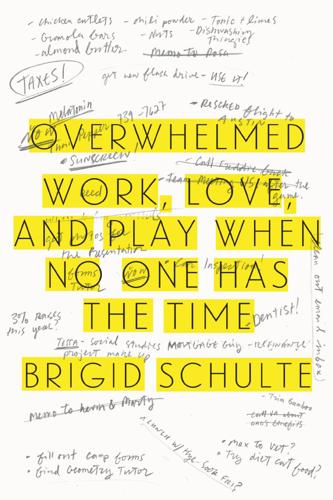
Overwhelmed: Work, Love, and Play When No One Has the Time
by
Brigid Schulte
Published 11 Mar 2014
The Danish government is rated as among the most transparent, efficient, trusted, and least corrupt by civil society organizations.33 Denmark is moving toward energy independence, with renewables accounting for 40 percent of the country’s supply.34 And its pro-business policies land Denmark in the top rankings of the conservative Heritage Foundation’s global Index of Economic Freedom.35 The same safety net, which funds universal child care, heath care, generous unemployment benefits, and a robust free public education system through college and graduate school, gives businesses enormous flexibility in hiring and firing workers, called the “flexicurity model.”36 That makes everybody happy. As Rikke, a teacher I met while she was on parental leave, put it, “I don’t have to worry, whatever may happen to my job, my partner, or to me. I know I’ll never have to say, ‘Oh, too bad, I’ve got to go sleep in the park.’”

The Bank That Lived a Little: Barclays in the Age of the Very Free Market
by
Philip Augar
Published 4 Jul 2018
Bycroft and his firm helped to break this mould. He was one of the pioneers of executive search in Britain, patiently building his contacts and explaining his trade to a bemused audience. Once he was asked, ‘Is this kind of thing legal?’ But as British industry in the 1980s deregulated, de-unionized and became more results orientated, hiring and firing became routine and search took off. One sector above all depended on head hunters to find qualified staff. As we have seen, the end of the Stock Exchange’s closed shop triggered a scramble for qualified people among the many financial institutions trying to build investment banks. The partner-run firms that would seed these new trading factories were tiny relative to the ambitions of the banks.
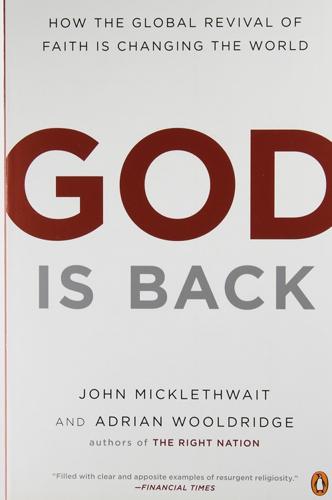
God Is Back: How the Global Revival of Faith Is Changing the World
by
John Micklethwait
and
Adrian Wooldridge
Published 31 Mar 2009
These professional priests not only softened many of Methodism’s once-austere rules and rituals, they also shifted their focus from preaching the Word to reforming society and doing good works. The waning of Methodism created a marketing opportunity for the Baptists, who were even more “bottom-up” than the Methodists. 42 Local congregations jealously guarded their independence, hiring and firing their own preachers (most contracts only lasted a year), and vigorously resisting the emergence of Baptist seminaries. The result was that they preserved a much more fundamentalist approach to faith—and a much stronger commitment to winning souls. After the Civil War, the Southern Baptists had the added advantage of being the main vehicle for the preservation of the distinctive culture of the shattered South.

Operation Chaos: The Vietnam Deserters Who Fought the CIA, the Brainwashers, and Themselves
by
Matthew Sweet
Published 13 Feb 2018
Nothing about it was clean or uncomplicated. In 1954, the Geneva Accords split Vietnam into two zones, the Communist north, administered from Hanoi by the revolutionary leader Ho Chi Minh, and the non-Communist south, ruled from Saigon by a succession of Western-backed leaders, who were advised—and sometimes hired and fired—by the hidden hand of the Central Intelligence Agency. From 1960, the National Liberation Front, a Communist insurgency also known as the Viet Cong, added its firepower to the argument. Away from the bullets, the war’s foreign stakeholders invested their millions. China and the Soviet Union supplied expertise, money, and guns.
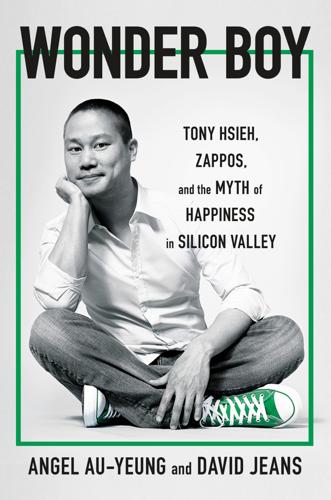
Wonder Boy: Tony Hsieh, Zappos, and the Myth of Happiness in Silicon Valley
by
Angel Au-Yeung
and
David Jeans
Published 25 Apr 2023
He then addressed Ovik’s complaints point by point, starting with Ovik’s concern that the Downtown Project lacked “culture, mission, and core values.” Getting the culture right was a priority, Tony wrote, but he countered that it would take time: unlike a company, building culture for a city is a whole other challenge. “At zappos, we can choose who we hire and fire. you can’t choose who lives or works downtown, and each business dtp invests in will have a different culture and set of values which dtp needs to somehow integrate with,” Tony wrote. Ovik also said there was poor communication and connectivity within the Downtown Project, and suggested holding monthly meetings to keep the community informed, and serve as a place to air grievances.

Battle for the Bird: Jack Dorsey, Elon Musk, and the $44 Billion Fight for Twitter's Soul
by
Kurt Wagner
Published 20 Feb 2024
The two sides spent Sunday evening and into Monday morning negotiating. (Musk also stayed up all night, but not because he was working on the deal; instead he’d been at a party with friends and had too much Red Bull.) Twitter’s lawyers worked in a handful of other small changes to the agreement, including keeping the company’s right to hire and fire employees without Musk’s approval until the deal closed. They also added another clause known as “specific performance” to the contract, which meant that Musk couldn’t simply walk away from the deal and pay monetary damages. As long as Twitter upheld its end of the bargain, a court could order Musk to follow through on the agreement, even if he changed his mind.
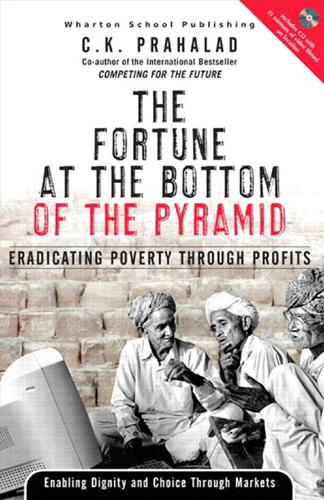
The fortune at the bottom of the pyramid
by
C. K. Prahalad
Published 15 Jan 2005
Casas Bahia works very hard to foster an environment of trust where people feel safe to share their ideas. —Frederico Wanderley, CIO Human Resources Management Casas Bahia has approximately 20,000 employees. The company employs an additional 2,500 contract installers. Until 1996, all human resources (HR)related decisions, including training, hiring, and firing, were made at the corporate level. After rapid expansion began in 1996, all HR-related functions, except for specialized training and the administrative aspect of the function, moved to the local stores. All policy decisions are still centralized at headquarters. Most employees spend their entire career at Casas Bahia and believe they have good jobs.

Wall Street: How It Works And for Whom
by
Doug Henwood
Published 30 Aug 1998
A paper written just seven years later with Richard Ruback Qensen and Ruback 1983) celebrated the virtues of the market for corporate control as a market in which "alternative managerial teams compete for the rights to manage corporate resources." This marked a shift, said Jensen and Ruback, from the classic view in which stockholders hired and fired management: [Tjhe managerial competition model instead views competing management teams as the primary activist entities, with stockholders (including institutions) playing a relatively passive...judicial role.... [Sltockholders in this system have relatively little use for detailed knowledge about the firm or the plans of competing management teams beyond that normally used for the market's price setting function.

India's Long Road
by
Vijay Joshi
Published 21 Feb 2017
Existing workers could retain their privileges but new workers could be moved to changed contracts, which allow termination of employment in the event of company distress or worker delinquency but have more generous monetary and non-monetary severance benefits. This is in accord with modern progressive thinking: the socially desirable labour contract is a compromise between ‘permanent employment’, with its inflexibility, and ‘hire and fire’, with its extreme insecurity and discouragement of training. Section 9A should also be amended to give companies more freedom and flexibility in the assignment and redeployment of labour tasks. Secondly, the CLA needs to be recast to reduce the scope for administrative discretion by clarifying the circumstances in which contract labour can be used.43 Thirdly, the massive overload of labour laws should be streamlined and the inspections process made much more transparent.44 Fourthly, the involvement of the state in industrial disputes should be curtailed and the role of collective bargaining increased.
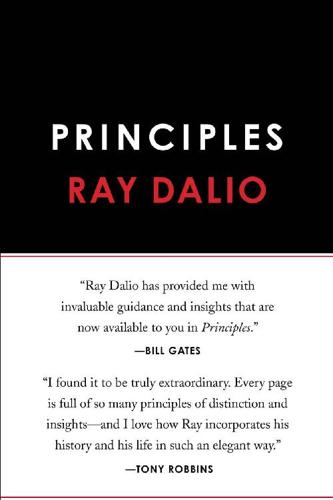
Principles: Life and Work
by
Ray Dalio
Published 18 Sep 2017
Just because someone is responsible for “Human Resources,” “Recruiting,” “Legal,” “Programming,” and so forth, doesn’t necessarily mean they are the appropriate person to do everything associated with those functions. For example, though HR people help with hiring, firing, and providing benefits, it would be a mistake to give them the responsibility of determining who gets hired and fired and what benefits are provided to employees. b. Constantly think about how to produce leverage. Leverage in an organization is not unlike leverage in the markets; you’re looking for ways to achieve more with less. At Bridgewater, I typically work at about 50:1 leverage, meaning that for every hour I spend with each person who works for me, they spend about fifty hours working to move the project along.

Practical OCaml
by
Joshua B. Smith
Published 30 Sep 2006
These classes do not really do anything, but they serve as good examples of what multiple inheritance is, what problems it solves, and why people think it is a bad idea. Suppose that you are designing an HR system. You start to work on the parts that deal with employees, so you start with an employee base class. This class has hire and fire methods, and holds information common to all employees. class employee = object val mutable hiredate = "" val mutable isactive = false val mutable firedate = "" method hireDate () = hiredate method isActive () = isactive method terminationDate () = firedate method hire x = hiredate <- x;isactive <- true method fire x = firedate <- x;isactive <- false end;; The company is a trading firm, so you also have to create a specific class for employees who are traders.

Sixty Days and Counting
by
Kim Stanley Robinson
Published 27 Feb 2007
So; call to arrange for “extended stay” for Joe, a development his teachers were used to. Another exception to the supposed schedule. Because they needed the World Bank executing Phil’s program; in the war of the agencies, now fully engaged, the World Bank and the International Monetary Fund were among the most mulish of their passive-aggressive opponents. Phil had the power to hire and fire the upper echelons in both agencies, which was good leverage, but it would be better to do something less drastic, to keep the midlevels from shattering. This meeting with the Intergovernmental Panel on Climate Change, a UN organization, might be a good venue for exerting some pressure. The IPCC had spent many years advocating action on the climate front, and all the while they had been flatly ignored by the World Bank.

War and Gold: A Five-Hundred-Year History of Empires, Adventures, and Debt
by
Kwasi Kwarteng
Published 12 May 2014
True revolution ‘defied all of the overwhelming forces, interests, and impulses of American democracy’. The supply-side revolution was all about lower taxes. In Stockman’s simple formulation, higher taxes ‘caused less work’, while low tax rates ‘caused more’. More generally, ‘supply-siders’ favoured deregulation and labour-market flexibility, characterized as easier ‘hire and fire’ policies in order to boost production, or the supply side. This contrasted with the Keynesian emphasis on aggregate demand, often promoted by government spending, as a key driver of economic growth. As early as November 1981, Stockman became convinced that the Reagan administration had ‘locked the door on its own disastrous fiscal policy jail cell’ and had thrown away the key.
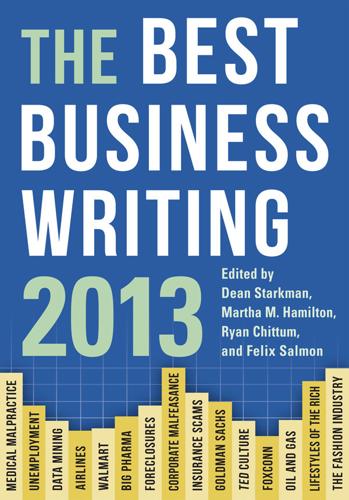
The Best Business Writing 2013
by
Dean Starkman
Published 1 Jan 2013
So they’re going to tell you, ‘You’re not good enough, you’re not good enough, you’re not good enough,’ to make you work harder. Don’t say, ‘This is the best I can do.’ Say, ‘I’ll try,’ even if you know you can’t do it. Because if you say, ‘This is the best I can do,’ they’ll let you go. They hire and fire constantly, every day. You’ll see people dropping all around you. But don’t take it personally and break down or start crying when they yell at you.” Several months prior, I’d reported on an Ohio warehouse where workers shipped products for online retailers under conditions that were surprisingly demoralizing and dehumanizing, even to someone who’s spent a lot of time working in warehouses, which I have.
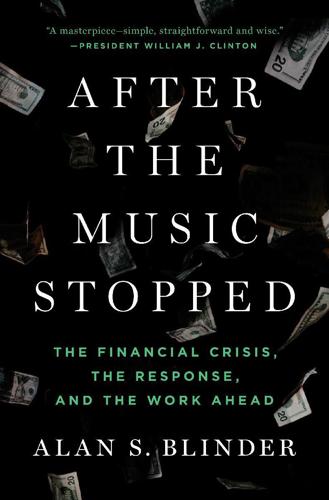
After the Music Stopped: The Financial Crisis, the Response, and the Work Ahead
by
Alan S. Blinder
Published 24 Jan 2013
In particular, while the economy was clearly somewhat wounded, I was not convinced we were headed for a serious recession. After all, real GDP growth averaged 2.2 percent in 2007 and just slightly below zero in the first two quarters of 2008. But on September 15, 2008, I turned deeply pessimistic. So did lots of other people—perhaps most important, business-people who make hiring and firing decisions. Layoffs skyrocketed. The two panels of figure 6.1, one for quarterly GDP growth (on the left), the other for monthly job growth (on the right), are repeated from chapter 1. They show the dramatic worsening of an already-weak economy after September 2008. Lehman’s failure precipitated a near cataclysm in the financial markets and shattered confidence everywhere.
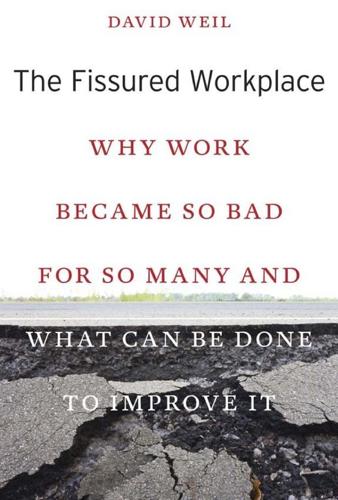
The Fissured Workplace
by
David Weil
Published 17 Feb 2014
A public policy agenda must look for ways to address these problems. However, crafting responses for the fissured workplace presents its own dilemmas, for a simple reason: federal and state policies are based on a model of employment with a single, well-defined employer with direct responsibility in hiring and firing, managing, training, compensation, and development of its workforce. But that does not conform to the way the workplace is currently organized. Part III addresses the question of mending the fissured workplace.2 The emergence of fissuring requires rethinking our basic definitions of employment.

Capitalism in America: A History
by
Adrian Wooldridge
and
Alan Greenspan
Published 15 Oct 2018
America survived for seventy-seven years, from 1836, when the Second Bank’s charter ran out, to 1913, when Woodrow Wilson created the Federal Reserve, without a central bank or much of a monetary policy other than to stick to the gold standard. The cost of living rose by a scant 0.2 percent a year. Employers had a free hand to hire and fire their workers. America pursued an open-door policy toward European immigrants (though not toward Chinese immigrants, who were singled out by the Chinese Exclusion Act of 1882). And most Americans liked it that way: the prevailing wisdom was that all you needed to create a good society was a sound currency and a Bill of Rights and the free market could do the rest.
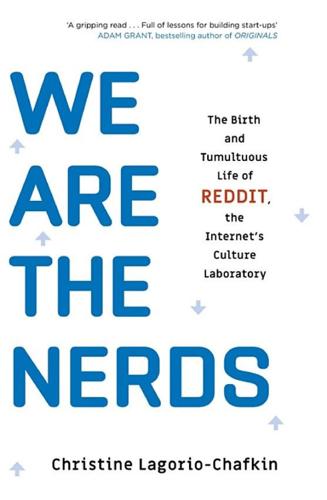
We Are the Nerds: The Birth and Tumultuous Life of Reddit, the Internet's Culture Laboratory
by
Christine Lagorio-Chafkin
Published 1 Oct 2018
I felt that he didn’t appreciate the skill and finesse that went into these conversations or the value of relationships with the AMA moderators.” Ohanian maintains that Pao’s account is flawed. On multiple occasions, when speaking about this period in which Taylor was terminated, he has said that he deferred to Pao on staffing matters; that the board, by making her chief executive, gave her control over hiring and firing. He later said that he was called in to meet with Pao and human resources the prior afternoon, July 1, and that Pao brought up the matter of Taylor’s employment. “I had the impression she saw Victoria as one of the last holdovers from the Yishan era. She’d floated firing her to me previously,” he said.

Your Computer Is on Fire
by
Thomas S. Mullaney
,
Benjamin Peters
,
Mar Hicks
and
Kavita Philip
Published 9 Mar 2021
Sexism was intended to keep power out of the hands of those deemed unworthy of wielding it, but it ended up devastating Britain’s computing industry and the country’s global technological standing. This history is of crucial importance today because it is not that unusual: the British reliance on sexist hiring and firing practices, and on the association of technical work with low-status workers but powerful managerial work with high-status workers, has been a common pattern in the postindustrial West. The manner in which government leaders and industry officials worked together to standardize and codify a gendered underclass of tech workers, and then to later upskill that work once the managerial power of computers became clear, was not evolutionary or accidental.
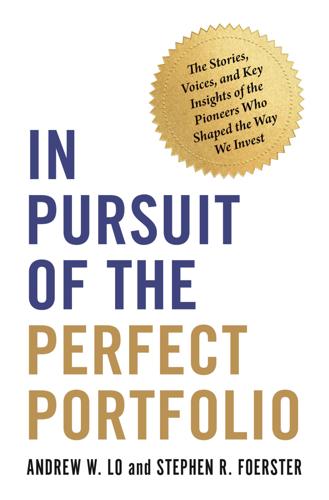
In Pursuit of the Perfect Portfolio: The Stories, Voices, and Key Insights of the Pioneers Who Shaped the Way We Invest
by
Andrew W. Lo
and
Stephen R. Foerster
Published 16 Aug 2021
The other is, if we have several hundred thousand [businesspeople] and we pull out the most successful one, what’s the probability that that was luck, not skill, even over a long period of time? So, you’ve got a big statistical issue there because that’s the way these people get identified.”88 Fama voiced other concerns about active management, in particular the hiring and firing of managers based on past performance. “I think the big problem facing investors is that they don’t understand the importance of uncertainty about outcomes. So, for example, I get to do a lot of talking to institutional people and financial advisers. Institutional people, especially, tend to change their portfolios based on three to five years of past returns, and I show them simulations in which that’s basically noise.

American Girls: Social Media and the Secret Lives of Teenagers
by
Nancy Jo Sales
Published 23 Feb 2016
“In inverse ratio to the forward-looking technology the community produces, it is stunningly backward when it comes to gender relations,” wrote Nina Burleigh in a 2015 Newsweek piece, “What Silicon Valley Thinks of Women.” “Google ‘Silicon Valley’ and ‘frat boy culture’ and you’ll find dozens of pages of articles and links to mainstream news articles, blogs, screeds, letters, videos and tweets about threats of violence, sexist jokes and casual misogyny, plus reports of gender-based hiring and firing, major-league sexual harassment lawsuits and a financing system that rewards young men and shortchanges women.” In 2014, a group of female leaders in the tech industry penned “An Open Letter on Feminism in Tech” in which they described the hostile atmosphere they’d encountered in the industry.

Blood in the Machine: The Origins of the Rebellion Against Big Tech
by
Brian Merchant
Published 25 Sep 2023
It looks like you have choice and volition, but really it’s training you to work for the platform in a specific way. There is a purposefully generated information asymmetry, Dubal says. Workers can never be sure how much they’ll earn, or that the algorithm isn’t going to suddenly determine they should be terminated. “Algorithmic hiring and firing have become an everyday part of people’s lives, whether we’re talking about customer service agents or warehouse workers.” The aim, she says, is to create an anxious, uncertain workforce that has no choice but to be malleable before the algorithm’s demands. “These experiments are now fusing into other parts of the economy,” Dubal says.

The Relentless Revolution: A History of Capitalism
by
Joyce Appleby
Published 22 Dec 2009
Paine continued to lash out at England’s aristocrats while the new industrialists were consolidating much greater power than they had had. Ordinary laborers lost a lot of liberty in this era. In the nineteenth century factory owners, newly solidified into a powerful class, exercised control over them through their right to hire and fire at will and without cause. Making private property the premium social good, they rejected the idea that freedom is just as precious to workers as to themselves. Because it took laws to protect workers trying to organize on the private property of their bosses, owners have often treated workingmen’s campaigns as attacks on liberty.
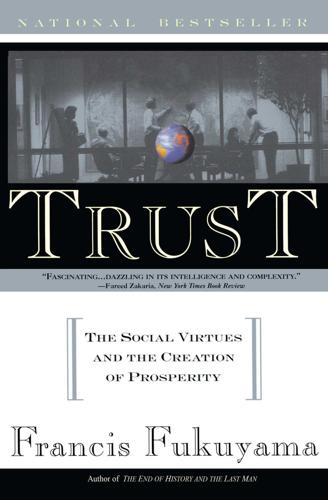
Trust: The Social Virtue and the Creation of Prosperity
by
Francis Fukuyama
Published 1 Jan 1995
To opt out of this system, then, is to reject the value placed on work by the culture as a whole. If moral pressure is not enough, the works councils—those enterprise-level labor-management groups whose precedents lay in the Weimar period—have the legal power to establish rules that sharply limit the ability of employers to hire and fire workers at will. Companies seeking to downsize must submit plans for compensating, retraining, or relocating workers to be laid off. This restricts the ability of free riders to “poach” the skilled labor of other companies.19 These works councils have effects somewhat similar to the Japanese lifetime employment system insofar as they impede labor mobility.

WTF?: What's the Future and Why It's Up to Us
by
Tim O'Reilly
Published 9 Oct 2017
If AlphaGo can happen twenty years early, what else might hit us even sooner than we expect? For starters: An AI running on a $35 Raspberry Pi computer beat a top US Air Force fighter pilot trainer in combat simulation. The world’s largest hedge fund has announced that it wants an AI to make three-fourths of management decisions, including hiring and firing. Oxford University researchers estimate that up to 47% of human tasks, including many components of white-collar jobs, may be done by machines within as little as twenty years. WTF? Uber has put taxi drivers out of work by replacing them with ordinary people offering rides in their own cars, creating millions of part-time jobs worldwide.

Who Stole the American Dream?
by
Hedrick Smith
Published 10 Sep 2012
In those same seven years, IBM cut its American workforce by 30 percent or more, from 135,000 in 2003 to under 100,000 in early 2011, according to piecemeal corporate announcements plus inside information provided by the Alliance@IBM/CWA Local 1701, an IBM employee group trying to unionize the workforce and track IBM’s hiring and firing. Close behind IBM came a rush of other U.S. firms in IT, finance, insurance, accounting, and corporate services. Accenture, a technology and consulting firm, jumped from a tiny workforce in India to 50,000 by 2010. Computer giant Hewlett-Packard also now has roughly 50,000 employees in India.
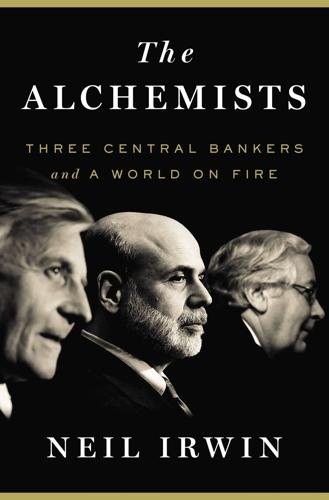
The Alchemists: Three Central Bankers and a World on Fire
by
Neil Irwin
Published 4 Apr 2013
“The full liberalisation of local public services and of professional services is needed,” the letter said—and that included “large-scale privatizations.” It also demanded “further reform [of] the collective wage bargaining system” that would allow employers to tailor wages and jobs to their needs more easily, as well as changes to the rules on hiring and firing of workers that would allow Italy to achieve smoother “reallocation of resources towards the more competitive firms and sectors.” Other demands included laws to enforce deficit reduction plans. It was all to be ratified by the Italian parliament by the end of September. “We trust that the Government will take all the appropriate actions,” wrote Trichet and Draghi.

The Rise and Fall of Nations: Forces of Change in the Post-Crisis World
by
Ruchir Sharma
Published 5 Jun 2016
These lessons say that an economy’s output is the simple sum of basic inputs, including land, labor, and capital. So what “structural reform” often entails is the creation of an efficient legal regime governing the purchase of land to build factories, the lending of capital to finance the construction of those factories, and the hiring and firing of workers to staff them. In Indonesia, a recent increase in public investment was made possible by the passage of a law that speeds the acquisition of land for everything from police stations to power plants and youth sports camps by setting deadlines of days or weeks for every step in a process that used to drag on for years.
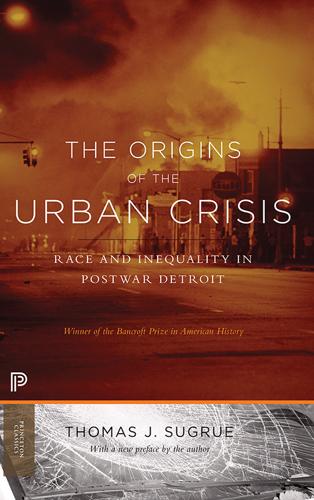
The Origins of the Urban Crisis
by
Sugrue, Thomas J.
The Big Three auto companies rejected the union-proposed antidiscrimination contract clause on the grounds that the union “cannot bargain for persons not yet employed.”36 Once blacks were hired, the contract provision that affected their employment patterns most was seniority. Seniority rationalized corporate hiring and firing practices by making length of service the primary criterion for layoff and rehiring. Seniority also served as a basis for promotion to better-paying jobs. Above all, seniority provided job security for a segment of the work force that had once been vulnerable to employers’ arbitrary layoff policies.

Troublemakers: Silicon Valley's Coming of Age
by
Leslie Berlin
Published 7 Nov 2017
“Young and dumb,” in her own description, she put her paycheck toward rent, food, clothes, and fun. If she had any money left over, she might buy some stock at the discounted employee rate, but that rarely happened. In 1977, she was promoted again, to manufacturing supervisor. She was twenty years old, supervising fifty women, many of them twice her age. She was responsible for hiring and firing and for helping to train new workers. At the same time, she continued to try to impress upon her own supervisor and the process engineers that she was more than just another assembler with a couple of promotions. She admits that for a while, she drove production too hard. Embracing her interpretation of Henry Ford’s mass production model, she repeated to herself, “If a person does one little thing as fast as possible, and does it over and over again, it maximizes production.”
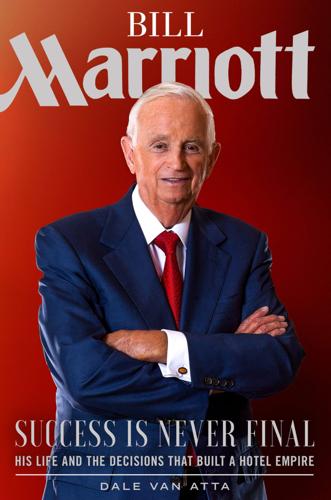
Bill Marriott: Success Is Never Final--His Life and the Decisions That Built a Hotel Empire
by
Dale van Atta
Published 14 Aug 2019
“Well, Willard, you’ve got quite a few blacks working for you, don’t you,” he commented. J.W. eyed his younger brother carefully and then responded, “Woody, I don’t discriminate against anybody. But I want to tell you something—those blacks are more religious and more dependable than some of the white trash I’ve hired and fired from the South. That’s why I hire so many of these men and women. They’re hardworking, loyal, honest, and more Christian than a lot of whites I’ve met!”12 • • • As 1938 drew to a close, Billy had good reason to be excited about an upcoming family event. His mother was expecting a baby.

The Survival of the City: Human Flourishing in an Age of Isolation
by
Edward Glaeser
and
David Cutler
Published 14 Sep 2021
In 1833, the governor of New York appointed Stephen Allen to be one of the new water commissioners. He was then elected the commission’s chairman and the great work of his life began. The aqueduct succeeded because the commission had a clear objective that was agreed to by all. It had a competent leader with a lifetime of political connections and know-how, who had the ability to hire and fire. An empowered, impatient boss is usually the first necessity to produce something great. Allen actually fired the project’s first engineer, a distinguished West Point professor, for moving too slowly. He admired the man as a “ripe scholar” and a “good mathematician,” but he came to believe that he did “not possess that practical knowledge,” which Allen “deemed necessary to carry on a work of so much importance to the City.”

Nexus: A Brief History of Information Networks From the Stone Age to AI
by
Yuval Noah Harari
Published 9 Sep 2024
Employers obviously don’t want to invest a lot of time and money in training a worker who quits or gets fired after a few months. Having defined the goal in such a way, it is time to go over the data. In chess, the algorithm can produce any amount of new data just by playing against itself. But in the job market, that’s impossible. Nobody can create an entire imaginary world where the baby algorithm can hire and fire imaginary people and learn from that experience. The baby algorithm can train only on an existing database about real-life people. Just as lion cubs learn what a zebra is mainly by spotting patterns in the real-life savanna, so baby algorithms learn what a good employee is by spotting patterns in real-life companies.

Character Limit: How Elon Musk Destroyed Twitter
by
Kate Conger
and
Ryan Mac
Published 17 Sep 2024
Twitter needed to become a more lax, anything-goes environment, Musk believed, and he was unwilling to wait for change. Agrawal was appalled. Musk didn’t seem to understand that, although he had signed a contract to buy Twitter, he didn’t own it yet. Until Musk’s money transferred, Agrawal was still the CEO, and he would hire and fire whoever he liked. He looked to Dorsey, who had worked in lockstep with Gadde for years, but Dorsey remained impassive. Agrawal refused. Gadde would stay, he said firmly. Musk was free to do whatever he wanted once he owned Twitter, but until then, Agrawal would call the shots. Musk was furious.
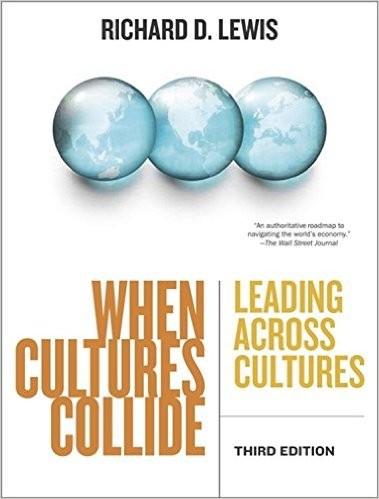
When Cultures Collide: Leading Across Cultures
by
Richard D. Lewis
Published 1 Jan 1996
Can the pedantic, linear German and the voluble, exuberant Brazilian really share a “globalized” view of, for instance, duty, commitments or personnel policies? How do the French reconcile their sense of intellectual superiority with cold Swedish logic or American bottomline successes? Will Anglo-Saxon hiring and firing procedures ever gain acceptability in people-orientated, multi-active Spain, Portugal or Argentina? When will product-oriented Americans, Britons and Germans come to the realization that products make their own way only in linear-active societies and that relationships pave the way for product penetration in multi-active cultures?

Antarctica
by
Kim Stanley Robinson
Published 6 Jul 1987
The treatment of Antarctica will never be respectful and environmentally aware if the people living down here continue to be organized in the same way they always have been-that is to say, in hierarchies where the majority of the workers have no power or responsibility, and are merely doing what they're told to do, for wages and nothing else. As it stands now, we're hired and fired at the whim of people back in the world, and the people who love Antarctica the most end up suffering the most, because they keep coming back here when that wrecks the overall shape of their lives, back and forth with no continuity or security, no career advantage so to speak. So there's a feeling of helplessness that creates a carelessness, which a lot of us wouldn't have if we were more in control of our destinies down here.

The Generals: American Military Command From World War II to Today
by
Thomas E. Ricks
Published 14 Oct 2012
If a man fails, send him back to General Ike and let him worry about it.” When Ike met the British intelligence officer who would replace the one he had fired, he instructed him that “if I thought anyone was not making the grade or was creating difficulties I was fully empowered to sack him on the spot. ‘Hire and fire’ was the slogan.” Patton made an impression on the frontline troops. It was hard not to notice him. Lt. Col. Westmoreland, leading his artillery battalion, was struck that “Patton would parade around with his boots, yellow britches, his Ike jacket, two pearl-handled revolvers, and a shiny helmet with three stars all over it.

Firepower: How Weapons Shaped Warfare
by
Paul Lockhart
Published 15 Mar 2021
For those princes who broke with Rome, “reform” meant confiscating Church lands, monasteries, cathedrals, and all the wealth accumulated within, even the incomes that rightfully belonged to the pope in Rome. It meant that secular rulers controlled their churches, that clergy were now civil servants, hired and fired and told what to do by their monarchs; it meant that the pulpit could now become a font of princely propaganda as well as of the Word of God. Catholic rulers benefited, too, mainly because the Church in Rome desperately needed their support in the battle for the soul of Europe. But more important, the Reformation provided European sovereigns with both an excuse and a reason to fight wars even more frequently.

The Bill Gates Problem: Reckoning With the Myth of the Good Billionaire
by
Tim Schwab
Published 13 Nov 2023
I also asked him about the foundation’s role in approving new hires at the IHME. “Do we allow sponsors to approve hiring or possibly firing—that sort of thing? No, we don’t—in the sense that the university is the employer, they are the employer of record, they are responsible for the employment, and they make final decisions over hiring and firing.” After the interview, I sent Giffels the grant agreement I had uncovered in which the university explicitly agreed to give the Gates Foundation approval rights over new hires for the institute’s executive leadership. The university then appeared to reverse course. UW spokesperson Victor Balta sent me an email saying that this kind of influence was normative and routine for donors to UW.

Empire of AI: Dreams and Nightmares in Sam Altman's OpenAI
by
Karen Hao
Published 19 May 2025
It’s the same loss of agency and anger I’ve seen etched on the faces of people globally when they throw so much of the little they have at challenging the empires’ narratives, and then watch as the people they are up against wield the kind of power that can deploy billions of dollars in capital, construct vast infrastructure, hire and fire tens of thousands of contractors, and, with a few soft-spoken words—at an event, to Congress, to heads of state, to journalists—smooth over the murmurs of protest in the way of their will. In Annie’s case, after Weil’s profile, she was no longer shouting into a void. As her tweets began to go viral in October 2022, they came to the attention of someone important: Ilya Sutskever, right as he was grappling with his own complex feelings about Altman and what he viewed as Altman’s patterns of abuse.

The Idea of Decline in Western History
by
Arthur Herman
Published 8 Jan 1997
At the University of Bonn, the sociologist Eduard Spranger claimed that the Nazi students represented a “genuine national movement,” even if their tactics were at times “undisciplined.”82 Although the new National Socialist government refused to grant its student supporters the power they demanded to hire and fire professors, it did make job tenure a matter of political ideology. Over seventeen hundred faculty members were dismissed as pacifists and leftists, while academic disciplines that the Nazis considered “impractical” or “apolitical” were stripped of funds and personnel. In these matters they had considerable help from faculty members themselves.
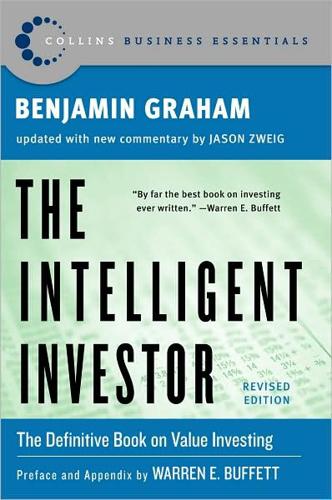
The Intelligent Investor (Collins Business Essentials)
by
Benjamin Graham
and
Jason Zweig
Published 1 Jan 1949
But the latest epidemic of scandal—allegations of managerial misbehavior, shady accounting, or tax maneuvers at major firms like AOL, Enron, Global Crossing, Sprint, Tyco, and WorldCom—is a stark reminder that Graham’s earlier warnings about the need for eternal vigilance are more vital than ever. Let’s bring them back and discuss them in light of today’s events. Theory Versus Practice Graham begins his original (1949) discussion of “The Investor as Business Owner” by pointing out that, in theory, “the stockholders as a class are king. Acting as a majority they can hire and fire managements and bend them completely to their will.” But, in practice, says Graham, the shareholders are a complete washout. As a class they show neither intelligence nor alertness. They vote in sheeplike fashion for whatever the management recommends and no matter how poor the management’s record of accomplishment may be….

The Great Leveler: Violence and the History of Inequality From the Stone Age to the Twenty-First Century
by
Walter Scheidel
Published 17 Jan 2017
The command economy of Manchuria, which had been under Japanese military occupation since 1932, provided a model. In spring 1938, the National General Mobilization Law gave the government wide-ranging powers to press the Japanese economy into service for the war effort (which soon escalated to total war, kokka sôryokusen): the ability to hire and fire, determine working conditions, produce, distribute, move and price goods, and settle labor disputes. In 1939, the Ordinance to Control Corporate Dividends and Capital Circulation restricted dividend increases. Farm rents and certain prices were frozen, and wages and land prices began to be regulated.

The Power Law: Venture Capital and the Making of the New Future
by
Sebastian Mallaby
Published 1 Feb 2022
For the next dozen years, she absorbed Hong Kong’s version of Anglo-American finance, moving from Price Waterhouse to an investment bank and then to a private-equity partnership.[42] Along the way, she invested in Chinese internet startups, including the early portal NetEase and an online jobs agency called ChinaHR. The experiences taught her how to bond with young founders, hire and fire chief executives, and help to build teams. When ChinaHR was eventually acquired by its American competitor, the English major from Sichuan earned $50 million. In 2005, Xu quit Hong Kong to establish Capital Today, her own Shanghai-based venture fund. She raised $280 million and went out to hunt for startups.
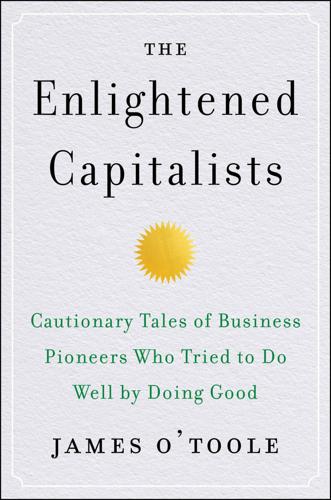
The Enlightened Capitalists
by
James O'Toole
Published 29 Dec 2018
The Lincoln Electric system puts the company at high risk of losing out to a competitor who develops a new, more efficient technology for welding because Lincoln’s employees are so wedded to what they have been doing for decades that they could not adapt to the change. Investors will not buy stock in companies offering Lincoln’s employee-friendly policies and so focused on the long term. It is a mistake to offer promises—such as bonuses and guaranteed employment—that a company may not be able to deliver. Executives need more flexibility to hire and fire than the Lincoln system allows. There are not enough people to hire who have the work ethic needed in a system like Lincoln’s. Few people today want to work at one company for their entire careers. Lincoln doesn’t pay its executives enough to attract the best and the brightest (in 2008 its CEO earned sixty-five times more than the company’s average worker, as opposed to three hundred plus times at Fortune 500 companies).

Elon Musk
by
Walter Isaacson
Published 11 Sep 2023
That provoked a class-action lawsuit from some Tesla shareholders, causing Musk to become obsessed with juicing up the business in order to justify the acquisition in court. He fired his cousins, who had focused on door-to-door sales schemes rather than making a good product. “I fucking hate my cousins,” he told Kunal Girotra, one of the four chiefs of Tesla Energy he hired and fired over the subsequent five years. “I don’t think I ever will ever speak to them again.” He cycled through leaders by demanding miraculous growth in roof installations, giving them insane deadlines for delivering, and firing them when they didn’t. “Everybody was super scared of him,” says Girotra, who describes one meeting where Musk got so mad that he started banging on the table while calling him a “fucking failure.”

The Rough Guide to Paris
by
Rough Guides
Published 1 May 2023
On 1 May, some eight hundred thousand people packed the boulevards of Paris in the biggest demonstration the capital had seen since the student protests of 1968. Two weeks later, in the run-off, Chirac duly triumphed, winning 90 percent of the vote in Paris. With such a mandate, Chirac and his reformed and renamed UMP party decided to take on the public sector: first pensions and unemployment benefits, then worker-friendly hiring and firing rights, and finally the world-leading health service. Again, hundreds of thousands came out onto the streets in protest. More trouble came when Chirac declared in March 2003 that he would veto any UN resolution that contained an ultimatum leading to war in Iraq. The cherished but often fragile Franco-American relationship collapsed, catastrophically, and American tourists seemed to vanish from the capital.
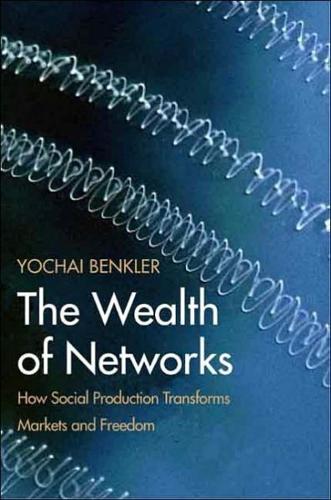
The Wealth of Networks: How Social Production Transforms Markets and Freedom
by
Yochai Benkler
Published 14 May 2006
As the following three decades unfolded and the South was gradually forced to change its ways, the cultural domain continued to work out the meaning of race relations in the United States and the history of slavery. The actual slogging of regulation of discrimination, implementation of desegregation and later affirmative action, and the more local politics of hiring and firing were punctuated throughout this period by salient iconic retellings of the stories of race relations in the United States, from Guess Who's Coming to Dinner? to Roots. The point of this chapter, however, is not to discuss race relations, but to understand culture and cultural production in terms of political theory.

The Rise of the Network Society
by
Manuel Castells
Published 31 Aug 1996
According to the government’s labor status definitions, “part-time” workers are those considered as such by the company.125 In fact, they work almost full-time (6 hours a day, compared to 7.5 hours for regular workers), although the number of working days in a month is slightly less than for regular workers. Yet they receive, on average, about 60 percent of a regular worker’s salary, and about 15 percent of the annual bonus. More importantly, they have no job security, so they are hired and fired according to the company’s convenience. Part-timers and temporary workers provide the required labor flexibility. Their role has substantially increased since the 1970s, when the oil shock induced major economic restructuring in Japan. In the 1975–90 period, the number of part-time workers increased by 42.6 percent for male workers and by 253 percent for female workers.

Empire of Guns
by
Priya Satia
Published 10 Apr 2018
A Minories gunsmith: TNA: WO 47/30: OM, February 27, 1716/7, 50; WO 47/30 generally. As he waited: GL: MS5220/7: CM, 1716–32, February 27, 1717, 26. “who have behaved”: Blackmore, British Military Firearms, 49. Daymen were permanent staff, earning benefits; piece men were paid by the piece and hired and fired as needed. Assistant viewers were: TNA: WO 47/30: OM, March 21, 1718, 72. two hundred to fewer than: Bailey, British Board of Ordnance Small Arms Contractors, 17. The new system was: N. Brown, British Gunmakers, 156–57, 227. Its governing committee decided how many fusils to purchase based on projected factory requirements.
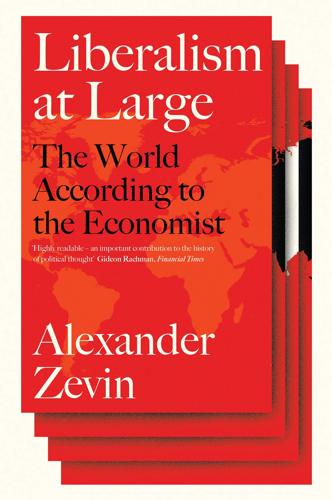
Liberalism at Large: The World According to the Economist
by
Alex Zevin
Published 12 Nov 2019
The latter agreed to a joint purchase, but also to a structure of ownership and control designed, as Layton put it, to allow ‘the editor to run the paper as though it belonged to him’.101 In a charter that went further than a similar scheme at the Times, the editor obtained power over policy, salaries, hiring and firing. For an added layer of insulation from business pressure, four trustees without financial stakes in the company would be needed to take on or dismiss the editor, approve share transfers or install a chairman. Bracken became managing director and took two board seats for Financial News Limited.
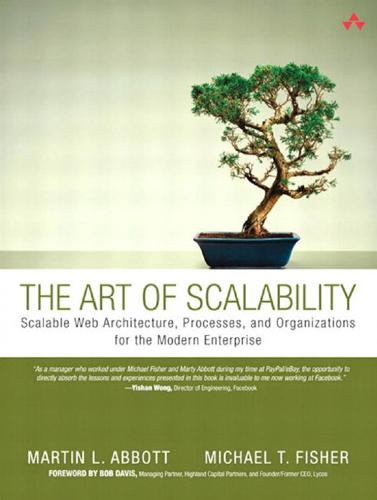
The Art of Scalability: Scalable Web Architecture, Processes, and Organizations for the Modern Enterprise
by
Martin L. Abbott
and
Michael T. Fisher
Published 1 Dec 2009
The best leaders accept that they are at least part of the problem, and we believe that the very best leaders believe that they are the source of most problems. It absolutely may be the case, and often is the case, that other people need to be fired in order to get the problem fixed. But if the business is constantly hiring and firing technology leaders, at the very least, they owe it to the shareholders to consider themselves part of the problem. To get back on point, however, note how many of the preceding questions can be easily traced back to education and experience. For instance, if you are getting consistent answers throughout from your team, maybe it is the case that you just do not understand what they are saying.

Steve Jobs
by
Walter Isaacson
Published 23 Oct 2011
Jobs also attacked America’s education system, saying that it was hopelessly antiquated and crippled by union work rules. Until the teachers’ unions were broken, there was almost no hope for education reform. Teachers should be treated as professionals, he said, not as industrial assembly-line workers. Principals should be able to hire and fire them based on how good they were. Schools should be staying open until at least 6 p.m. and be in session eleven months of the year. It was absurd, he added, that American classrooms were still based on teachers standing at a board and using textbooks. All books, learning materials, and assessments should be digital and interactive, tailored to each student and providing feedback in real time.

The Meritocracy Trap: How America's Foundational Myth Feeds Inequality, Dismantles the Middle Class, and Devours the Elite
by
Daniel Markovits
Published 14 Sep 2019
Indeed, only 20 percent of employers report that total hourly costs are lower for temporary, part-time, or contract workers than for permanent employees. The principal benefit firms receive from replacing permanent with temporary workers concerns not direct costs but rather flexibility. Temporary workers can be hired and fired as permanent workers cannot be. Cappelli, The New Deal at Work, 140. See also Susan N. Houseman, “Temporary, Part-Time, and Contract Employment in the United States,” Department of Labor, November 1996, http://citeseerx.ist.psu.edu/viewdoc/download?doi=10.1.1.210.2922&rep=rep1&type=pdf. The vast structural shift away from permanent employees and toward subcontractors is driven less by savings on direct compensation and more by managerial efficiencies, associated with the flatter hierarchies and rising elite powers of command that the main text elaborates.
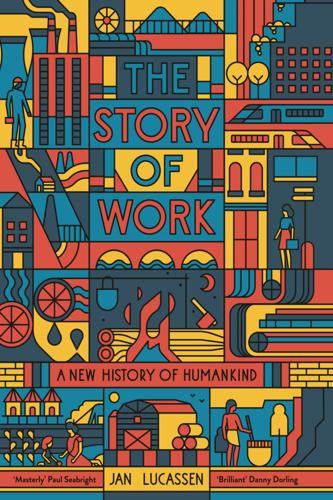
The Story of Work: A New History of Humankind
by
Jan Lucassen
Published 26 Jul 2021
This means that, on average, employees only change employer a few times in their working life. Such commitment to the company varies per country, however. It is strongest in Japan, followed by France and the Netherlands, but much lower in the US, Canada and Australia (with an average employee tenure of around seven years). In the US, it was a long time before the traditional hiring and firing by the foreman was replaced. Under the influence of scientific management, welfare initiatives and vocational schooling, personnel (later renamed ‘Human Relations’ or HR) departments became the rule in big industry in two waves, in the two world wars – partially to take the wind out of the sails of the trade unions, partially to accommodate them.130 Consequences for the autonomy of the wage worker The most drastic change for industry workers was that increasing numbers of them could no longer work at home and therefore completely at their own discretion, but instead had to carry out the orders of others every day in factories and offices.

The Golden Passport: Harvard Business School, the Limits of Capitalism, and the Moral Failure of the MBA Elite
by
Duff McDonald
Published 24 Apr 2017
In 1993–94, a boom year for the economy, nearly half of all firms laid off an average of 10 percent of their workforce.6 “Not only did the uppermost managers of the nineties now receive compensation packages that towered over those of their predecessors,” observes Thomas Frank, “but as Wall Street placed a very predictable value on layoffs and downsizing, CEOs often saw their own pay rise in direct proportion to the number of employees they could expel from the firm. . . . This equation was the origin of many of the big management ideas of the decade: delayering, disaggregating, outsourcing, reengineering, disintermediating.”7 Having achieved most of their objectives—including the freedom to hire and fire at will and the weakening of regulations—it is at this point, Mizruchi argues, that the American corporate elite lost any vestiges of cohesiveness, whether that was its moderately liberal stance of the postwar years, or its viciously probusiness response to the economic crisis of the 1970s. Of course, the lack of any discernible national cohesiveness might simply be the result of the fact that they’ve gone global—not the companies, but the people who run them.
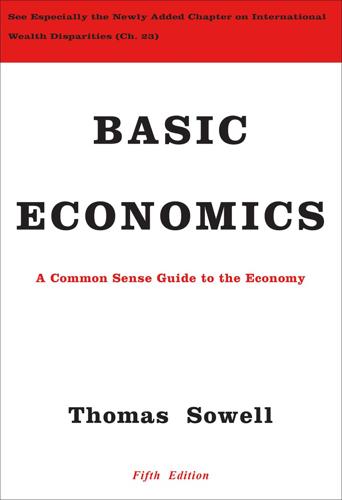
Basic Economics
by
Thomas Sowell
Published 1 Jan 2000
Corporate Governance Unlike other kinds of businesses, where those who own the enterprise also manage it, a major corporation has far too many stockholders for them to be able to direct its operations. Executives are put in charge of corporate management, hired and if need be fired by a board of directors who hold the ultimate authority in a corporation. This arrangement applies beyond business enterprises. Colleges and universities are usually also managed by administrators who are hired and fired by a board of trustees, who hold the ultimate legal authority but who do not manage day-to-day operations in the classrooms or in academic administration. Like limited liability, the separation of ownership and management is a key characteristic of corporations. It is also a key target of critics of corporations.

Wanderers: A Novel
by
Chuck Wendig
Published 1 Jul 2019
The others were outside—Martin was about to give, or was perhaps already giving, the day’s orders and something resembling a pep talk. Benji didn’t need it. He wasn’t even working for the CDC—Loretta, understandably, had tried having him removed from the scene, but Sadie overruled it, saying that Benex-Voyager had sovereignty when it came to hiring and firing and how they chose to utilize Black Swan in what she termed “a live-action beta test” of its field capabilities. (And in fact, that’s where Sadie was right now: back in Atlanta, meeting with Loretta, reporting on Black Swan’s effectiveness.) Most surprising of all was that Martin Vargas went to bat for Benji.

EuroTragedy: A Drama in Nine Acts
by
Ashoka Mody
Published 7 May 2018
But Trichet and the ECB had made matters much worse by triggering a financial crisis in a misguided pursuit of price stability. From what high ground could the ECB prescribe policy to national governments? The letter to Berlusconi, signed also by Draghi, laid out a detailed economic program for Italy to follow. Besides the customary call for making it easier to hire and fire workers, the big focus was on more fiscal austerity. The austerity plan adopted just a few weeks earlier was not sufficient, Trichet and Draghi said; the budget deficit needed to be brought down faster, and if the targets were not met, additional expenditure cuts should automatically kick in. The letter even specified parliamentary action and a constitutional 300 e u r o t r a g e d y amendment to enforce these policies.
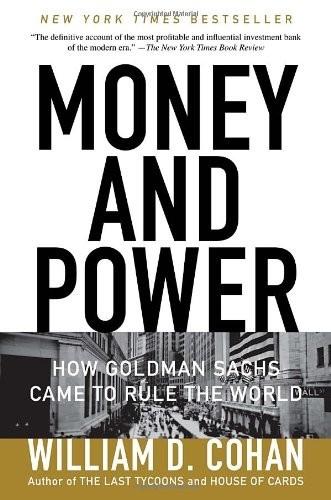
Money and Power: How Goldman Sachs Came to Rule the World
by
William D. Cohan
Published 11 Apr 2011
The crux of the government’s case was that these seventeen firms conspired against the rest of the investment banking industry and their corporate clients to control the fees and other financial benefits that could be gained through the underwriting of the debt and equity securities of their corporate clients. As to the fact that executives at the corporations issuing the securities would be able to decide, at their sole discretion, which banks to hire and fire and when, the complaint alleged that to “preserve and enhance their control over the business of merchandising securities,” the banks kept “control over the financial and business affairs of the issuers, by giving free financial advice to issuers, by infiltrating the boards of directors of issuers, by selecting officers of issuers who were friendly to them [and] by utilizing their influence with commercial banks with whom issuers do business.”

The Wars of Afghanistan
by
Peter Tomsen
Published 30 May 2011
American policymakers should know by now that foreign cash outlays to Afghans cannot buy their loyalty, induce them to support the government, or unify the country. Stop choosing Afghan leaders. This practice was rampant during the Bush administration, boosting the image of Afghanistan as, once again, a foreignoccupied country. The outside pressures to hire and fire senior Afghan officials diminished after the food fight President Karzai conducted with Washington during President Obama’s first fifteen months in office. Now, as the U.S.-led coalition reduces its presence in Afghanistan, its diplomats and generals should privately convey their opinions on personnel matters to the Afghan leadership, President Karzai and his successors, then honor their legitimate authority to make the final decision.

A Man in Full: A Novel
by
Tom Wolfe
Published 31 Mar 2010
She had made a stab at pushing her black hair back from her face, but it was almost as big a mess as Jarmaine's and Nina's. She was barefoot. She was carrying a little bundled armful. It was Heidi, the Filipino nanny, carrying Miss Kingsley Croker. The bare feet were not the result of haste, however. Heidi was the most proper nanny they had had in the house in eleven months of hiring and firing nannies, hut she always went about in bare feet. That detail Charlie always noticed. It reminded him of a book he'd seen once in the library at Tech. It was a picture book of the kilts and full regalia of the Scottish clans. It was full of lovingly colorful illustrations of Scottish lairds dressed up to beat the band—all of them with bare legs, big knotty calves, and bare feet.

Behave: The Biology of Humans at Our Best and Worst
by
Robert M. Sapolsky
Published 1 May 2017
As compared with low-status controls, these folks had lower basal glucocorticoid levels, less self-reported anxiety, and an enhanced sense of control (this telling us nothing, however, as to which came first—the rank or the unstressed profile).24 Baboons redux. But something subtler was happening. The authors deconstructed high rank with three questions: (a) How many people ranked lower than the subject in his organization? (b) How much autonomy did he have (e.g., to hire and fire)? (c) How many people did he directly supervise? And high rank came with low glucocorticoids and anxiety only insofar as the position was about the first two variables—lots of subordinates, lots of authority. In contrast, having to directly supervise lots of subordinates did not predict those good outcomes.

The London Compendium
by
Ed Glinert
Published 30 Jun 2004
Christina Foyle took over as owner of the shop in 1963, after her father died, and over the next thirty years Foyle’s became a byword for cultivated chaos, the art of finding volumes made more enticing by the vast size of the shop, but also more exasperating by the arranging of novels by publisher, rather than author. Staff were hired and fired on an erratic basis, successful applicants rarely stayed, or were allowed to stay, longer than six weeks, trade unions were outlawed, women were confined to cashier jobs, and there was a glut of people with unusual classical names. (When one customer asked where he could find Ulysses he was told he had just gone out to lunch.)

The power broker : Robert Moses and the fall of New York
by
Caro, Robert A
Published 14 Apr 1975
Let him have the money—let him keep control of the authorities' revenues—and he, this man who had mastered the intricacies of civil service as well as any man who ever lived, would be able to devise a hundred ways to manipulate Civil Service Commission rulings to his own ends. He would be able to attract to his service the men his sharp eyes had picked out of the herd, to hire and fire them as he pleased, to provide them with material rewards huge enough to make them endure his driving and his demands and to guarantee their absolute loyalty. And he would be able to hire men not only for specific but for general purposes. He would be able to have, at last, his stable planning force.
…
Says one observer of the New York political scene: "Whenever Moses made a proposal—and I mean over a period of years and years and years—you could invariably be sure that behind the scenes, the banks would be pushing for that proposal. Pushing hard." It wasn't just bankers' grays that Robert Moses had marching behind him; it was blue collars and hard hats, too. Despising working men and their organizations and desiring to drive men, to hire and fire them as he pleased, to hold their economic fate at his mercy, he had naturally despised labor unions; let her invoke whatever laws she chose, he had told Frances Perkins during the Thirties, no union bricklayer would ever work at Jones Beach. But by the postwar Forties, labor unions had acquired immense power in New York.

The Transformation Of Ireland 1900-2000
by
Diarmaid Ferriter
Published 15 Jul 2009
But he was also brave in deciding to transfer the fixing of constituency boundaries from local government to a non-party commission, making it much more difficult for his own party to achieve an overall majority, and he insisted on putting a motion to the Fianna Fáil party, reaffirming the right of the Taoiseach to hire and fire ministers. As the first Taoiseach with no Civil War baggage, Lynch’s political rise had represented a discernible break with the past, and: Lynch was fond of pointing out in later years that the War of Independence hero, Tom Barry, who ran in the 1946 by-election, polled fewer votes than Communist Party candidate Michael O’Riordan.

The Pursuit of Power: Europe, 1815-1914
by
Richard J. Evans
Published 31 Aug 2016
He readmitted the previously banned Jesuits, imposed strict censorship, and restored to the aristocracy and the Church the land seized during the Napoleonic occupation. Ministers were made individually and directly responsible to the king, and barred from discussing policy collectively. Fernando hired and fired them at will, resulting in an average tenure of ministerial office between 1814 and 1820 of no more than six months. To last any length of time government ministers had to demonstrate their allegiance to reactionary principles in the most open ways possible. The War Minister General Francisco de Eguia (1750–1827) signalled his adherence to the ancien régime by wearing an eighteenth-century wig.
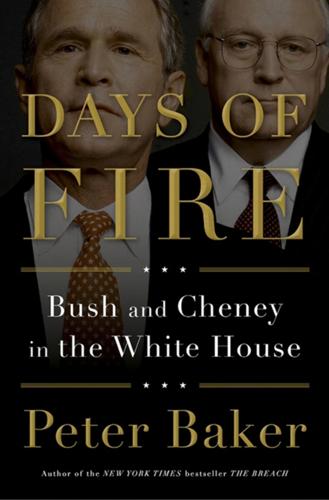
Days of Fire: Bush and Cheney in the White House
by
Peter Baker
Published 21 Oct 2013
JUST AS HE turned to Cheney after September 11, Bush tried to enlist his vice president to help respond to Katrina. But this time, he was rebuffed. Natural disasters were not a Cheney specialty, nor was public empathy. When Bush told Card to ask Cheney to head a task force overseeing relief efforts, the vice president said he would only if he had real authority and could hire and fire people. He quickly concluded, however, that it was a “primarily symbolic” assignment and made clear he was not interested. “I would be a figurehead without the ability really to do anything about the performance of the federal agencies involved,” he recalled. Bush was no longer ceding power to his vice president the way he had in his first term.
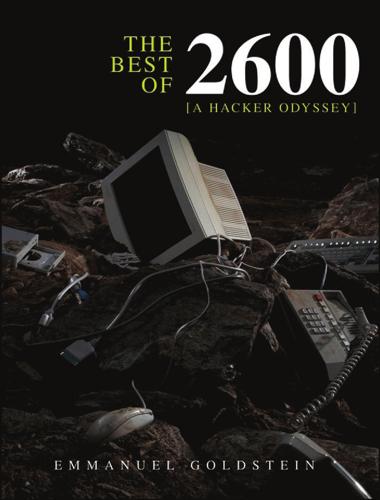
The Best of 2600: A Hacker Odyssey
by
Emmanuel Goldstein
Published 28 Jul 2008
The hostnames I found were: • • • • toolkit: 168.94.67.20 tagzone: 168.94.67.11 msizone: 168.94.3.46 cf: 168.94.9.17 toolkit, from my experience, isn’t viewable from a floor computer at least. tagzone is a corporate home page, giving you the latest news on the company and the market. msizone is some type of retailer information center, which requires a login/password pair. cf is either customer fulfillment or computer fulfillment—I’m not sure since it’s called both on the site. tagzone and cf are the two coolest sites to browse. tagzone, as was mentioned, is a corporate home page. But as you explore it, more than just news is available. I was able to get instructions on how to log on to the company’s VPN, how to hire and fire employees, and how the company is structured. Let us assume for a second that Best Buy didn’t want the public to see this. Then who the hell didn’t think that maybe putting floor machines behind the corporate firewall is a bad idea? But I digress.... cf is a site that allows employees to order items not in store to be shipped from the mysterious “Warehouse 87.”

The Rough Guide to France (Travel Guide eBook)
by
Rough Guides
Published 1 Aug 2019
Reforms, resistance and riots Faced with an ageing population, unemployment flatlining at around ten percent and a budget deficit persistently exceeding the eurozone’s three-percent ceiling, the newly confident Right decided it would reform the public sector once and for all. First to go under the knife would be the state’s generous pensions and unemployment benefits, then worker-friendly hiring and firing rights, and finally the world-leading health service. Most of France saw the programme less as prudent milk-rationing and more as the sending of their sacred cows to slaughter. By mid-May 2003, two million workers were out on strike; and on May 26 half a million protested in the streets of Paris.